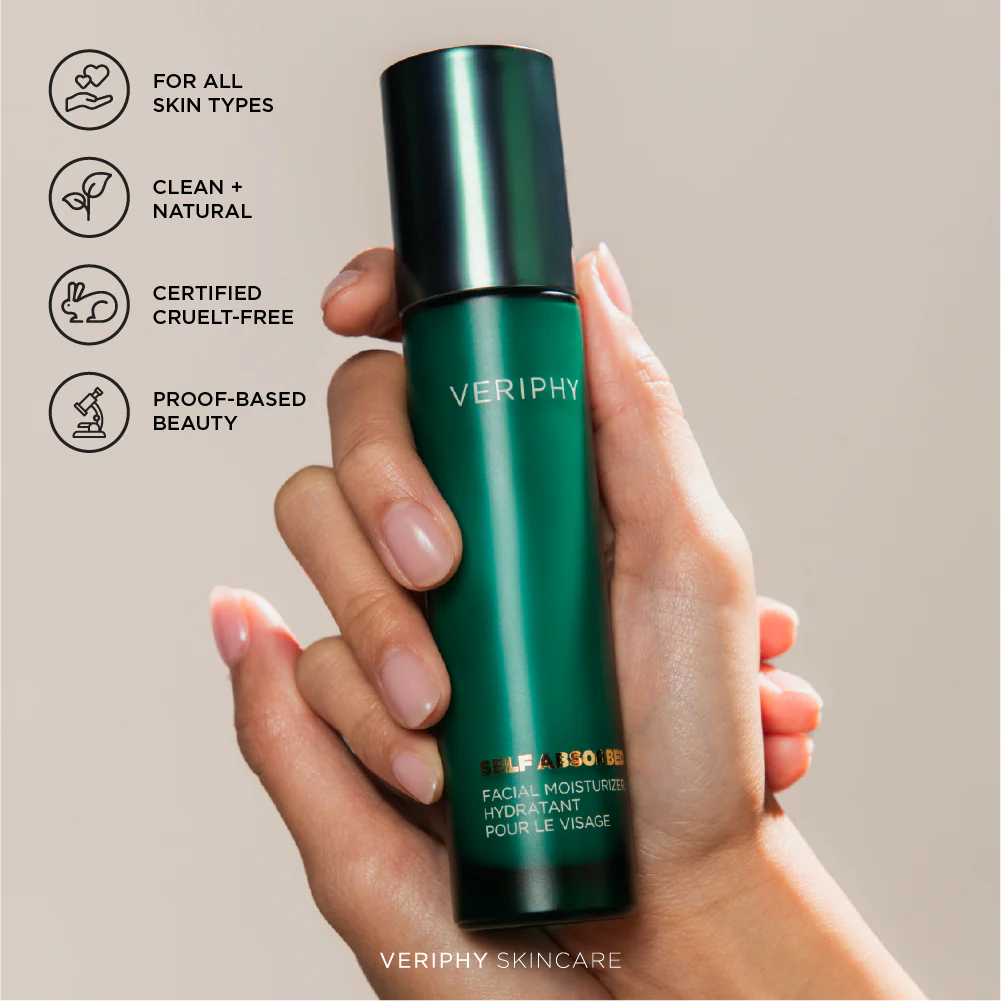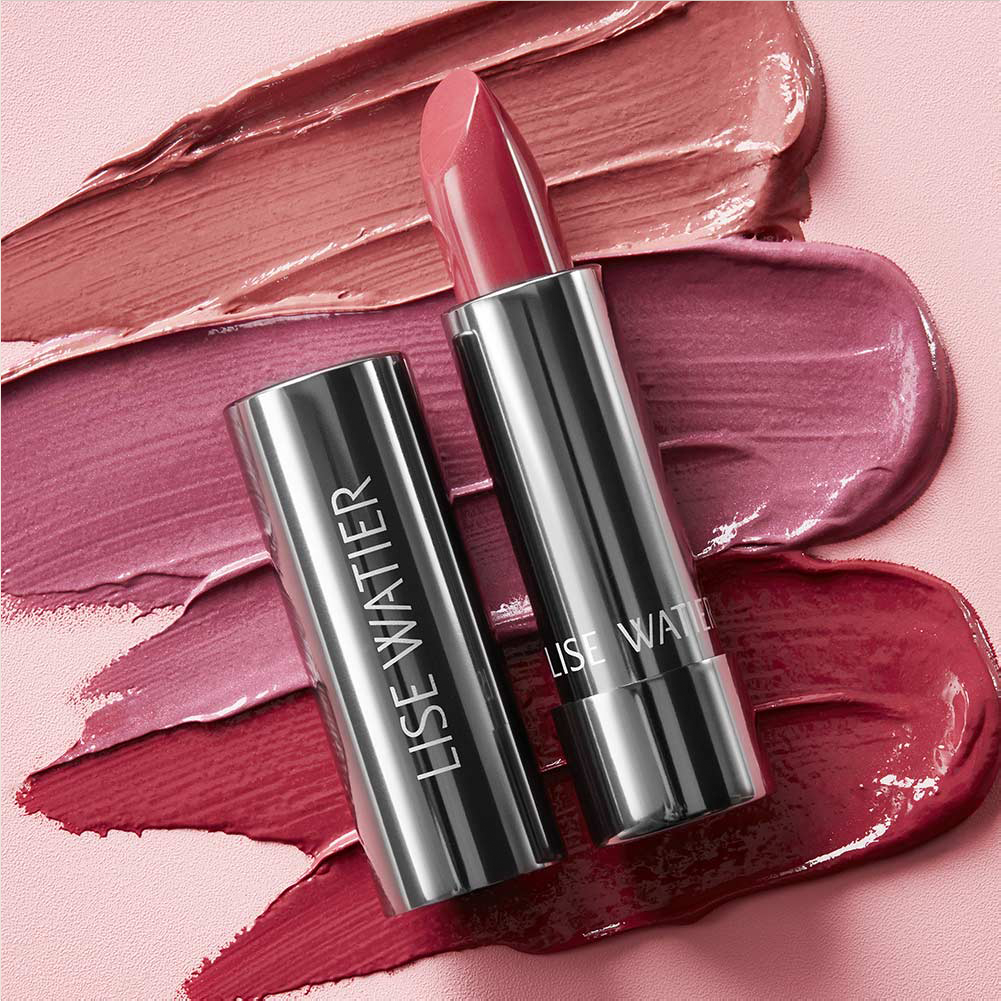- Details
- Written by: Reveal Magazines

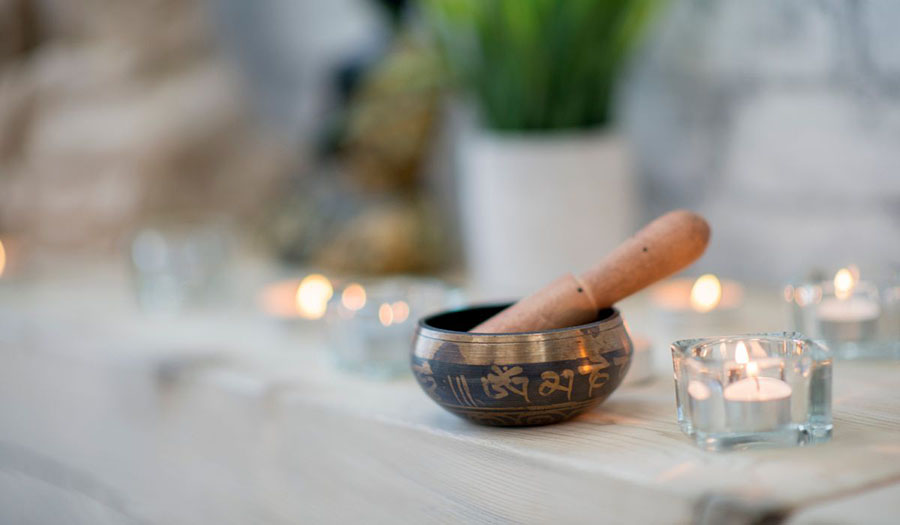
- Details
- Written by: Reveal Magazines
Cultivating mindfulness has become increasingly important for maintaining mental well-being and finding balance amidst the chaos of daily life. Mindfulness is the practice of being present and fully engaged in the moment, without judgment. Let's explore practical steps you can take to incorporate mindfulness into your everyday life, allowing you to experience greater clarity, peace, and happiness.
Step 1: Set Intentions Begin by setting clear intentions for integrating mindfulness into your daily routine. Whether it's reducing stress, improving focus, or enhancing relationships, clarifying your goals will provide direction and motivation for your mindfulness journey.
How to Apply: Take a few minutes each morning to reflect on your intentions for the day. Write down one or two mindfulness-related goals, such as "I will practice patience during my commute" or "I will take mindful breaks throughout the day to reset and refocus."
Step 2: Start Small Incorporating mindfulness doesn't require hours of meditation each day. Start with small, manageable practices that fit into your schedule. Begin your day with a few minutes of mindful breathing or choose a daily activity, such as eating or walking, to do mindfully.
How to Apply: Choose a daily activity to do mindfully, such as brushing your teeth, taking a shower, or drinking your morning coffee. Focus on the sensations, sounds, and smells associated with each activity, allowing yourself to fully experience the present moment.
Step 3: Practice Mindful Breathing One of the simplest yet most powerful mindfulness practices is mindful breathing. Find a quiet space, sit comfortably, and focus your attention on your breath. Notice the sensation of each inhale and exhale, allowing thoughts to come and go without attachment.
How to Apply: When feeling stressed or overwhelmed, take a pause and practice a few minutes of mindful breathing. Close your eyes, place your hand on your abdomen, and focus on the rise and fall of your breath. Notice how your body responds as you breathe deeply and slowly.
Step 4: Engage Your Senses Practice mindfulness by engaging your senses in everyday activities. Whether it's savoring the flavors of a meal, feeling the warmth of sunlight on your skin, or listening to the sounds of nature, bring awareness to the present moment through your senses.
How to Apply: During your lunch break, take a mindful walk outside. Notice the colors of the leaves, the feeling of the wind on your skin, and the sounds of birds chirping. Allow yourself to fully immerse in the present moment, letting go of any distractions or worries.
Step 5: Cultivate Gratitude Gratitude is an essential aspect of mindfulness that can shift your focus from what's lacking to what's abundant in your life. Take time each day to reflect on three things you're grateful for, whether it's a simple pleasure or a meaningful connection.
How to Apply: Keep a gratitude journal by your bedside and take a few moments each night to write down three things you're grateful for that day. It could be as simple as a delicious meal, a kind gesture from a friend, or a beautiful sunset.
Step 6: Embrace Mindful Movement Movement can be a powerful way to cultivate mindfulness. Whether it's yoga, tai chi, or simply going for a walk, engage in activities that allow you to connect with your body and breath, fostering a sense of presence and relaxation.
How to Apply: Attend a yoga class or follow an online yoga video at home. Pay attention to your breath as you move through each pose, allowing it to guide your movements and create a sense of flow and ease in your body.
Step 7: Practice Non-Judgment Mindfulness involves observing your thoughts and emotions without judgment or attachment. Notice when judgment arises and gently redirect your attention to the present moment with compassion and acceptance.
How to Apply: Notice when you start to judge yourself or others throughout the day. Instead of getting caught up in negative thoughts, practice self-compassion and understanding. Remind yourself that it's okay to make mistakes and that each moment is an opportunity for growth.
Step 8: Find Support Seek support from community or resources that align with your mindfulness journey. Whether it's joining a meditation group, attending mindfulness workshops, or using mindfulness apps, surround yourself with like-minded individuals who can offer encouragement and guidance.
How to Apply: Reach out to friends or family members who are also interested in mindfulness and schedule regular check-ins or mindfulness activities together. Having a support system can provide encouragement and accountability on your mindfulness journey.
Step 9: Be Patient and Persistent Cultivating mindfulness is a lifelong journey that requires patience and persistence. Be gentle with yourself as you navigate the ups and downs of the practice, knowing that each moment offers an opportunity for growth and learning.
How to Apply: Understand that cultivating mindfulness is a gradual process that takes time and practice. Be patient with yourself on days when you find it challenging to stay present or when old habits resurface. Remember that each moment is an opportunity to begin again.
Step 10: Integrate Mindfulness into Daily Life Finally, integrate mindfulness into all aspects of your life, from work to relationships to leisure activities. By bringing awareness and presence to each moment, you'll experience greater fulfillment, clarity, and joy in your everyday experiences.
How to Apply: Incorporate mindfulness into your daily routines, such as mindful eating during meals, practicing deep breathing exercises during stressful moments, or taking short mindfulness breaks at work. By making mindfulness a part of your everyday life, you'll experience its benefits more fully and consistently.
By following these practical examples of mindfulness in your daily life, you can deepen your practice and experience greater peace, clarity, and joy in each moment. Remember that mindfulness is not just a concept but a way of living—a choice you make to bring awareness and presence to every aspect of your life.

- Details
- Written by: Reveal Magazines
In a world often characterized by hustle and bustle, acts of kindness stand out as beacons of light, reminding us of our shared humanity. The power of kindness lies not only in its ability to brighten someone else's day but also in its profound impact on the giver's well-being. Research consistently shows that acts of kindness contribute to increased happiness, reduced stress, and enhanced overall mental health. Let's explore the transformative power of acts of kindness and provide you with 30 suggested random acts of kindness that anyone can easily incorporate into their daily lives.
The Ripple Effect of Kindness
Kindness, whether big or small, has a ripple effect that extends far beyond the initial interaction. When you perform an act of kindness, you create a positive chain reaction, influencing not only the recipient but also those who witness the gesture. This ripple effect can contribute to the formation of a more compassionate and supportive community. Beyond the positive change that acts of kindness bring upon others, you will experience benefits of your own, such as:
Enhanced Well-being: Engaging in acts of kindness has been linked to increased levels of serotonin, the neurotransmitter associated with feelings of well-being and happiness.
Stress Reduction: Kindness triggers the release of oxytocin, a hormone that helps reduce stress and promote overall emotional stability.
Improved Mental Health: Regularly practicing kindness is associated with a decreased risk of depression and anxiety, contributing to better mental health.
Increased Social Connection: Acts of kindness strengthen social bonds and foster a sense of connection with others, reducing feelings of loneliness.
Boosted Immune System: The positive emotions associated with kindness have been shown to have a positive impact on the immune system, contributing to better physical health.
Ready to get out in the community and positively impact the lives of others? Here are some suggestions to get you going.
- Create a Personalized Playlist for a Friend: Curate a playlist that reflects their tastes and includes songs with special meanings or memories.
- Write and Share Your Personal Success Stories: Open up about your challenges and triumphs to inspire and connect with others facing similar struggles.
- Craft Handmade Gifts for Loved Ones: Spend time creating a thoughtful, handmade gift that reflects your love and appreciation for the recipient.
- Host a Virtual Movie Night for Friends or Family: Organize a movie night with a theme, and create a shared experience even if you're physically apart.
- Initiate a Book Exchange: Share your favourite books with friends or colleagues, including a note explaining why each book is meaningful to you.
- Organize a Community Clean-Up Event: Mobilize people in your community to come together for a clean-up event, fostering a sense of collective responsibility.
- Share Your Talents with the Elderly: Offer to perform music, share stories, or engage in activities at a local senior center to brighten the day of older community members.
- Create Positive Affirmation Cards: Make personalized affirmation cards for friends or family, highlighting their strengths and positive qualities.
- Organize a Skill-Sharing Workshop: Host a workshop where individuals can share their unique skills and knowledge, promoting a sense of community learning.
- Start a Gratitude Journal Exchange: Share a gratitude journal with a friend or family member, taking turns adding daily entries of things you're thankful for.
- Host a Virtual Fitness Challenge: Encourage friends to participate in a fitness challenge together, promoting health and well-being in a supportive community.
- Donate Gently Used Books to a Local School: Contribute to literacy by donating gently used books to a local school, accompanied by a note of encouragement for the students.
- Create Inspirational Art for Public Spaces: Paint uplifting messages or create inspiring artwork on public walls or spaces to bring positivity to the community.
- Start a Community Garden: Collaborate with neighbours to establish a community garden, promoting sustainable living and a sense of shared responsibility.
- Organize a Clothing Swap Event: Host a clothing swap where individuals can exchange clothes, fostering sustainability and community connection.
- Offer to Babysit for a Stressed Parent: Provide a helping hand to a parent in need by offering to babysit, allowing them some much-needed time for self-care.
- Initiate a "Pay It Forward" Campaign: Encourage a chain of kindness by initiating a "pay it forward" movement, where each person performs an act of kindness for someone else.
- Write Letters to Healthcare Workers: Express gratitude to healthcare workers by writing heartfelt letters, recognizing their dedication and sacrifices.
- Host a Virtual Talent Show: Organize a virtual talent show where individuals can showcase their talents and receive positive feedback from the community.
- Create and Share a Community Cookbook: Compile recipes from community members to create a cookbook, celebrating the diversity of culinary traditions within your neighborhood.
- Offer Career Mentorship: Extend mentorship to someone aspiring in your field, sharing insights and advice to help them navigate their career path.
- Send Encouraging Messages to Students: Reach out to students with words of encouragement during exam periods, offering support and motivation.
- Create DIY Self-Care Kits: Assemble self-care kits with items like scented candles, bath salts, and encouraging notes, and distribute them to friends or community members.
- Organize a Virtual Support Group: Facilitate a virtual support group for individuals facing similar challenges, providing a space for shared experiences and encouragement.
- Start a Community Book Club: Establish a book club within your community to promote reading, discussion, and a sense of belonging.
- Donate Pet Supplies to Animal Shelters: Support local animal shelters by donating pet supplies, accompanied by a note expressing care for the furry friends awaiting adoption.
- Create Braille or Large Print Books: Contribute to accessibility by creating Braille or large print versions of books for visually impaired individuals.
- Offer to Do Grocery Shopping for Elderly Neighbors: Assist elderly neighbours by offering to do their grocery shopping, ensuring they have access to essentials without leaving their homes.
- Initiate a Neighborhood Exchange Program: Facilitate a program where neighbours can exchange skills or services, fostering a sense of mutual support.
- Record Personalized Voice Messages: Record uplifting voice messages for friends or family members, providing a personal touch to brighten their day.
Acts of kindness, no matter how small, have the power to create a positive and lasting impact on both individuals and communities. By incorporating these suggested random acts of kindness into your daily life, you not only contribute to the well-being of others but also experience the transformative power of kindness within yourself. In a world that can sometimes seem chaotic, let kindness be the guiding force that connects us all.
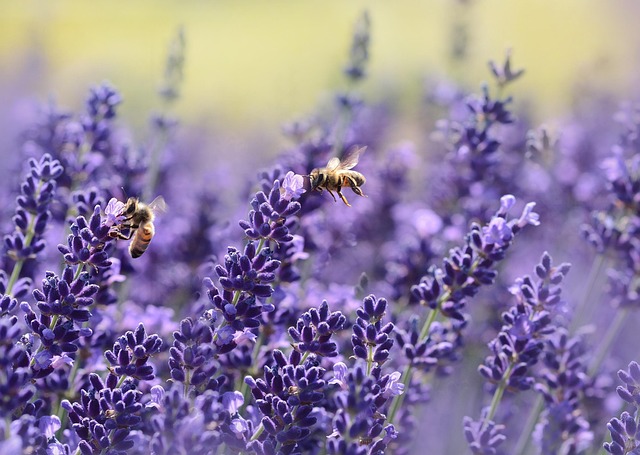
- Details
- Written by: Pulse Point Unit
May is a perfect time for homeowners to refresh their gardens, and one of the most impactful ways to do so is by planting with pollinators in mind. A pollinator-friendly garden not only adds vibrant beauty to your yard but also supports the essential work of bees, butterflies, and other beneficial insects.
According to the David Suzuki Foundation, native plants such as milkweed, bee balm, black-eyed Susans, and coneflowers provide vital food sources for pollinators and require less maintenance since they are adapted to local climate conditions. These plants are naturally pest-resistant and drought-tolerant, making them a smart, sustainable choice for gardeners.
Creating a pollinator-friendly garden also involves rethinking how we approach lawn care. Avoiding pesticides and herbicides ensures that pollinators are not exposed to harmful chemicals. Adding features such as a bee bath—a shallow dish filled with water and pebbles for bees to land on—can also help sustain local pollinator populations.
Companion planting is another effective technique. For example, planting lavender near vegetable beds can help attract pollinators that support food production. Shrubs like elderberry or serviceberry can provide shelter and nesting opportunities for native bees and birds.
May is an ideal time to start, as most plants begin their growing season now and will flourish with the rising temperatures and longer daylight hours. As your garden comes to life, you’ll also notice an increase in biodiversity, from buzzing bees to fluttering butterflies.
By creating a garden that welcomes pollinators, homeowners contribute to local ecosystems and help combat the global decline in pollinator populations—a small effort with a big environmental payoff.
Source: David Suzuki Foundation (https://davidsuzuki.org/what-you-can-do/food-and-our-planet/create-pollinator-friendly-garden/)

- Details
- Written by: Key Trends Staff
October signifies the start of fall, and for many Canadians, it's time to prepare homes and gardens for the impending winter months. The stunning foliage that decorates landscapes is a reminder that now is the time for fall clean-ups. Homeowners should take advantage of the cooler weather to tackle necessary outdoor tasks.
Start by clearing out gutters to prevent ice damming and water damage during the winter. Rake leaves from lawns and flower beds to ensure that grass can breathe and flourish in the spring. Aerating your lawn and applying a layer of mulch not only protects plants but also prepares the garden for a vibrant resurgence next season.

As the temperature drops, it’s also an excellent time to focus on interior comfort. Update your home décor with cozy touches that reflect the season—think warm blankets, autumnal decorations, and scented candles. Incorporate colours that echo the fall palette: warm oranges, deep reds, and rustic browns.
For those with gardens, October is ideal for planting bulbs such as tulips and daffodils. These will bloom beautifully come spring, making the effort worthwhile. It’s also a time to consider winterizing plants by covering them or moving pots indoors to protect them from frost.

Moreover, consider your heating system—now is the perfect moment to schedule maintenance on your furnace or fireplace to ensure warmth throughout the winter. This proactive approach will save you from unexpected breakdowns during the cold months.
Taking steps now ensures a smooth transition into winter, promoting not only the health of your plants but also the comfort and warmth of your home.
Sources:
- "Fall Home Maintenance Checklist." Canadian Living. Canadian Living.
- "Gardening Tips for Fall." Better Homes & Gardens. Better Homes & Gardens.
- Chris F
- Jill Wellington

- Details
- Written by: Key Trends Staff
Biophilic design is an innovative approach to interior design that seeks to connect occupants more closely with nature. This design philosophy is based on the inherent human affinity for the natural world, known as "biophilia." By incorporating elements of nature into our living spaces, we can create environments that are not only aesthetically pleasing but also promote well-being and reduce stress.
One of the simplest ways to introduce biophilic design into your home is by maximizing natural light. Large windows, skylights, and open spaces allow sunlight to flood in, which has been shown to enhance mood and increase productivity. Complementing natural light with the use of plants is another effective strategy. Indoor plants not only purify the air but also bring a sense of tranquility and connection to nature.
Incorporating natural materials such as wood, stone, and bamboo into your décor can further reinforce this connection. These materials have textures and colors that echo the natural world, creating a soothing environment. Water features, like small fountains or aquariums, can also be integrated to provide the calming sounds of nature, enhancing the sensory experience.

Biophilic design isn't just about aesthetics; it's about creating a harmonious balance between the built environment and the natural world. This approach can lead to improved mental and physical health, fostering a deeper sense of peace and relaxation at home. By thoughtfully incorporating natural elements into your living spaces, you can transform your home into a sanctuary that nurtures both body and soul.
Sources:
Kellert, Stephen R. - Biophilic Design: The Theory, Science, and Practice of Bringing Buildings to Life (2008). This book offers a comprehensive understanding of the principles of biophilic design and how it can be applied to create healthier and more sustainable environments.
Terrapin Bright Green - 14 Patterns of Biophilic Design (2014). This report explores the various patterns of biophilic design and their benefits, providing insights into how to implement these concepts in home environments.

- Details
- Written by: Reveal Magazines
As winter blankets the world in a layer of frost, it's the perfect time to enhance your home's curbside appeal and make a warm and inviting statement. While the garden may be dormant and the trees bare, there are numerous creative ways to transform your home's exterior into a cozy winter wonderland. In this article, we'll explore various tips and ideas to elevate your home's winter curbside appeal, ensuring it stands out in the chilly season.
-
Festive Front Door:
- Start by giving your front door a seasonal makeover. A vibrant, winter-themed wreath can instantly add charm and character. Opt for wreaths adorned with pinecones, berries, and even small ornaments to capture the spirit of the season.
-
Lanterns and Pathway Lighting:
- Illuminate your entryway with strategic lighting. Consider placing lanterns along the pathway or incorporating string lights around shrubs and trees. Soft, warm-toned lights create a welcoming atmosphere and enhance visibility during darker winter evenings.
-
Seasonal Planters:
- Although many plants may be dormant in winter, decorative planters filled with evergreen branches, pinecones, and winter berries can add a touch of life to your doorstep. Choose planters that complement your home's colour scheme for a cohesive look.
-
Winter Window Boxes:
- Dress up your windows with winter-themed window boxes. Arrange seasonal greens, pine sprigs, and ornamental cabbage for a visually appealing and low-maintenance winter garden. The contrast of vibrant colours against the backdrop of snow or frost can be truly enchanting.
-
Cozy Outdoor Seating:
- If space allows, create a cozy seating area on your porch or patio. Arrange weather-resistant cushions and blankets for comfort, and perhaps add a few outdoor-friendly winter-themed throw pillows. This not only adds warmth but also suggests a welcoming spot for guests.
-
Garland and Swags:
- Drape garlands along railings or wrap them around columns for a classic winter look. Consider incorporating natural elements like pine branches, holly, or eucalyptus to infuse a refreshing scent and a touch of nature into your exterior decor.
-
DIY Ice Lanterns:
- Create captivating ice lanterns to line your driveway or entryway. Fill balloons or molds with water, freeze them, and then place candles inside the ice globes. The soft glow against the frosty surroundings adds a magical touch.
-
Frosty Window Decor:
- Apply frosty window clings or stencils to your front windows. Choose winter-inspired patterns like snowflakes or holiday motifs to add a whimsical touch. This not only enhances curb appeal but also creates a cozy atmosphere inside your home.
By implementing these tips for winter curbside appeal, you can turn your home into a welcoming and enchanting space during the colder months. Embrace the beauty of the winter season by incorporating festive decorations, cozy lighting, and natural elements, creating a warm and inviting exterior that stands out in the neighbourhood. With a little creativity and attention to detail, your home can exude charm and elegance even in the midst of winter's chill.
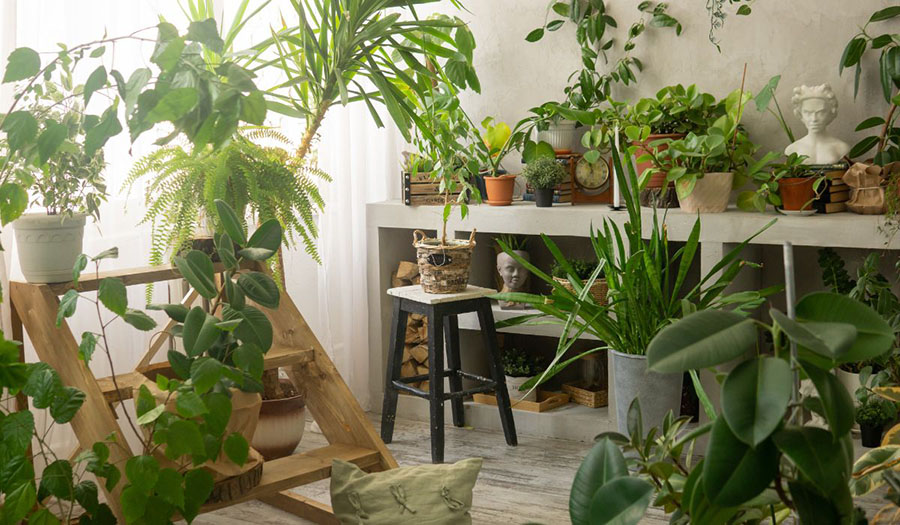
- Details
- Written by: Reveal Magazines
In the hustle and bustle of modern life, finding solace in nature seems like a distant dream for many. However, a new trend is taking root in homes across the globe – the Indoor Jungle. This isn't just about adding a potted plant or two; it's a design philosophy called Biophilic Design that seamlessly integrates nature into our living spaces. Let's explore how the humble indoor plant is transforming homes into lush sanctuaries and enhancing well-being in the process.
The Green Revolution
In recent years, the popularity of indoor plants has soared, and for good reason. Beyond their aesthetic appeal, plants contribute to a design movement known as Biophilic Design, which seeks to bridge the gap between the built environment and the natural world. Incorporating elements like greenery, natural light, and organic materials, this approach aims to create spaces that resonate with our innate connection to nature.
Choosing the Right Green Companions
Not all plants are created equal, and choosing the right ones for your indoor jungle requires careful consideration. Low-maintenance plants like snake plants, pothos, or succulents are perfect for beginners. If you're feeling a bit more adventurous, consider a fiddle leaf fig or a peace lily for a touch of drama. Remember to consider factors such as light conditions, humidity, and your commitment to watering when making your selections.
The Art of Arrangement
Creating an indoor jungle is not just about scattering plants around your home randomly. Think of it as crafting a living masterpiece. Consider the different needs of your plants and group them accordingly. Create focal points with larger plants and accentuate with smaller ones. Hanging planters and wall-mounted shelves can also be used to maximize space and add visual interest. The key is to strike a balance between nature and design, creating an oasis that feels both intentional and harmonious.
A Breath of Fresh Air
Beyond their visual appeal, indoor plants offer a myriad of health benefits. Plants act as natural air purifiers, absorbing toxins and releasing oxygen, contributing to improved air quality. Studies have also shown that the presence of indoor greenery can reduce stress, enhance mood, and increase productivity. By incorporating Biophilic Design into our homes, we're not just creating beautiful spaces; we're nurturing our mental and physical well-being.
Tips for the Indoor Jungle Enthusiast
-
Start Small: If you're new to the world of indoor plants, begin with a few easy-to-care-for varieties to build your confidence.
-
Consider Light Conditions: Different plants have different light requirements. Pay attention to the natural light in your home and choose plants that thrive in those conditions.
-
Mix and Match: Experiment with a variety of plants to create depth and interest. Combine different shapes, sizes, and textures to add visual appeal to your indoor jungle.
-
Don't Forget Maintenance: While many indoor plants are low-maintenance, they still require care. Watering schedules, pruning, and occasional fertilizing are essential to keep your indoor jungle thriving.
-
Personalize Your Space: Your indoor jungle should reflect your personality. Add decorative pots, plant stands, or unique containers to showcase your plants and enhance the overall design.
As the Indoor Jungle trend continues to grow, more and more people are recognizing the transformative power of plants in their homes. By embracing Biophilic Design, we not only elevate our living spaces but also nurture a connection with nature that is often elusive in our fast-paced lives. So, go ahead, let the green revolution into your home, and watch as your living spaces transform into vibrant, refreshing sanctuaries.

- Details
- Written by: Reveal Magazines
Japanese Zen gardens, also known as "kare-sansui" or dry landscape gardens, are renowned for their minimalist and contemplative design. Rooted in Zen Buddhism, these gardens are meticulously crafted to embody tranquility, harmony, and a sense of inner peace. With their carefully arranged rocks, raked gravel, and thoughtfully placed vegetation, Japanese Zen gardens offer a profound connection to nature and a haven for meditation and relaxation. Let's explore the philosophy and essential elements of Japanese Zen gardens, as well as how to incorporate their calming essence into your own garden design.
The Philosophy of Japanese Zen Gardens
Japanese Zen gardens trace their roots back to the ancient Japanese philosophy of "wabi-sabi," emphasizing simplicity, impermanence, and the beauty of imperfection. Wabi-sabi encourages people to find beauty in the natural and unpretentious elements of life, appreciating the simple and the fleeting.
Zen gardens further embody Zen Buddhism's core principles of mindfulness, meditation, and detachment from worldly desires. The gardens serve as physical representations of Zen philosophy, evoking a sense of balance, calmness, and interconnectedness with the natural world. By providing a space for contemplation and reflection, Zen gardens facilitate the journey to self-discovery and enlightenment.
Elements of Japanese Zen Gardens
Gravel and Sand: The predominant feature of a Japanese Zen garden is the use of gravel or sand, raked in precise patterns to represent water ripples or waves. This dry representation of water symbolizes the fluidity and impermanence of life. The act of raking the gravel also promotes mindfulness and meditation.
Rocks and Stones: Stones hold immense significance in Zen gardens. Large rocks symbolize islands or mountains, while smaller stones represent islands or living creatures. The arrangement of rocks follows a careful balance, reflecting harmony and stability in nature.
Plants and Trees: Though minimal, carefully chosen plants and trees are strategically placed to complement the rock and gravel layout. Moss, evergreens, and simple shrubs are common choices as they require minimal maintenance and fit seamlessly into the garden's aesthetics.
Bridges and Pathways: Sometimes, Zen gardens incorporate simple wooden bridges or stepping stone pathways, guiding visitors on a journey through the garden. These elements symbolize transitions and transformations in life.
Lanterns and Ornaments: Delicately crafted stone lanterns and other ornaments add subtle accents to the garden while also serving as symbolic representations of illumination and enlightenment.
Incorporating Zen Garden Essence into Your Design
Creating a Japanese Zen garden in your own outdoor space can be a transformative experience, providing you with a serene sanctuary to unwind and reconnect with yourself. Here's how you can incorporate Zen garden principles into your design:
Simplicity and Minimalism: Embrace simplicity by decluttering the space and focusing on a limited color palette. Avoid overly complex designs and stick to essential elements that evoke a sense of peace and balance.
Raked Patterns: Even if you don't have space for a large gravel area, consider incorporating a small sand or gravel patch that you can rake in simple patterns. This activity can become a meditative practice in itself.
Strategic Placement of Rocks: Integrate rocks of various sizes into your garden, ensuring they are carefully positioned to create harmony and balance. Think of them as the backbone of your Zen garden.
Mindful Plant Choices: Select plants that require minimal upkeep and fit well with the overall design. Evergreens, ornamental grasses, and bamboo are excellent choices.
Quiet Nooks and Seating: Incorporate hidden seating areas or benches where you can sit and enjoy the tranquility of your garden. Use natural materials like wood to blend seamlessly with the surroundings.
Natural Sound Elements: If possible, consider adding a small water feature like a bamboo fountain or a shallow pool. The gentle sound of water can further enhance the calming atmosphere.
Japanese Zen gardens are a testament to the power of simplicity and the beauty of imperfection. They offer an escape from the fast-paced world, encouraging mindfulness, meditation, and self-reflection. By adhering to the philosophy and elements of Japanese Zen gardens, you can transform your own outdoor space into a serene sanctuary, fostering tranquility, and reconnecting with nature and yourself. Embrace the essence of Zen, and let your garden become a place of inner peace and serenity.

- Details
- Written by: Reveal Magazines
Creating a beautiful summer outdoor space at home can enhance your enjoyment of the season and provide a relaxing retreat. Here are some tips to help you transform your outdoor space into a beautiful oasis:
Plan and Design:
- Determine the purpose of your outdoor space. Will it be used for dining, lounging, or both?
- Consider the available space, sunlight, and any existing features like trees or fences.
- Decide on a theme or style that suits your taste and complements your home's architecture.
Furnishings:
- Choose comfortable and durable outdoor furniture that fits your style. Look for weather-resistant materials like teak, aluminum, or synthetic wicker.
- Include a dining table and chairs for al fresco meals and a comfortable seating area with sofas or lounge chairs for relaxation.
- Consider adding a hammock, swing, or hanging chair for a touch of leisure.
Outdoor Dining:
- Set up an outdoor dining area with a table, chairs, and an umbrella for shade.
- Enhance the atmosphere with string lights or lanterns for evening dining.
- Install a barbecue grill or outdoor kitchen for cooking and entertaining.
Shade and Shelter:
- Install a pergola, awning, or canopy to provide shade and protection from the sun.
- Consider using outdoor curtains or blinds for privacy and to create a cozy feel.
- Add a patio umbrella or a shade sail over seating areas.
Lighting:
- Use a combination of ambient, task, and accent lighting to create a warm and inviting ambiance.
- Install string lights or fairy lights to add a magical touch.
- Incorporate solar-powered lights along pathways or in planters for an eco-friendly option.
Greenery and Landscaping:
- Introduce plants, flowers, and shrubs to add colour and life to your outdoor space.
- Select a variety of plants that thrive in your climate and require low maintenance.
- Create vertical gardens or use hanging baskets to maximize space.
Outdoor Decor:
- Include outdoor rugs, throw pillows, and cushions to add comfort and style.
- Hang artwork or mirrors on walls to create a focal point.
- Incorporate decorative items like lanterns, planters, or water features for visual interest.
Entertainment and Activities:
- Set up a portable speaker system for playing music outdoors.
- Consider adding a fire pit or a chiminea for cozy evenings.
- Include games and activities like a bocce ball set or a game of croquet for outdoor fun.
Practical Considerations:
- Provide sufficient storage for outdoor cushions, garden tools, and other items with weather-resistant storage solutions.
- Install a misting system or outdoor fans to keep cool during hot summer days.
- Ensure there are enough trash and recycling bins for convenience.
Regular Maintenance:
- Keep your outdoor space clean and well-maintained by regularly sweeping or hosing down the area.
- Water and fertilize plants as needed.
- Store cushions and delicate items during inclement weather.
Remember to personalize your outdoor space to reflect your personality and preferences. With careful planning and attention to detail, you can create a beautiful summer outdoor space at home where you can relax, entertain, and enjoy the outdoors.
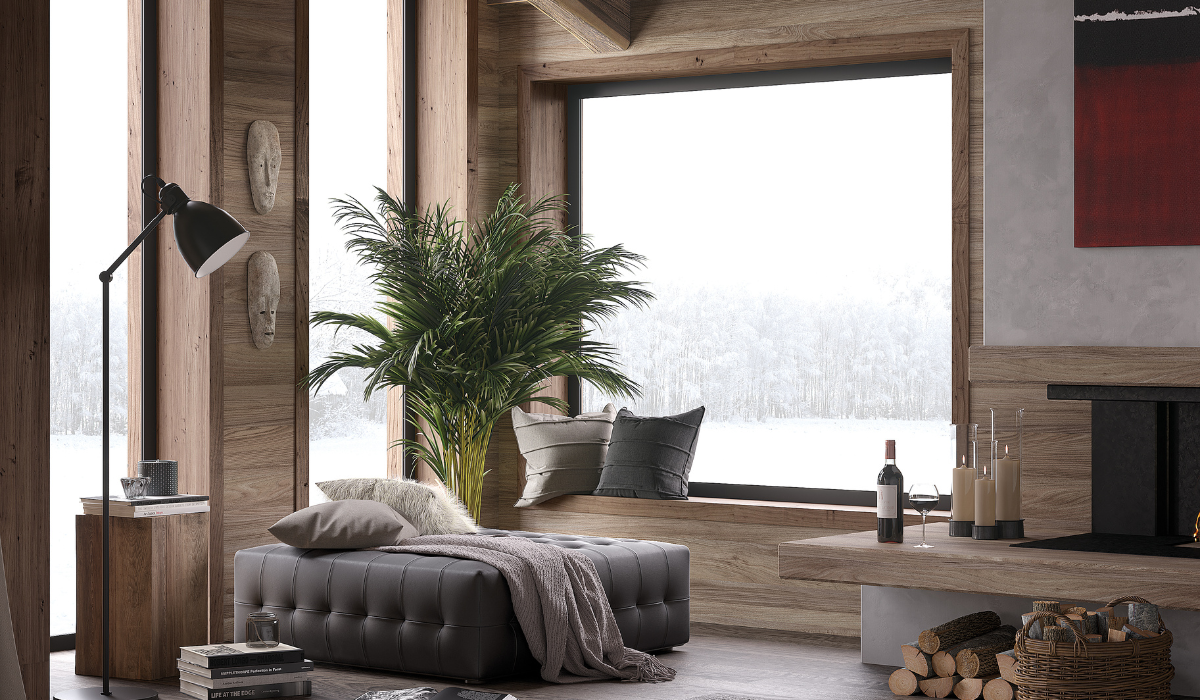
- Details
- Written by: Reveal Magazines
Refreshing your space for the winter season can bring a new and welcoming sense of brightness and warmth to your home or office during these seemingly longer months. Here are a few tips to consider applying in your space this winter season:
Cozy Textures
To create an inviting and cozy atmosphere in the winter, incorporate a variety of textures in your interior design. Incorporate plush fabrics, such as velvet, faux fur, and corduroy, for added warmth and comfort. Layer different textures to create depth and interest in the space.
Accent your design with textured pillows, throws, and rugs to create a cozy atmosphere. Add texture to the walls by using a variety of wallpapers in different colours and textures. Use natural materials, such as wood and stone, to bring a rustic feel to the space.
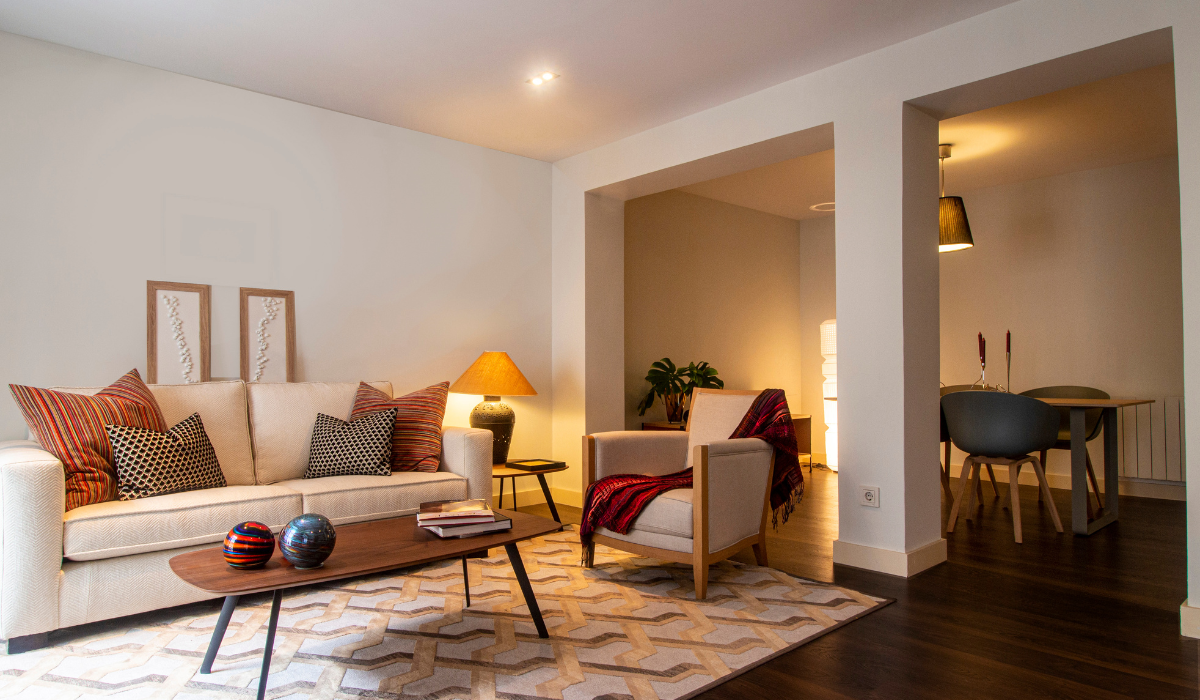
Warm Lighting
Create a warm atmosphere in the winter by incorporating warm lighting into your interior design. Use warm-toned light bulbs in lamps and fixtures to create a cozy atmosphere. Place lamps in different areas of the room to create a soft and inviting atmosphere.
Add a touch of luxury to the room with candlelight. Place candles in different areas of the room to create a warm and inviting atmosphere. Use dimmers to control the amount of light in the room and create the perfect atmosphere for any occasion.
Neutral Colors
Neutral colours are a great way to create a cozy atmosphere in the winter. Use shades of white, gray, and beige to create a calming atmosphere in the room. Use a variety of textures and patterns to add interest and depth to the space.
Accent the neutral colours with pops of colour to add a touch of personality to the room. Use shades of blue, green, and yellow to create a cheerful atmosphere. Incorporate different textures, such as velvet, faux fur, and corduroy, to create a cozy atmosphere.
Natural Elements
Bring the outdoors inside in the winter by incorporating natural elements into your interior design. Incorporate wood, stone, and plants to bring a rustic feel to the space. Use wood and stone for furniture and accents to create an inviting atmosphere.
Bring the outdoors in with plants and flowers. Place potted plants and flowers around the room to bring a touch of nature to the space. Use natural materials, such as wood and stone, to create a cozy atmosphere in the winter.
Layered Rugs
Create a cozy atmosphere in the winter by incorporating layered rugs into your interior design. Use rugs in different colours and textures to create depth and interest in the space. Layer rugs of different sizes and shapes to create a unique look.
Accent the rugs with pillows and throws to create a comfortable and inviting atmosphere. Incorporate natural materials, such as wood and stone, to bring a rustic feel to the space. Use warm-toned light bulbs in lamps and fixtures to create a cozy atmosphere.
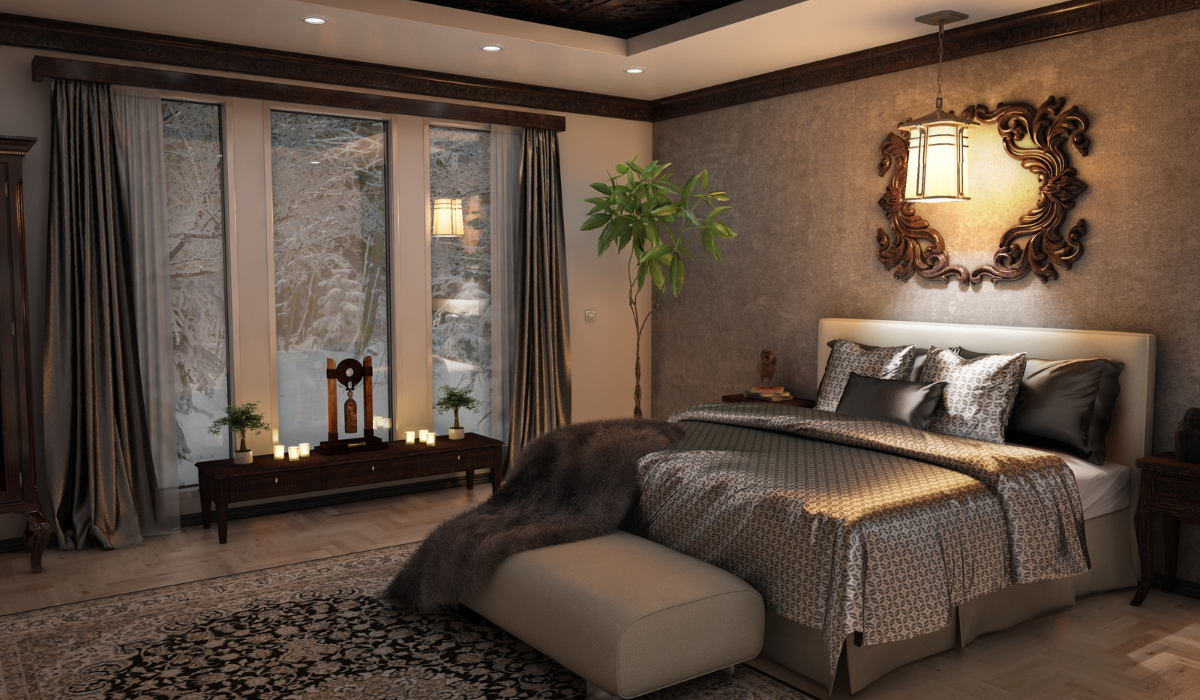
Winter Accessories
Add a touch of winter to your interior design with winter accessories. Incorporate winter-themed pillows, throws, and rugs to create a cozy atmosphere. Use shades of blue, green, and yellow to create a cheerful atmosphere.
Accent the accessories with natural materials, such as wood and stone, to bring a rustic feel to the space. Incorporate warm-toned light bulbs in lamps and fixtures to create a cozy atmosphere. Place candles in different areas of the room to create a warm and inviting atmosphere.

- Details
- Written by: Reveal Magazines
Our natural landscape throughout the Niagara Region presents us with everything we require to grow, produce, and create the most tantalizing farm to table experiences around.
Whether its farm to market, farm to table, or farm to fork, Niagara’s bountiful supply of fresh fruits, vegetables, meats, and dairy have created an overflowing access to a healthier, more locally inspired culinary intake both in and outside of our homes especially this winter.
These farm concepts are certainly anything but new. They consist of battles that are decades old that have been pushing a cultural change around how we grow, produce, and consume our food. Once upon a time, there was no alternative to a homegrown or homecooked meal. Nearly everything was prepared fresh, and most diets consisted of a healthy balanced variety of food.
After moving through the industrial age, with equipment being created for mass production of goods to reduce costs, we also entered a more processed food environment. It also became more popular to dine out, and as people became busier in their day to day lives, the dining experience itself changed substantially. Going out for dinner was once an event, often to celebrate a special occasion or milestone, and you took your time to enjoy the surroundings and the experience, but over time, the frequency of faster, more convenient, and later, mediocre quality meals have increased.
Even through this change, the topics of eating well and supporting locally grown foods were always there, but since have come the time for these conversations be louder.
The highly talked about benefits of eating well in conjunction with making more frequent choices to support the local community is
filled with tremendous benefits to your body and the economy. Quite literally, we are surrounded by local markets and a bustling restaurant industry that embrace its local Niagara roots. It has become exciting and enjoyable to incorporate these healthier and locally inspired meal choices into our regular routine.
This excitement isn’t just occurring here with the locals either. More and more of our visiting audience is seeking out these fresh, authentic, seasonally, and locally inspired culinary menus across the various bistros and restaurants in Niagara. The accolades are growing and the Chefs throughout the region continue to be more passionate and even more inspired to continue to create and deliver their craft.
By exploration and experimentation, we encourage you to go where you have not yet gone and to satisfy your senses in a way that is sure to deliver an impeccable dining experience.

- Details
- Written by: Pulse Point Unit
May ushers in the rhubarb harvest in Ontario, offering a uniquely tart and refreshing ingredient perfect for springtime cocktails. This underappreciated garden vegetable is enjoying a renaissance, thanks to its versatility and vibrant colour. Mixologists across the province are now embracing rhubarb’s zesty flavour in everything from spritzers to infusions.
At-home cocktail enthusiasts can easily craft rhubarb syrup by simmering chopped rhubarb with sugar and water, then straining it. This syrup can be added to sparkling water for a non-alcoholic refresher or combined with gin, vodka, or prosecco for a delicious adult beverage. For a trendy take, try a rhubarb gin fizz garnished with fresh mint or basil.
The LCBO’s spring offerings include rhubarb-inspired spirits and cocktail kits, making it easier than ever to embrace seasonal ingredients. Restaurants and bars are also getting creative—serving rhubarb mojitos, rhubarb mules, and even rhubarb sangria.
Nutritionally, rhubarb adds more than just zing. It’s a source of fiber, calcium, and antioxidants. However, it’s important to discard the leaves, which are toxic if consumed. When preparing rhubarb, choose bright red stalks for a sweeter flavour and enhanced visual appeal.
To pair with rhubarb cocktails, opt for complementary appetizers like goat cheese crostini, citrus-marinated olives, or spring salads featuring arugula and strawberries. The natural acidity of rhubarb enhances these flavour profiles.
May is a perfect time to support local farmers' markets and explore seasonal produce. Rhubarb’s short growing season makes it a must-try ingredient before it disappears. Whether you’re hosting a brunch, planning a picnic, or simply enjoying your backyard, a rhubarb cocktail is an ideal toast to the arrival of spring.
Source: LCBO Food & Drink Magazine, Spring 2024 Edition (https://www.lcbo.com/content/lcbo/en/food-and-drink.html)

- Details
- Written by: Key Trends Staff
Thanksgiving in Canada, celebrated on the second Monday in October, is a time for families and friends to gather, share gratitude, and indulge in a feast that reflects the country’s rich cultural tapestry.
While traditional turkey, stuffing, and pumpkin pie are common staples, Canadian Thanksgiving showcases an array of diverse foods and drinks that celebrate the multicultural heritage of the nation.

Traditional Dishes with a Twist
The traditional Thanksgiving table often features roast turkey as the centrepiece, but regional variations highlight Canada’s cultural diversity. In many households, especially among Indigenous communities, wild game such as venison or bison may take centre stage. These proteins are often accompanied by sides that incorporate local ingredients like wild rice, squash, and foraged mushrooms, providing a unique take on the typical Thanksgiving feast.
For families of Asian descent, dishes like sweet and sour pork or stir-fried vegetables might grace the table, offering a fusion of flavours that reflect their heritage. Similarly, Caribbean families may include jerk chicken or curried goat, adding vibrant spices and warmth to the festive gathering.

Incorporating Seasonal Flavours
As autumn ushers in a bounty of seasonal produce, Canadian Thanksgiving menus often highlight local fruits and vegetables. Pumpkin is a staple in desserts like pie and soup, while root vegetables such as carrots, parsnips, and beets make for hearty sides. Apples, particularly varieties like Honeycrisp and Cortland, are popular in both sweet and savoury dishes. The harvest season offers an opportunity to celebrate local farmers and producers through farm-to-table dishes that emphasise freshness and sustainability.
Beverage Pairings for Every Palate
Beverages play a crucial role in the Thanksgiving experience. Many Canadians turn to local wines, with regions like the Niagara Peninsula and Okanagan Valley producing exceptional varietals. A crisp Riesling or a full-bodied Cabernet Sauvignon can complement the richness of the turkey and side dishes beautifully.
For those who prefer craft beer, Canada boasts a vibrant brewing scene. Seasonal brews, such as pumpkin ales or spiced lagers, can enhance the Thanksgiving meal, offering a refreshing contrast to the rich flavours of the food. Additionally, non-alcoholic options like spiced apple cider or berry-infused mocktails provide inclusive alternatives for guests of all ages.
Desserts That Reflect Heritage
No Thanksgiving feast is complete without dessert. While pumpkin pie remains a favourite, many families opt for sweets that reflect their cultural backgrounds. Butter tarts, a classic Canadian treat, may be joined by baklava in households of Middle Eastern descent or flan among Hispanic families, showcasing the richness of Canada’s multicultural landscape.
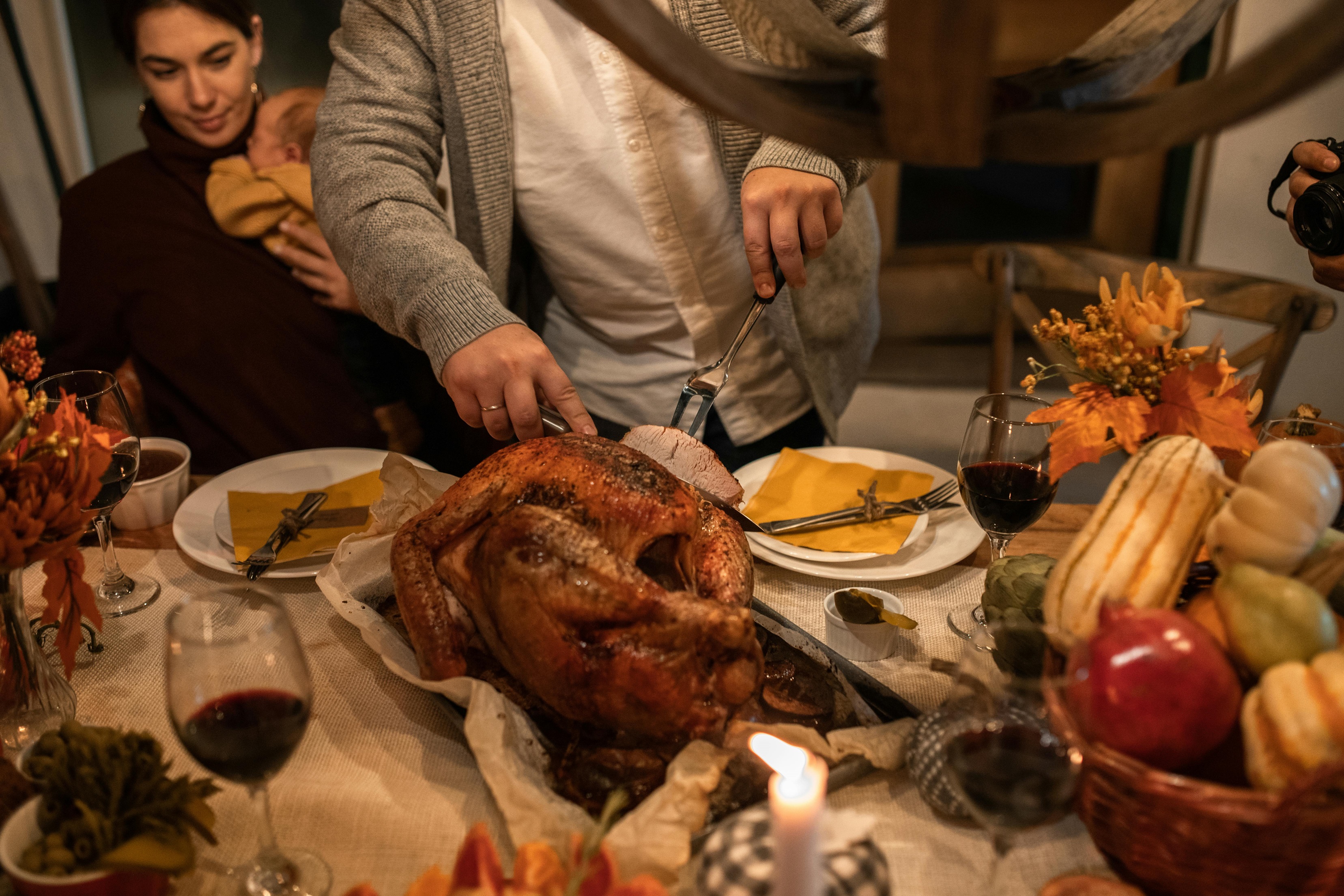
As Canadians gather around their tables this October, the Thanksgiving feast serves as a reminder of the nation’s diverse cultures and the shared values of gratitude, community, and celebration. By embracing a variety of foods and drinks, Canadians not only honour their traditions but also welcome the flavours and customs of their neighbours, creating a truly inclusive holiday.
Source
https://food-guide.canada.ca/en/

- Details
- Written by: Key Trends Staff
Beloved Filipino dessert, Buko Pie is a coconut custard pie that has won hearts for its creamy texture and delightful flavor. Originating from the Philippines, buko pie is a staple in Filipino cuisine, often enjoyed as a sweet treat during gatherings and special occasions.
The pie is made with tender young coconut meat, known as "buko," combined with a rich custard filling and encased in a flaky pastry crust. The filling is a blend of coconut meat, condensed milk, and egg yolks, creating a luscious and smooth texture. The crust is typically made from a simple mix of flour, butter, and sugar, offering a perfect balance to the creamy filling.
For those eager to try making this delicious pie at home, you can follow this detailed buko pie recipe. It provides step-by-step instructions to achieve a perfect buko pie, capturing the essence of this Filipino favorite.
Buko pie's popularity is not just limited to the Philippines. It has found fans worldwide, thanks to its unique taste and the universal appeal of coconut-based desserts. Whether enjoyed as a dessert or a sweet snack, buko pie is a testament to the rich and diverse flavors of Filipino cuisine.
Enjoy baking and savoring this delicious slice of Filipino tradition!
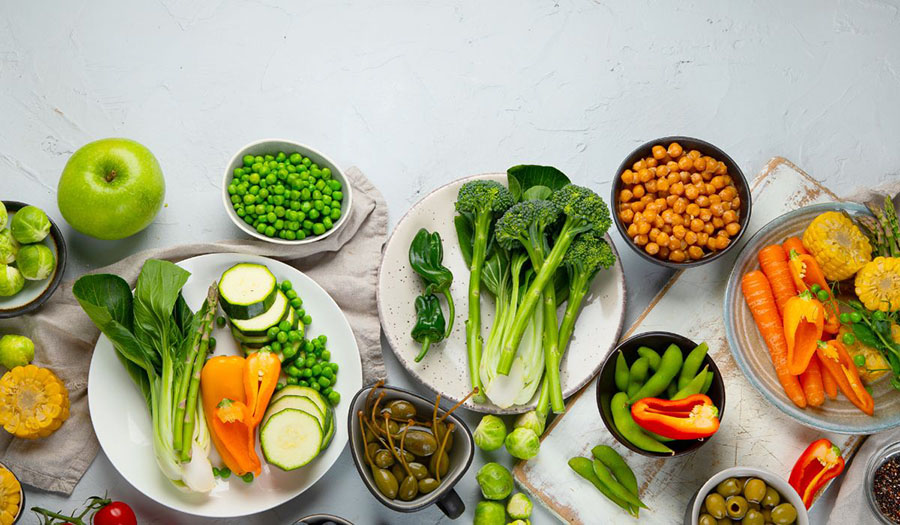
- Details
- Written by: Reveal Magazines
In recent years, there has been a remarkable surge in the popularity of plant-based diets, as individuals increasingly seek healthier and more sustainable food options. The culinary landscape is witnessing a paradigm shift as vegan and vegetarian trends take center stage, not only shaping dietary choices but also influencing the way chefs and food businesses approach menu planning. So what is the plant-based boom? Let's ecxplore the innovative products, restaurant offerings, and the sustainability factor driving this culinary revolution.
The Evolution of Plant-Based Diets:
Plant-based diets have evolved from niche choices to mainstream trends, embraced by people from all walks of life. Health-conscious consumers are recognizing the numerous benefits of reducing their reliance on animal products, including lower risks of heart disease, diabetes, and obesity. Moreover, ethical and environmental concerns are steering individuals towards plant-based lifestyles, with many acknowledging the positive impact of such choices on animal welfare and the planet.
Innovative Plant-Based Products:
One of the driving forces behind the plant-based boom is the surge in innovative and delicious plant-based products. From realistic meat substitutes to dairy-free alternatives, the market is flooded with options that appeal to both vegans and those curious about incorporating more plant-based choices into their diets. Companies like Beyond Meat and Impossible Foods have revolutionized the industry with plant-based burgers that not only mimic the taste but also the texture of traditional beef patties.
Restaurants Embrace Plant-Based Offerings:
The culinary world is adapting to the changing tastes of consumers, with restaurants increasingly incorporating plant-based options into their menus. Whether it's fine dining establishments or fast-food chains, chefs are recognizing the demand for plant-based dishes and are responding with creativity and flair. Plant-based pizzas, burgers, tacos, and sushi are becoming commonplace, offering a diverse array of options that cater to a wide range of palates.
The Impact of Sustainability:
Sustainability is a key driver behind the rise of plant-based diets. Consumers are becoming more conscious of the environmental impact of their food choices, and plant-based diets are often touted as more sustainable alternatives. The production of plant-based foods generally requires fewer natural resources and generates fewer greenhouse gas emissions compared to traditional animal agriculture. This environmental awareness is influencing not only individuals but also the decisions of food businesses looking to align with eco-friendly practices.
Chefs as Champions of Plant-Based Cuisine:
Chefs are at the forefront of the plant-based revolution, experimenting with ingredients and techniques to create flavorful and satisfying plant-based dishes. Many renowned chefs are championing the cause, showcasing that plant-based cuisine can be as sophisticated and delicious as its animal-based counterparts. This culinary creativity is breaking down stereotypes surrounding plant-based diets and attracting a broader audience.
The plant-based boom is reshaping the culinary world, with a growing number of individuals opting for vegan and vegetarian lifestyles. From innovative plant-based products to diverse restaurant offerings and a heightened focus on sustainability, this culinary revolution is much more than a passing trend. As chefs and food businesses continue to embrace plant-based options, the future of the culinary world looks set to be both delicious and sustainable.

- Details
- Written by: Reveal Magazines
Ontario, Canada, is a foodie's paradise. From farm-to-table restaurants to bustling food markets, the province is home to some of the best culinary experiences in the country. Here are a few that must be explored:
St. Lawrence Market, Toronto
St. Lawrence Market is a must-visit destination for food lovers. The market, which has been around since 1803, is home to over 120 vendors selling everything from fresh produce to artisanal cheese. Be sure to try the famous peameal bacon sandwiches at Carousel Bakery, a St. Lawrence Market staple.
Stratford Chefs School, Stratford
Stratford, Ontario, is known for its world-renowned theatre festival, but it's also home to the Stratford Chefs School. The school offers a variety of culinary programs and workshops, and its teaching restaurant, The Prune, is a must-visit for foodies. The restaurant features a rotating menu of locally sourced ingredients and offers a unique dining experience.
Wineries, Niagara Region
Niagara is home to some of Ontario's best wineries. Take a tour of the region's vineyards and sample some of the award-winning wines produced in the area. A heavy concentration of spectacular culinary experiences can be found at the wineries throughout Niagara Benchlands and Niagara-on-the-Lake, including farm-to-table dinners and wine and food pairings.
Prince Edward County, Ontario
Prince Edward County, located on the shores of Lake Ontario, is a food lover's paradise. The region is home to a variety of artisanal food producers, including cheesemakers, brewers, and distillers. Take a tour of the region's food producers and sample some of the delicious products made in the area.
Canoe, Toronto
Canoe is a fine dining restaurant located on the 54th floor of the TD Bank Tower in Toronto. The restaurant offers stunning views of the city and features a menu of Canadian-inspired cuisine. Be sure to try the restaurant's famous venison dish, which is served with roasted parsnips and juniper berries.
In conclusion, Ontario, Canada, is home to some of the best culinary experiences in the country. From bustling food markets to world-renowned restaurants, the province has something to offer every food lover. Be sure to add these top culinary experiences to your Ontario travel itinerary.

- Details
- Written by: Reveal Magazines
Summer is the perfect time to enjoy a refreshing cocktail, and what better way to quench your thirst than with fruit-based drinks? Fruit cocktails are not only delicious but can also packed with nutrients that are essential for our health (when using fresh ingredients, of course).
Here are five simple and popular recipes for fruit-quenching cocktails that are perfect for summer. Each recipe is easy to make and uses fresh, seasonal ingredients that are readily available in your local market.
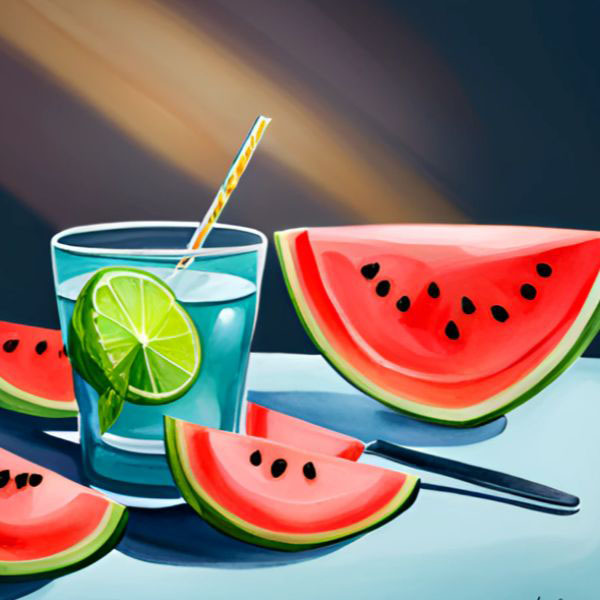
Watermelon Margarita
This watermelon margarita is a perfect combination of sweet and sour flavours. It's made with fresh watermelon, lime juice, tequila, and triple sec. This cocktail is perfect for hot summer days when you need something refreshing to cool down.
To make this cocktail, start by blending fresh watermelon chunks until smooth. Add lime juice, tequila, and triple sec, and blend again. Pour the mixture into a salt-rimmed glass filled with ice cubes. Garnish with a slice of watermelon and a sprig of mint.

Peach Bellini
Peach Bellini is a classic Italian cocktail that is perfect for summer brunches. It's made with fresh peaches and sparkling wine. This cocktail is light, refreshing, and easy to make.
To make this cocktail, start by blending fresh peaches until smooth. Pour the peach puree into a champagne flute and top it up with chilled sparkling wine. Garnish with a slice of peach and serve immediately.
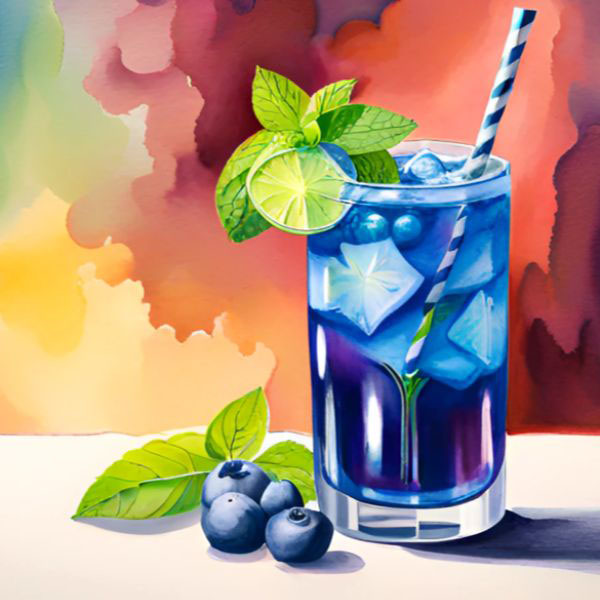
Blueberry Mojito
This blueberry mojito is a fruity twist on the classic Cuban cocktail. It's made with fresh blueberries, mint leaves, lime juice, white rum, and soda water. This cocktail is perfect for hot summer nights when you need something refreshing to cool down.
To make this cocktail, start by muddling fresh blueberries and mint leaves in a glass. Add lime juice, white rum, and ice cubes, and stir well. Top it up with soda water and garnish with a sprig of mint and a few blueberries.
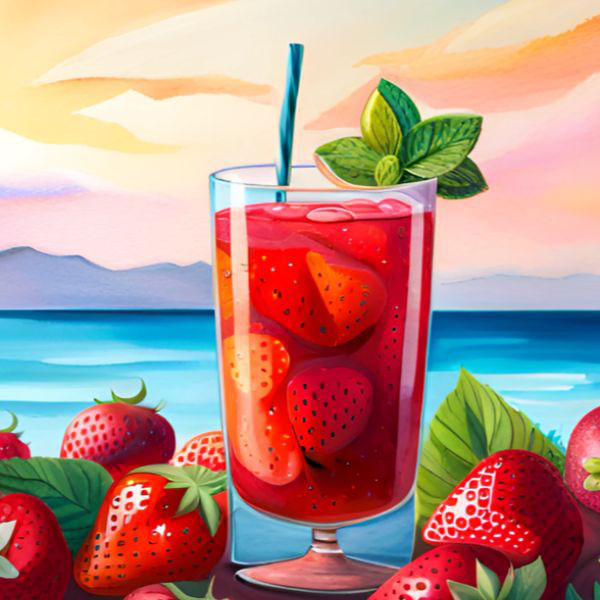
Strawberry Daiquiri
A classic cocktail that is perfect for summer parties and large punch bowls. It's made with fresh strawberries, lime juice, white rum, and sugar syrup. This cocktail is sweet, tangy, and easy to make.
To make this cocktail, start by blending fresh strawberries until smooth. Add lime juice, white rum, sugar syrup, and ice cubes, and blend again. Pour the mixture into a glass and garnish with a slice of strawberry and a sprig of mint.
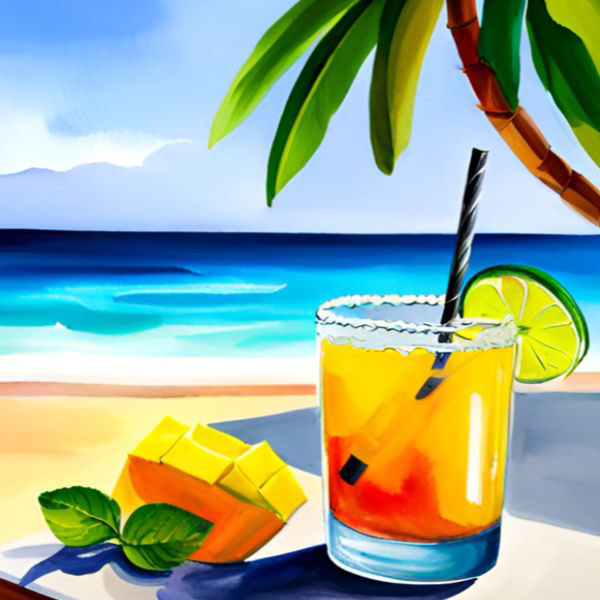
Mango Margarita
A tropical twist on the classic Mexican cocktail, it's made with fresh mango, lime juice, tequila, and triple sec. This cocktail is perfect for summer evenings when you want to relax and unwind.
To make this cocktail, start by blending fresh mango chunks until smooth. Add lime juice, tequila, and triple sec, and blend again. Pour the mixture into a salt-rimmed glass filled with ice cubes. Garnish with a slice of mango and a sprig of cilantro.
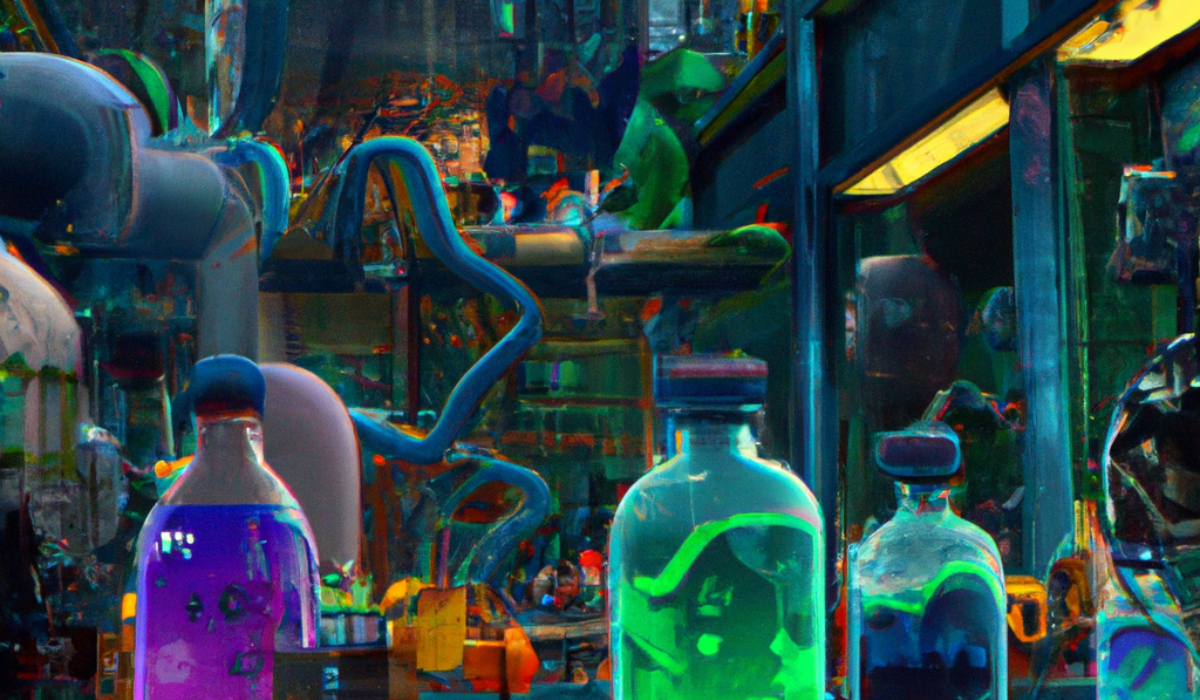
- Details
- Written by: Reveal Magazines
It seems like every time you hop on social media, there's a mixologist sharing a new low-carb recipe or a celebrity launching a new beverage venture. Expect to see these key areas explode this year as beverage makers cater to what consumers want more of.
The Rise of Plant-Based Beverages
As health consciousness continues to rise, so does the demand for plant-based beverages. In 2023, expect to see more plant-based beverages on the market, from nut milks to kombuchas. Consumers are looking for beverages that are not only healthy but also sustainable and ethical.
These plant-based beverages are made from natural ingredients, such as nuts, grains, and fruits. Many of them are also vegan-friendly, as they contain no animal products.
The Growth of Craft Beverages
Craft beverages are on the rise, as more and more consumers are looking for unique, high-quality drinks. In 2023, expect to see more craft beverages on the market, such as craft beers, ciders, and kombuchas. These drinks are made with natural ingredients and are often locally sourced.
Craft beverages are also becoming more popular due to their unique flavour profiles. Consumers are looking for drinks that are not only delicious but also have interesting and complex flavour notes. Craft beverages offer a unique and flavorful experience that can't be found in traditional drinks.

The Emergence of Bio-Based Beverages
Bio-based beverages are on the rise, as more and more consumers are looking for sustainable and eco-friendly drinks. In 2023, expect to see more bio-based beverages on the market, such as algal-based drinks, seaweed-based drinks, and insect-based drinks. These drinks are made from natural ingredients that are sourced from the environment.
Bio-based beverages tend to be high in protein and vitamins and offer attractive health benefits to some.
The Popularity of Alcohol-Free Beverages
Alcohol-free beverages are all the rage and consumers are seeking more socially responsible drink options. In 2023, expect to see more alcohol-free beverages on the market, such as mocktails, kombuchas, and non-alcoholic beers. These drinks offer a delicious and refreshing alternative to traditional alcoholic beverages and encourage safe and responsible social freedoms. They also provide many of the same health benefits that people are seeking.
The Growth of Functional Beverages
Functional beverages are on the rise, as more and more consumers are looking for drinks that offer additional health benefits. In 2023, expect to see more functional beverages on the market, such as energy drinks, weight loss drinks, and immunity-boosting drinks. These drinks are made with natural ingredients and are often fortified with vitamins and minerals.
Functional beverages are popular due to their health benefits. Many of these drinks are high in protein and vitamins, making them a great option for health-conscious consumers. Additionally, some of these drinks are also low in sugar and calories, making them a healthier alternative to traditional drinks.
The Emergence of Low-Carb Beverages
Low-carb beverages have been trendy for quite some time, and as more consumers are looking for drinks that are low to no sugar, more creative options are continuously flowing. In 2023, expect to see even more low-carb beverages on the market, such as keto-friendly drinks, sugar-free drinks, and low-calorie drinks. These drinks offer a delicious and refreshing alternative to traditional sugary drinks.
Low-carb beverages are also becoming more popular due to their health benefits. Many of these drinks are low in sugar and calories, making them a great option for health-conscious consumers. Additionally, some of these drinks are also vegan-friendly, as they contain no animal products.
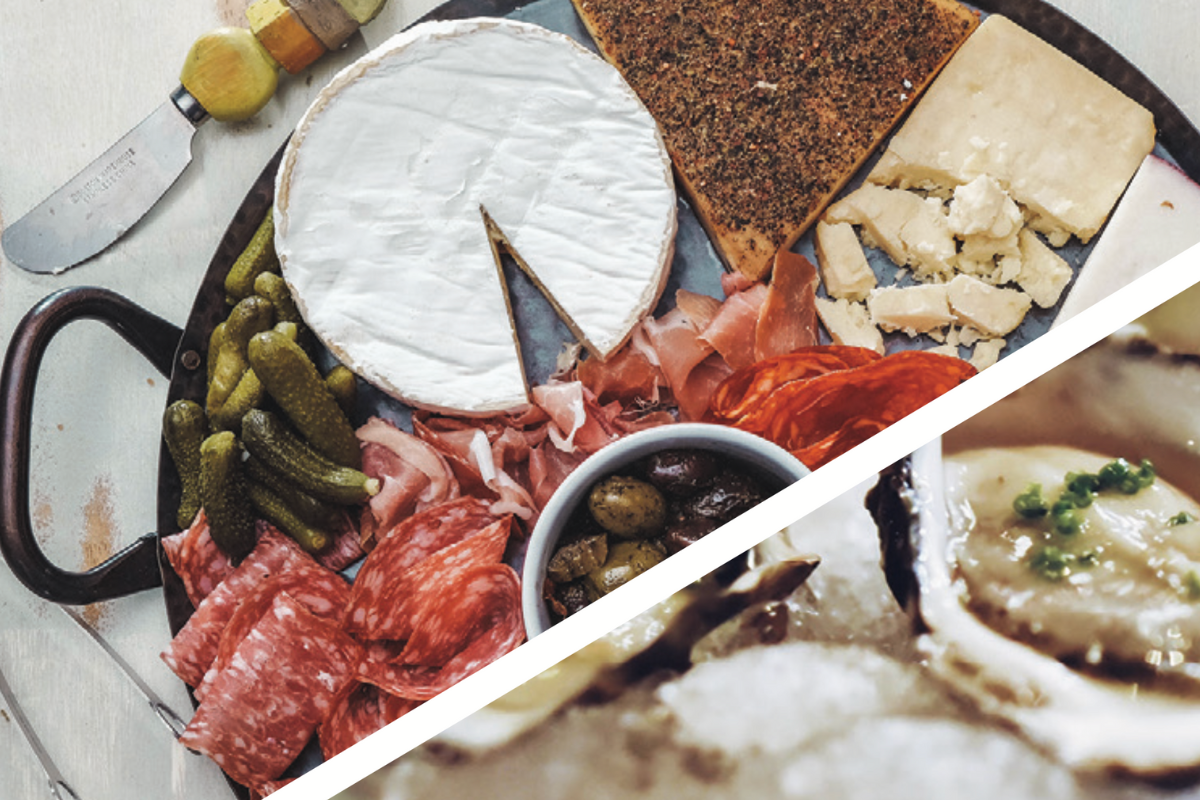
- Details
- Written by: Reveal Magazines
The origin of an oyster has a big effect on its taste, and after giving it some thought the reasons seem obvious. An oyster feeds off and filters water, so it stands to reason that river oysters for example, give a more earthy taste while those found at sea have a brinier, sharper taste.
Pacific oysters tend to be small and sweet, described to us once as tasting like honey dew melon. For a more pickled taste, you can source Malpeque oysters that give off the perfect balance of sweetness, brine, and pickle-like liveliness. Some of the tastiest oysters tend to come from less- than-glamorous locations so don’t be shy in exploring ones from different homes.
When it comes to pairing, some see oysters as a luxury food that should be served up with a glass of bubbly, but a crisp chardonnay will never disappoint. You can also explore a viognier, as the fruity undertones will give off a different kick in flavour, especially if you’re topping your oysters with a scotch bonnet. A pairing that goes back nearly 200 years is a firm stout, so consider pouring yourself a tall glass of Guinness to accompany your oysters next time.
Enjoying tapas has evolved beyond the need to eat; it’s become a social event. These delicious small bites are perfect to enjoy with friend while sipping on drinks, listening to live music or lounging on a patio or backyard deck. In some cultures, serving and enjoying tapas is a way of living. Spain – Middle Eastern snacks called mezze.
Tapas in Spain are little bites that pair with a drink, often served while standing at the bar on small plates while sharing and talking with friends. Similarly, the meze- style spread is common throughout the Mediterranean and Middle East.
In Niagara, there is no shortage of venues that offer all sorts of appetizers and tapas. Some are meant to be shared, others are made as small individual dishes with their own cutlery when you want something smaller than what you would have for a complete meal. Throughout the summer and fall, you can find several restaurants that have tapas events perfect for luring you onto their patio and pairing your favourite snackables with a pint or a cocktail.

- Details
- Written by: Pulse Point Unit
When it comes to day trips in May, few destinations in Ontario are as charming and activity-packed as Niagara-on-the-Lake. As spring blossoms burst into full colour, this picturesque town becomes an ideal getaway for exploring history, wine, theatre, and natural beauty—all within a walkable setting.
May is the start of peak garden season in Niagara-on-the-Lake. Visitors can enjoy the region's many floral displays, including the gardens along Queen Street and near the waterfront. The area’s historic homes and inns come alive with tulips, lilacs, and ornamental trees in full bloom, creating an idyllic backdrop for sightseeing and photography.
One of the town’s crown jewels, the Shaw Festival, launches its seasonal lineup in May with world-class theatre productions. It’s a perfect excuse to pair culture with an afternoon wine tasting at one of the many surrounding wineries. Most local wineries begin offering spring release tastings and vineyard tours in May—some even include cheese pairings or live music on weekends.
Bicycles can be rented locally to explore the town and its scenic trails, including the Niagara River Recreational Trail. For those who prefer a leisurely pace, stroll along Queen Street and discover boutique shops, art galleries, and cafes offering everything from gelato to gourmet sandwiches.
Whether you're a foodie, wine lover, nature enthusiast, or culture buff, Niagara-on-the-Lake provides a refreshing and enriching escape. Plus, it’s only a short drive from Toronto or Hamilton, making it perfect for spontaneous springtime adventures.
Source: Niagara Falls Tourism (https://www.niagarafallstourism.com/blog/niagara-on-the-lake-day-trip/)

- Details
- Written by: Reveal Magazines
Explore ancient civilizations, marvel at majestic fossils, and delve into captivating art at the Royal Ontario Museum. With interactive exhibits, immersive displays, and diverse collections spanning history and culture, it's a thrilling adventure for all ages, igniting curiosity and sparking wonder at every turn.
Featured Exhibitions at ROM
Wild Life Photographer of the Year - Closing Soon!

Earth: An Immersive Journey

Wild Cats

Quilts: Made in Canada

EXPERIENCE MORE WHAT ROM HAS TO OFFER
VISIT ROM

- Details
- Written by: Reveal Magazines
Ontario, Canada, transforms into a winter wonderland when the snow blankets the landscape, turning the province into a magical destination for day-trippers seeking snowy adventures. From charming small towns to breathtaking natural landscapes, Ontario offers a plethora of activities for those eager to embrace the winter chill. Whether you're a thrill-seeker or a lover of cozy experiences, there's something for everyone in the winter season. Let's embark on a journey through Ontario's winter wonderland and discover the best day-tripping destinations.
- Blue Mountain: The Ultimate Winter Playground
Located just two hours north of Toronto, Blue Mountain is a premier winter destination for outdoor enthusiasts. This resort town offers a variety of activities, including skiing and snowboarding on its well-groomed slopes. For a more relaxed experience, explore the charming Blue Mountain Village, where you can shop for unique gifts, enjoy a warm cup of cocoa, or take a stroll through the snow-covered cobblestone streets.
- Jordan Village: A Cozy Retreat in the Niagara Benchlands
Nestled in the heart of Niagara's wine country, Jordan Village in Lincoln, Ontario, is a charming destination for a winter day trip. Known for its boutique shops, art galleries, and gourmet restaurants, Jordan Village offers a delightful escape. Stroll through the village streets adorned with festive decorations, explore the local shops, and indulge in the region's renowned wines and culinary delights. The nearby Twenty Valley is also perfect for exploring scenic landscapes and vineyards in a winter wonderland setting.
- Algonquin Provincial Park: Serenity in the Snow
For nature lovers, Algonquin Provincial Park is a winter paradise. With its pristine snow-covered forests, frozen lakes, and peaceful trails, Algonquin offers a serene escape from the hustle and bustle of city life. Bundle up and embark on a winter hike or try your hand at cross-country skiing, taking in the breathtaking beauty of the winter landscape.
- Toronto Islands: Winter Tranquility Amidst the City
Escape the urban hustle without leaving the city by taking a short ferry ride to the Toronto Islands. In winter, the islands offer a peaceful retreat with quiet beaches, snow-covered paths, and stunning views of the city skyline. Pack a thermos of hot cocoa and enjoy a peaceful winter picnic in this unique and tranquil setting.
- Elora: A Quirky Winter Getaway
The charming village of Elora, nestled along the Grand River, is a hidden gem for winter day-trippers. Walk along the historic streets, lined with 19th-century limestone buildings, and explore the Elora Gorge. In winter, the gorge transforms into a snowy landscape, providing a scenic backdrop for hiking and photography.
- Stratford: Culinary Delights in the Snow
Known for its renowned Shakespearean festival, Stratford also offers a delightful winter experience. Stroll along the Avon River, discover unique shops, and warm up with a delicious meal at one of the town's cozy restaurants. With its charming atmosphere and culinary delights, Stratford is a perfect destination for a winter day trip.
7. Niagara-on-the-Lake: A Quaint Winter Escape
Known for its picturesque charm in any season, Niagara-on-the-Lake takes on a special allure during the winter months. Visit the historic town and take a leisurely walk along Queen Street, lined with quaint boutiques and cafes. Don't miss out on the opportunity to explore the nearby wineries, which offer a cozy atmosphere and excellent winter views of the Niagara River.
Ontario's winter season is a treasure trove of unique experiences for day-trippers. Whether you're seeking outdoor adventures, quaint small-town charm, or a peaceful escape into nature, Ontario has it all. Embrace the beauty of the winter landscape and create lasting memories with a day-trip to one of these enchanting destinations. Pack your warmest layers, grab a hot beverage, and get ready to discover the magic of winter in Ontario.
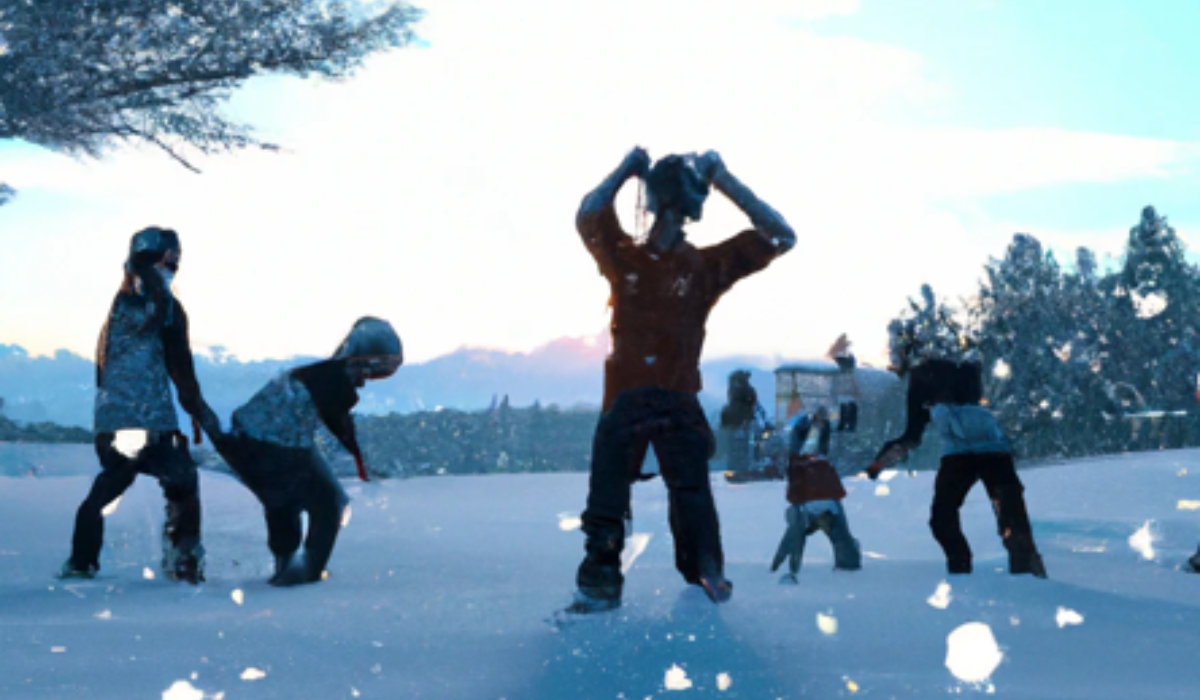
- Details
- Written by: Reveal Magazines
Snowflakes twirl in the air, creating an ethereal ambiance, glistening in the light of the sun. The cold, crisp air is rustling through the trees and frosting the ground in a thin blanket of white. Winter is such a beautiful season, and here are five ways to get out and enjoy all the snow and ice this season.
Snowshoeing is a great way to explore the winter wonderland. Put on your snowshoes and meander through the snow-covered trails. Enjoy the serenity of the snow-covered trees and the fresh winter air.
The best part is that you don't need any special skills or equipment. All you need is a pair of snowshoes and a good pair of winter boots. Then you can explore the snow-covered landscape for hours.
Ice skating is a great way to enjoy the winter season. Whether you’re a beginner or a pro, you can enjoy the smooth glide of the ice and the feeling of freedom. Skate around the rink and enjoy the winter scenery.
If you’re a beginner, don’t worry. There are plenty of places that offer skating lessons. With some practice, you’ll be gliding around the ice in no time.
Sledding is a classic winter activity that’s perfect for the whole family. Grab your sled and hit the slopes. Enjoy the thrill of the ride and the feeling of the wind in your hair.
If you don’t have a sled, don’t worry. You can rent sleds at many local ski resorts or even make your own. All you need is a few supplies and a bit of creativity.
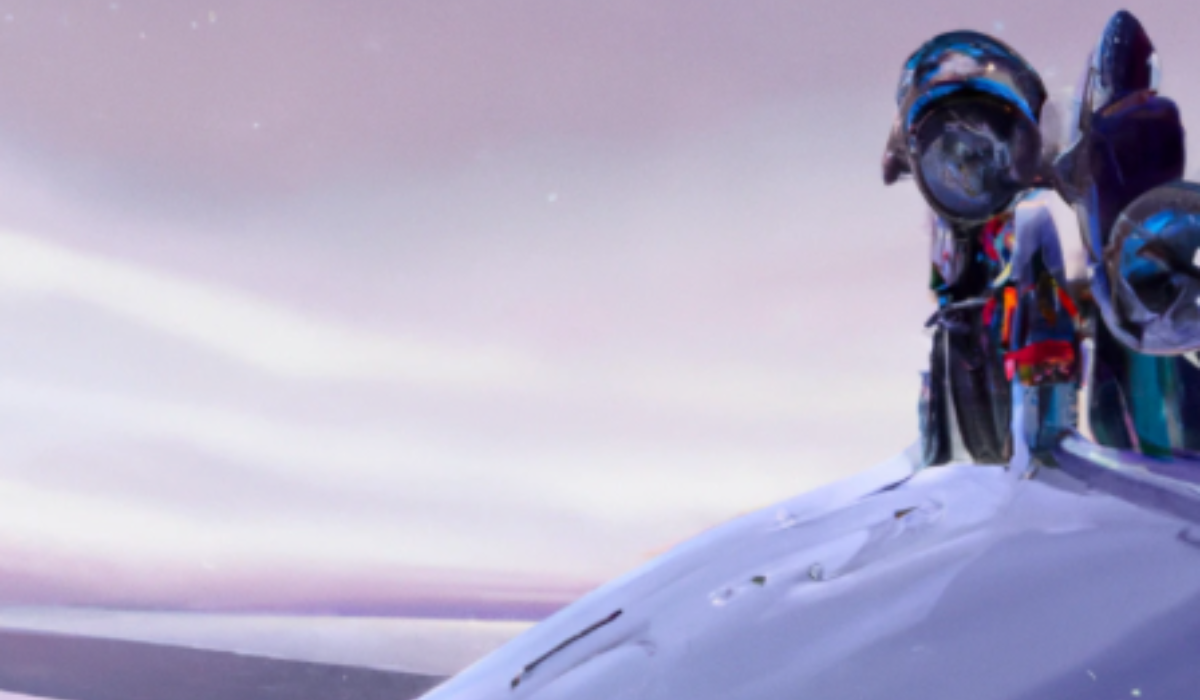
Ice fishing is a peaceful way to enjoy the winter season. With the right equipment, you can sit on the frozen lake and wait for the fish to bite. Enjoy the peace and quiet of the winter landscape.
If you’re new to ice fishing, don’t worry. There are plenty of resources available to help you get started. With a bit of practice, you’ll be catching fish in no time.
Snowball fights are a great way to have fun in the snow. Gather your friends and family and have a blast throwing snowballs at each other. Enjoy the laughter and the feeling of the snow in your hands.
If you don’t have any friends or family to join in, don’t worry. You can always have a snowball fight with yourself. Grab a few snowballs and have a blast!

- Details
- Written by: Reveal Magazines
As more frequent travel intentions rise, so does the topic of more sustainable and eco-conscious travel intentions. Exploring and travelling brings us closer to our earth's natural wonders and connects us with cultures and history around the globe. There are several things to consider when heading out for a day-tripping excursion that can build up better, more earth-friendly travel habits.
Planning Sustainable Day Trips
Day trips are a great way to explore new places without having to commit to an overnight stay. It's important to make sure you're leaving a minimal environmental footprint. A few considerations when planning your excursion:
- Pack a reusable lunch bag with snacks and drinks.
- Avoid single-use items like plastic water bottles and disposable bags.
- Bring a refillable water bottle and fill it up at water fountains or restaurants.
- Bring a reusable coffee mug for coffee or tea stops.
Transportation
Whenever possible, opt for public transportation, carpooling, or walking. If you must drive, consider using a hybrid or electric vehicle. If you're taking a plane, look for airlines that use sustainable fuel sources.
If you're renting a car, look for companies that offer hybrid or electric vehicles and choose a car that's appropriate for the number of passengers travelling with you. This will help reduce emissions and save money on fuel.
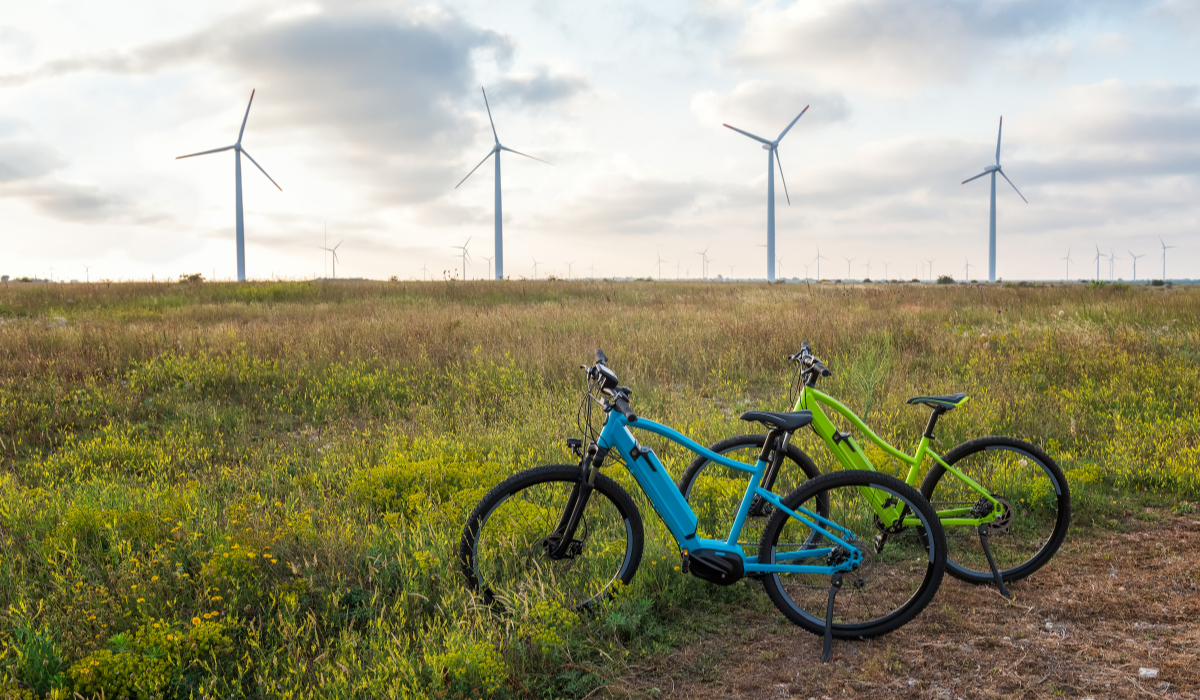
Local Experiences
Look for local experiences that are more authentic to the area and local cultures. Explore the local businesses, farmers' markets, outdoor trails, and even public art scenes. Buy local produce and souvenirs. Choose activities that don't require a lot of energy or resources. For example, hiking, biking, and kayaking are all great ways to explore new places without leaving a large footprint.
Souvenirs
Unique, one-of-a-kind items made from recycled materials are not only a sustainable option by reducing waste but also make more interesting keepsakes. Purchasing from local artisans not only supports the artist but the local economy.
Accommodations
If you do decide to turn your adventure into an overnight stay, look for accommodations that are certified green. Choose hotels or bed & breakfasts that use renewable energy sources and have sustainable practices in place such as hotels that offer reusable amenities.
If camping is more your style, one of the most important things is to pack out all your trash. Choose a campsite that's close to your destination and make a focused effort to minimize your impact on the surroundings.
Overall, remember to pack light and bring reusable items. Choose local experiences and support local businesses. With these tips, you're sure to have a sustainable and enjoyable adventure. Above all, have fun and explore the world with a lighter footprint.
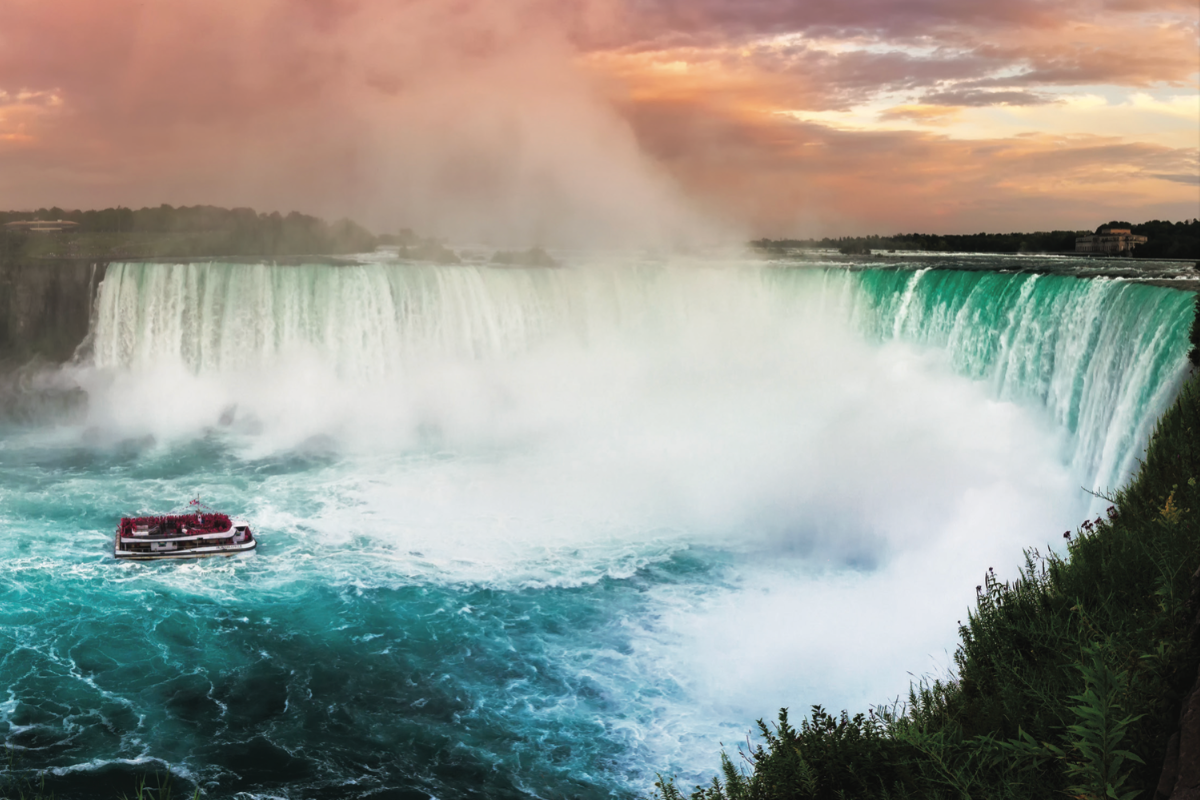
- Details
- Written by: Gabriell Tieman-Lee
Natural marvels, world-class entertainment and one-of-a-kind towns; with so much to see and do, prioritizing your Niagara vacation can be overwhelming, to say the least. This leaves many visitors with the sense that while they may have seen and done a lot, their vacation really only scratched the sur- face of Niagara’s many attractions.
For first-timers to the Region, it’s easy to feel like you should spend all your time in the tourist heavy Niagara Falls district. But depending on your length of stay, Niagara’s surrounding pockets hold an abundance one-of-a-kind experiences you do not want to pass by.
Whether you’re visiting the Region for an extra long weekend, touring Niagara for five days or planning a week-long vacation, get inspired by these itineraries to carve out your own adventure.
3-Day Visit
From the jaw-dropping natural attractions of Niagara Falls and Niagara-on-the-Lake to the bright carnival charm of Clifton Hill, this three-day itinerary highlights the must-see at- tractions for groups who want to enjoy a little bit of it all in a short span of time.
DAY 1:
When you hear Niagara what do you think? Niagara Falls of course! No matter how many times you have visited the Region, the mighty power of this natural wonder never ceases to amaze. Niagara Falls hosts an endless variety of activities, tours and attractions based solely on the history and power of Niagara Falls – all of which bring you up close and personal with the power of water and sets the tone for a perfect vacation in the Region.
Get right into the action by taking a self guided walking tour alongside the waterfalls. From the sidewalk of the Niagara Parkway, you’re able to view, feel and hear the thundering power of both the American Bridal Veil Falls and the Canadian Horseshoe Falls – you’ll even feel the mist that sprays the roadway as you get closer to the Horseshoe. Looking to get even closer than this? The Journey Behind the Falls tour takes you 125 feet down into 130-year-old tunnels through the bedrock behind the Falls – you’ll feel the vibration of the water long before you see it. Don a poncho and step out onto the viewing deck for a once-in-a-lifetime view of the thundering water. Curious where the trillions of gallons of water end up going? The White Water Walk offers a different perspective on the power of the water. Make your way down to water level on another self guided tour along the Niagara River; walk the board- walk and come up close to class six rapids and dangerous whirlpools.
TRAVELING WITH KIDS? Additional activities you may want to include in your first day: Venture into the waters of the Falls on a boat tour with Hornblower Niagara Cruises, dangle high above the Niagara whirlpool on a trip across the river on the Whirlpool Aero Cable Car, take an elevator up 775 feet for a Birdseye view of the falls from the Skylon Tower.
TRAVELING WITH ADULTS? Additional activities you may want to include in your first day: Fly 2200 feet down towards the base of the Horseshoe Falls with WildPlay Niagara Falls
MistRider Zipline, take a one hour high speed ride upriver into the Devil‘s Hole rapids with Whirlpool Jet Boat tours.
DAY 2:
Now that you have enjoyed some of the main attractions, its time to explore the other side of Niagara Falls: Fallsview Boulevard, Lundy’s Lane and the popular Street of Fun by the Falls – Clifton Hill. These streets are filled with restaurants, shows and games for all ages. Park your car at one of the many lots and take in the sights by foot – this will allow you to fully enjoy the lights and sounds at a slower pace and pick and choose your activities as you go. Enjoy a funnel cake, ride the SkyWheel and be a kid for the day. If the weather becomes crummy? Don’t worry! Many of these attractions are indoors allowing for all season fun.
TRAVELING WITH KIDS? Activities you may want to include in your second day: Drive through Canada’s first ever elevated go-kart race course at Niagara Speedway, paint your own pottery souvenir at Crock A Doodle, enjoy year-round 84-degree weather and 16 water slides at the Fallsview Indoor Waterpark, learn to skydive in the safety of an indoor wind tunnel at Niagara FreeFall, take in a Vegas caliber dinner and show at the Greg Frewin Magic Theatre.
Consider purchasing a Clifton Hill Fun Pass which bundles many of Clifton Hill’s attractions [including the Movie Land Wax Museum, Dino Adventure Golf, Wild West and Zombie Attack 6D Motion Rides, the SkyWheel and arcades] together at a discounted rate.
TRAVELING WITH ADULTS? Activities you may want to include in your second day: relax with a cold one at one of Niagara Falls’ many craft breweries including Niagara Brewing Company, Taps Brewhouse and Counter- part Brewing, work as a team to escape from a puzzle based room at the CRUX Escape Room, enjoy a multi-course Niagara farm-to-table meal at contemporary restaurant Weinkeller, gamble and take in a show at the Fallsview Casino Resort.
DAY 3:
Step outside the tourist heavy district of Niagara Falls and explore the quieter side of the Region – including the picture-perfect town of Niagara-on-the-Lake. Tucked along the shores of Lake Ontario, the beautiful historic town and surrounding area is the perfect spot for a day trip. A travel destination for wine lovers and foodies, if you are looking to enjoy world-class cuisine and vintages from top wine makers and chefs, you have come to the right place. Niagara-on-the-Lake is also a great area for families with kids looking to burn off the cotton-candy fun of Clifton Hill with some fresh air.
TRAVELING WITH KIDS? Activities you may want to include in your third day: Burn off some energy and face your fear of heights at WildPlay Niagara’s Aerial Adventure Course – there are three courses available for ages five and up [TIP – bundle this adventure with Wild- Play’s MistRider Zipline from Day 1], enjoy an ice cream cone from COWS on Queen Street, dip your toes in Lake Ontario and enjoy a picnic in Queens Royal Park. Take a tour of the historic Fort George.
TRAVELING WITH ADULTS? Activities you may want to include in your third day: Wineries and breweries galore; explore, sip and sample at over 30 wineries and breweries nestled below the Escarpment and along the Park- way, shop the boutiques along Queen Street in the historic Old Town Heritage District, enjoy a traditional High Tea at the Prince of Wales Hotel, treat yourself to a spa day at the Oban Inn, take in a show at the Shaw Festival Theatre.
5-Day Visit
Have you enjoyed Niagara so much you’ve decided to extend your trip for a few extra days? We do not blame you! With a five-day visit in the Region, you have the ability and time to ex- tend your days past the main hub of tourist activity in Niagara Falls and Niagara-on-the-Lake and explore the lesser traveled – but equally beautiful and active – pockets of the Niagara Region. Take a bike tour through the town of Virgil, bask in the sun with a beach day in Port Dalhousie or enjoy a show at the First Ontario Performing Arts Centre in St. Catharines – there are so many activities to fill your visit!
DAY 4:
It’s time to ditch your car and enjoy the outer boroughs of Niagara by an alternative mode of slower transportation. Niagara is host to a variety of companies who offer equipment rentals and intimate tours via bike or kayak and sky-high exploration by private helicopter. Explore the surrounding vineyards or savour some of the best wood oven pizzas in the quaint town of Virgil. ZOOM Leisure Bikes, a bike rental company, has over 10 bikeshare locations through- out Niagara and also offers bike delivery and pickup services – saving you from backtracking at the end of the day in order to return your rental. Explore Niagara’s calmer waters and shorelines with Niagara Kayak Rentals. Getting you and your family in the water quick and efficiently, they are one of Canada's first fully mobile kayak rental services, meaning they meet you on site at one of their launch destinations with all of the necessary equipment and training. All you have to do is show up!
TRAVELING WITH KIDS? Additional activities you may want to include in your fourth day: Take a bike ride to NEOB Lavender and pick-your-own lavender bouquets in the fairytale-esque purple plumed field, enjoy a wood-oven pizza on the sun-soaked patio at Bricks and Barley in central Virgil, bird watch from your tandem kayak along the shallow shores of Lake Ontario.
TRAVELING WITH ADULTS? Additional activities you may want to include in your fourth day: Experience the thrill of a lifetime and sore above the turbulent waterfalls on a tour with Niagara Helicopters, cycle over to Wayne Gretzky Winery and sample whiskey flights at their tasting bar, bike to Cheese Secrets and sample the largest selection of Canadian cheeses in the Region, listen to live out- door music on Niagara Oast House Brewers’ flatbed farm truck Federal Stage.
DAY 5:
Take a quick trip down the highway from Niagara Falls and visit the city of St. Catharines for the day. Featuring a thriving alternative arts scene, lively theatre community, beautiful shoreline parks, unique boutique shopping and some of the best food in the Region, this day trip is sure to be a highlight of your vacation.
Start your day at Beechwood Doughnuts – trust us, you won’t be disappointed. The provincially famous doughnut shop is Niagara’s first and only 100 per cent vegan doughnut shop [you would never be able to tell if we didn’t tell you] offering doughnuts the size of your face in unique flavours including: birthday cake, ba- nana bread fritter, chai latte, cookie dough and classic favourites. From here, explore the town’s independent shops selling all kinds of hand- made artisanal goods. Visit the indoor/out- door St. Catharines Farmers Market for local produce and seasonal merchandise – housed in the glass Market Square building every Tues- day, Thursday and Saturday. Looking for more? Venture down the road towards Lake Ontario to Port Dalhousie; known for its waterfront ap- peal and beautiful beach, the town is home to the Royal Canadian Henley Regatta and many beautiful boats can be found docked here.
Finish your day with a show at the First Ontario Performing Arts Centre or the Meridian Centre/Arena – both located blocks from each other in downtown St. Catharines. Both venues host a wide variety of shows, concerts, interactive performances, sporting events and more multiple days of the week, all year round for all ages.
TRAVELING WITH KIDS? Additional activities you may want to include in your fifth day: Take a ride on the antique Port Dalhousie Carousel in Lakeside Park [it costs only five cents to ride!], bounce off some energy at Sky Zone Trampoline Park, enjoy a hike at Decew Falls, visit the petting zoo at Happy Rolph’s Animal Farm, play in the splash pad at Lester B. Pearson Park, get competitive with a game of bowling at Parkway Social (they also have an arcade and laser tag!).
TRAVELING WITH ADULTS? Additional activities you may want to include in your fifth day: Enjoy a craft cocktail and some nostalgia at Ludology Boardgame Café downtown St. Catharines, play a game of volleyball at Sunset Beach, peruse local art and take in some open mic performances at
Mahtay Café & Lounge, enjoy a film and a glass of wine at The Film House – the only licensed cinema in St. Catharines.
7-Day Visit
A week long visit is the ideal amount of time to experience the Niagara Region. The Region spans almost 2,000 square kilometers and is made up of a number of beautiful little towns ideal for day trips away from your hotel – the perfect getaway within a getaway! With a seven-day trip planned, you can venture out to either end of the Region; exploring the quaint towns of Ridgeway and Crystal Beach on one end and the agriculture rich Vineland, Beamsville and Jordan on the other.
DAY 6:
Pack up the car for a day long adventure and head west down the highway towards the areas of Vineland, Beamsville and Jordan. These quiet communities within the town of Lincoln and sur- rounding area hold quaint downtown networks, artisanal restau- rants and over 50 award-winning wineries – which differ from their Niagara-on-the-Lake sisters due to the lakes and placement on the escarpment. The area also has a number of beautiful hiking trails which vary in difficulty and connect to the Bruce Trail [which crosses through the Region].
TRAVELING WITH KIDS? Additional activities you may want to include in your sixth day: Visit Pirate Ship Cove – the first in Niagara to offer an on-the-water inflatable water park along side kayak and paddle board rentals, take a walk at the Balls Falls Con- servation Area and enjoy their beautiful parkland, hiking trails and education programs [run at various times throughout the year], pick your own fruit at Cherry Avenue Farms.
TRAVELING WITH ADULTS? Additional activities you may want to include in your sixth day: Visit the Jordan Art Gallery which promotes original work by Niagara residents, learn the art of distilling at Dillon’s Distillers, take a cooking class at The Good Earth Food and Wine Co., search for hidden gems at Prudhommes Antique and Flea Market, enjoy five-star Mediterranean cuisine at the Lake House Restaurant.
DAY 7:
Take a drive east towards the American border and you will find yourself in the towns of Ridgeway and Crystal Beach. Though qui- et in the winter months, these towns come alive in the spring and summer, filling with tourist looking to enjoy the old-school beach town vibes with their ice cream shops, batten board restaurants, gorgeous sandy beaches and overall laid-back vibes.
The main street of Ridgeway is the perfect spot for grabbing a bite to eat before heading to the beach. Have a snack and a pint at Brimstone Brewery; this local craft brewery features a rotating menu and beautiful outdoor patio – perfect for a sunny day. The brewery is also attached to The Sanctuary - Centre for the Arts – a community-based event and concert space used for private func- tions, classes and all-ages music shows. After lunch, head towards Lake Erie and you will find yourself in Crystal Beach. Spend the day in the clean waters, walking the shoreline and sampling food truck bites.
TRAVELING WITH KIDS? Additional activities you may want to include in your seventh day: Visit Safari Niagara and get up close and personal with more than 1000 native and exotic animals
TRAVELING WITH ADULTS? Additional activities you may want to include in your seventh day: Sample house made choco- lates at Nigh’s Sweet Shop, enjoy live entertainment at the Crystal Chandelier.

- Details
- Written by: Pulse Point Unit
May in Ontario marks the return of one of the province’s most cherished cultural experiences: Doors Open Ontario. Organized by the Ontario Heritage Trust, this initiative allows residents and visitors to explore some of the region’s most fascinating buildings, heritage sites, and cultural landmarks—many of which are not usually open to the public.
Throughout the month of May, towns and cities across Ontario host their own versions of Doors Open, each showcasing unique local treasures. From historic churches and opera houses to restored railway stations and modern architectural gems, the program invites participants to go behind the scenes and engage with history in a hands-on way.
One of the standout features of the event is the diversity of sites available. Whether you're an architecture buff, a history enthusiast, or someone simply curious about your community’s heritage, there's something for everyone. The events are free to attend, making them an ideal weekend outing for families, couples, or solo explorers.
In addition to physical site visits, some communities offer virtual tours and interactive programming for those who prefer a digital experience. The Ontario Heritage Trust also collaborates with local historians, artists, and cultural groups to enrich the storytelling behind each location.
Doors Open is more than just a tour—it’s a celebration of the people and places that have shaped Ontario. It's also an important reminder of the value of preservation, community memory, and accessible culture.
For dates, locations, and a full listing of participating sites in your area, visit the Ontario Heritage Trust website.
Source: Ontario Heritage Trust – Doors Open Ontario (https://www.heritagetrust.on.ca/en/pages/programs/doors-open-ontario)

- Details
- Written by: Key Trends Staff
Ontario is the ultimate destination for Halloween enthusiasts, offering an array of eerie, thrilling, and family-friendly experiences.
Whether you’re looking for spine-chilling frights or a fun night out, here are the top five places to visit for an unforgettable Halloween in Ontario:
1. Canada’s Wonderland – Halloween Haunt (Vaughan)
Canada’s Wonderland transforms into a terrifying spectacle every October with Halloween Haunt, one of the most popular haunted events in the province. The park features mazes, scare zones, haunted attractions, and live entertainment that will have your heart racing. With over 700 monsters roaming the park and dozens of scare zones, Halloween Haunt promises a hair-raising adventure for those who dare to enter.

2. Haunted Walk of Toronto (Toronto)
Explore the darker side of Toronto with the Haunted Walk tours. Known for their eerie storytelling, these walks guide you through the city’s most haunted locations, uncovering spine-chilling tales of ghosts, tragic accidents, and unsolved mysteries. The Distillery District is a particular highlight, with its historic, atmospheric setting adding to the experience. It’s a great mix of history and horror, perfect for those looking for something a bit more low-key but still filled with intrigue.

3. Fort Fright at Fort Henry (Kingston)
Located at Fort Henry in Kingston, Fort Fright is one of Ontario’s premier haunted attractions. This historic fort becomes a nightmarish environment with interactive horror zones, immersive storytelling, and terrifying characters. The 19th-century fort’s eerie setting creates the perfect backdrop for a night of horror, making it a must-visit for thrill-seekers. This haunted fortress experience is a blend of history and horror like no other.

If you’re looking for the ultimate haunted house experience, Screemers in Toronto is the place to go. Featuring multiple haunted houses, including the infamous ‘Kill Show,’ Screemers is known for its intense scares and top-notch special effects. Live actors, horrifying sets, and blood-curdling attractions make this event one of Ontario’s best for those looking for extreme Halloween thrills.

5. Pumpkinferno at Upper Canada Village (Morrisburg)
For a more family-friendly yet stunning Halloween experience, Pumpkinferno at Upper Canada Village is a must. This enchanting outdoor exhibit features over 7,000 hand-carved pumpkins illuminated in artistic displays along a one-kilometer path. It’s the perfect blend of artistry and seasonal charm, offering a mesmerizing Halloween experience suitable for all ages.

These destinations are sure to make your Halloween in Ontario unforgettable, offering a variety of scares and experiences for everyone. Whether you’re a thrill-seeker or looking for something a little more magical, Ontario’s top spots are ready to deliver.
Sources:
https://www.canadaswonderland.com

- Details
- Written by: Key Trends Staff
In the global landscape of wealth, Canada and the world at large showcase a stark contrast in terms of the wealthiest individuals.
In Canada, the richest individuals often come from diverse sectors such as real estate, retail, and natural resources. For instance, the Thomson family, owners of Thomson Reuters, holds a commanding presence in Canadian wealth. Similarly, David Thomson and his family, with their investments across various industries, also feature prominently on the list.
On the international stage, the richest people are frequently tech giants and industrialists who have leveraged rapid technological advancements and global market expansions. Individuals like Elon Musk, CEO of Tesla and SpaceX, and Bernard Arnault, Chairman of LVMH, exemplify this trend. Musk's wealth is tied to his revolutionary work in electric vehicles and space exploration, while Arnault’s fortune comes from luxury goods and fashion, sectors with global consumer appeal.
The scale of wealth among the world's richest is often magnified by their ability to influence global markets and trends. For instance, Jeff Bezos, the founder of Amazon, saw his fortune skyrocket as e-commerce surged worldwide. Similarly, Mark Zuckerberg’s wealth, driven by the dominance of Meta Platforms (formerly Facebook), highlights the impact of social media on global wealth accumulation.
In contrast, Canadian billionaires, while influential and wealthy, often operate within a more localized or regional market. Their wealth, while substantial, does not typically reach the astronomical figures seen in global rankings.
While Canada's richest individuals make significant contributions to both national and international markets, the world’s wealthiest are often those who have harnessed global technology and market trends to achieve unprecedented levels of wealth.
Sources:
https://www.forbes.com/billionaires/
https://en.wikipedia.org/wiki/List_of_Canadians_by_net_worth

- Details
- Written by: Reveal Magazines
Happy Mother's Day Weekend!
Get ready for an unforgettable weekend of celebration and bonding with mom! From sunrise to sunset, indoors and outdoors, we've curated a list of fun-filled activities to treat mothers every half-an-hour.
Whether you're snuggled up at home or exploring the great outdoors, there's something for everyone to enjoy. Start the day with breakfast in bed, embark on a nature walk, indulge in a DIY spa session, and cap it off with a starlit dinner under the night sky. With a mix of relaxation, adventure, and quality time together, this weekend promises to be one for the books. So grab your calendar, mark off those half-hours, and get ready to make memories that will last a lifetime!
Daytime at Home:
9:00 AM - Breakfast in Bed: Start the day by surprising mom with a delicious homemade breakfast served in bed.
9:30 AM - Morning Yoga Session: Practice yoga together for 30 minutes to energize and rejuvenate.
10:00 AM - DIY Spa Time: Set up a relaxing spa experience at home with face masks, scented candles, and soothing music.
10:30 AM - Indoor Picnic: Spread out a picnic blanket and enjoy a cozy indoor picnic with mom's favourite snacks.
11:00 AM - Arts and Crafts: Get creative with a fun crafting activity, like painting, pottery, or DIY projects.
Daytime Outside:
12:00 PM - Nature Walk: Explore a nearby park or nature trail together and soak in the beauty of the outdoors.
12:30 PM - Picnic in the Park: Pack a picnic lunch and enjoy a meal together in the great outdoors.
1:00 PM - Bicycle Ride: Go for a leisurely bike ride around the neighbourhood or along a scenic trail.
1:30 PM - Garden Time: Spend time gardening together, planting flowers, or tending to the garden.
2:00 PM - Ice Cream Outing: Treat mom to her favourite ice cream flavour at a local ice cream shop.
Evening at Home:
5:00 PM - Cocktail Hour: Mix up some refreshing cocktails or mocktails and enjoy a drink together.
5:30 PM - Cooking Together: Prepare dinner as a team, trying out a new recipe or cooking mom's favorite dish.
6:00 PM - Family Game Night: Play board games, card games, or puzzles for some friendly competition and fun.
6:30 PM - Movie Marathon: Have a movie marathon with mom's favorite films, complete with popcorn and snacks.
7:00 PM - Living Room Dance Party: Turn up the music and dance together in the living room for some high-energy fun.
Evening Outside:
8:00 PM - Dinner Date: Enjoy a delicious dinner at a favorite restaurant, savoring each other's company.
8:30 PM - Evening Walk: Take a leisurely stroll around the neighborhood or along a scenic pathway.
9:00 PM - Star Gazing: Spend time under the stars, marveling at the night sky and enjoying quiet conversation.
9:30 PM - Dessert under the Moonlight: Indulge in a sweet treat outdoors, like cake or pastries, while soaking in the evening ambiance.
10:00 PM - Bedtime Story: Wind down the day with a bedtime story or a cozy chat before heading off to bed.
These ideas offer a diverse range of activities to enjoy with mom throughout the day, ensuring a weekend filled with love, laughter, and cherished memories.

- Details
- Written by: Reveal Magazines
Roses are red, violets are blue, and love is in the air – or so they say. As Valentine's Day sweeps across the globe like a tide of heart-shaped confetti, it's hard not to get swept up in the flurry of romantic gestures, chocolate-fueled declarations, and last-minute reservations at overpriced restaurants.
But amidst the frenzy of Cupid's arrows and hastily scribbled love notes, it's worth taking a moment to ponder the peculiarities of this peculiar holiday. For centuries, Valentine's Day has been celebrated with a fervour bordering on the religious, as couples scramble to prove their undying affection with an assortment of clichéd gifts and grand gestures.
Yet, for all its romantic allure, Valentine's Day has a knack for bringing out the cynic in even the most starry-eyed among us. After all, what other holiday can lay claim to such a potent combination of inflated expectations and inevitable disappointment? From wilted roses to ill-conceived teddy bears, the road to true love is paved with more than its fair share of cringe-worthy missteps.
But fear not, for amidst the sea of heart-shaped balloons and sappy greeting cards, there is still hope for the romantically challenged among us. For what truly matters on this most auspicious of days is not the grandeur of the gesture, but the sincerity of the sentiment behind it.
So whether you find yourself entangled in a web of roses and chocolate or flying solo in a sea of heart-shaped balloons, remember that love comes in many forms – and sometimes, the most meaningful gestures are the ones that come from the heart.
So here's to love in all its messy, unpredictable glory – may your Valentine's Day be filled with laughter, joy, and just the right amount of chocolate to get you through the inevitable sugar crash.
And if all else fails, there's always next year. After all, as they say, absence makes the heart grow fonder – or at the very least, gives you plenty of time to perfect your pickup lines for next February 14th. Cheers to love, laughter, and the occasional awkward encounter with a heart-shaped balloon. Happy Valentine's Day – may your heart be as full as your inbox on this most romantic of days.
Impact-Site-Verification: 0e5dd0b2-906f-44b3-828a-c75f2c8f7a43

- Details
- Written by: Reveal Magazines
The art world is an ever-changing landscape, and a digital revolution is taking center stage – the rise of Non-Fungible Tokens (NFTs). These unique digital assets have become a hot topic, disrupting traditional art markets and challenging conventional notions of ownership and value. The fascinating realm of NFT is worth exploring as their meteoric ascent and profound impact is being felt across the artistic landscape.
The Birth of NFTs:
Non-Fungible Tokens, or NFTs, burst onto the scene with the explosive growth of blockchain technology. Built on the foundation of decentralized ledgers, NFTs represent a form of digital ownership secured by cryptographic principles. What makes them truly revolutionary is their ability to verify and authenticate the uniqueness of digital content, a feat previously elusive in the digital realm.
Artists Embrace the Digital Canvas:
NFTs have ushered in a new era for artists, providing an alternative canvas for their creative expressions. Digital artists, in particular, have found a newfound freedom in the NFT space, breaking free from the constraints of the physical world. The ability to tokenize digital creations has allowed artists to directly connect with a global audience, transcending geographical boundaries.
Challenges and Opportunities:
As with any groundbreaking innovation, the rise of NFTs in the art world is not without its challenges. The environmental impact of blockchain technology has sparked debates about the sustainability of NFTs. Additionally, questions surrounding copyright and intellectual property rights have arisen, raising concerns about the potential for exploitation in the digital realm.
However, amid these challenges, there are unprecedented opportunities. NFTs provide a new revenue stream for artists, enabling them to monetize their work in ways previously unimaginable. Smart contracts embedded in NFTs allow artists to earn royalties every time their work changes hands, creating a sustainable income model. This democratization of revenue is reshaping the dynamics of the art market, empowering creators like never before.
The NFT Marketplaces:
Central to the rise of NFTs are the online marketplaces that facilitate the buying and selling of these digital assets. Platforms like OpenSea, Rarible, and Mintable have emerged as virtual galleries, showcasing an array of digital collectibles, from digital art and music to virtual real estate. These marketplaces have become hubs of creativity, fostering a sense of community among digital artists and collectors alike.
The Collector's Experience:
For art enthusiasts and collectors, NFTs offer a novel and immersive experience. The ownership of a digital asset is recorded on the blockchain, providing an unforgeable proof of authenticity. Collectors can delve into the history of their NFT, tracing its origins and ownership. The ability to showcase digital art in virtual spaces adds an exciting dimension to the traditional art-collecting experience.
The rise of NFTs in the art world represents a paradigm shift, challenging conventional norms and reshaping the way we perceive and value art. As artists continue to embrace the digital revolution and collectors explore new frontiers, the intersection of technology and creativity is giving rise to an era where the boundaries between the physical and digital worlds blur. The impact of NFTs on the art world is still unfolding, but one thing is certain – it's a transformative journey that promises to leave an indelible mark on the canvas of art history.

- Details
- Written by: Reveal Magazines
In the hallowed halls of education, a raging debate has erupted, shaking the foundations of literature-based learning. At the center of the storm lies a question that has divided educators, parents, and students alike: Should problematic classic literature be removed from school curriculums? As society grapples with issues of representation, inclusivity, and historical context, the fate of timeless works hangs in the balance.
The Tug-of-War Between Cultural Heritage and Modern Sensibilities
On one side of the battleground are the defenders of cultural heritage. They argue passionately that classic literature provides a glimpse into the past, acting as a window into the bygone eras of humanity. These texts, they argue, capture the essence of societal norms, values, and attitudes of their time, allowing students to develop a more comprehensive understanding of our collective cultural evolution.
Dr. Emily Thompson, an esteemed English literature professor, passionately advocates for the preservation of these works. "Classic literature is a tapestry of human history," she proclaims, "it helps us learn from our past and reflect on how far we've come as a society."
But the opposing forces are unyielding, as they raise the banner of modern sensibilities and inclusivity. Dr. Maya Patel, a sociocultural anthropologist, believes it is high time to embrace the voices that were once silenced. "While classic literature has its merits, we must not overlook the harm perpetuated by some texts," she asserts. "It's time to celebrate the diversity of experiences and promote underrepresented voices."
The Power of Uncomfortable Conversations
In the eye of the storm, a potent argument for retaining problematic literature emerges: the power of uncomfortable conversations. Proponents assert that these works force students to confront the complexity of human existence, enabling them to develop critical thinking skills and empathy. Dr. James Cooper, an education expert, contends that confronting uncomfortable ideas challenges students to think beyond their comfort zones, a crucial skill for becoming well-rounded individuals.
"Education is not just about absorbing facts; it's about questioning and reasoning," Dr. Cooper asserts. "Problematic literature provides an opportunity for students to engage in meaningful debates, fostering a generation of thoughtful and empathetic citizens."
However, the opposing camp warns against the cost of such conversations. Dr. Lisa Chen, a child psychologist, highlights the potential harm caused by exposing young minds to derogatory content. "The psychological toll of consuming harmful messages should not be underestimated," she warns. "We must prioritize the mental well-being of our students while promoting learning environments that encourage positivity and self-worth."
Striking a Balance Between the Past and the Present
As the battle intensifies, the battlefield expands to encompass the issue of educational relevance. Should curriculums be updated to better reflect the diverse world students inhabit today, or should they remain anchored in the past, preserving linguistic and literary heritage?
Dr. Sarah Johnson, an educational policy researcher, champions the need for change. "Education should be relevant and relatable to the lives of our students," she insists. "By introducing contemporary and culturally diverse literature, we empower students to see themselves reflected in their studies, fostering a more inclusive and enriching learning experience."
Nonetheless, defenders of classic literature, like linguistics scholar Dr. Robert Lee, remind us of the linguistic treasure troves these works present. "Language is a living entity, and the evolution of words and phrases can be better understood through the study of classic literature," Dr. Lee argues. "It's a linguistic journey that bridges the past and the present."
A Path Forward: Embracing Complexity and Nuance
As the battlefield of ideas rages on, perhaps the solution lies in embracing complexity and nuance. Rather than opting for a sweeping cancellation or stubborn preservation, educators could take a more thoughtful and balanced approach.
By curating a diverse array of literature, including classics, contemporary works, and those representing marginalized voices, educators can foster an environment where students are encouraged to think critically and compassionately. Acknowledging the problematic elements of certain texts while using them as catalysts for dialogue and growth allows for a more enlightened educational experience.
In the end, the controversy of canceling classic literature hinges on a delicate balance. By celebrating our cultural heritage while also challenging its problematic aspects, we can empower the next generation to build a more inclusive, compassionate, and enlightened society. It is through this thoughtful navigation that we can shape the future while honoring the lessons of the past.
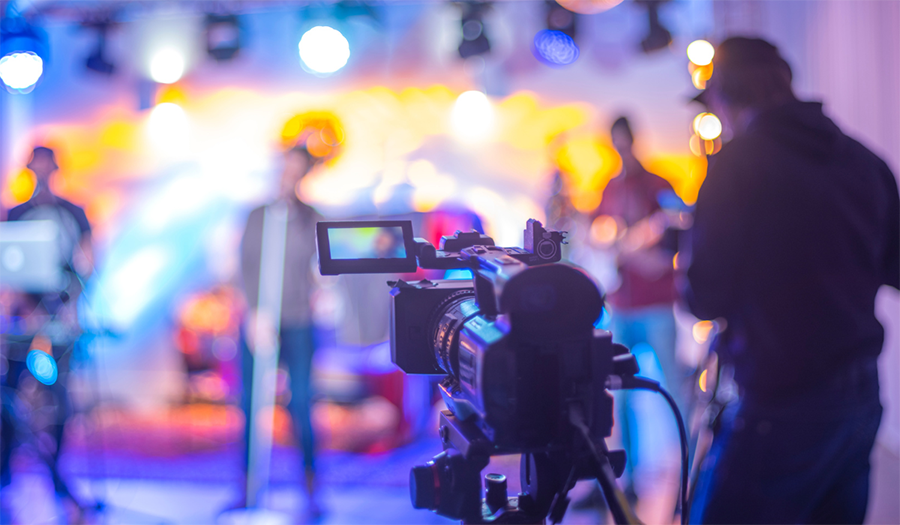
- Details
- Written by: Reveal Magazines
Ontario, Canada, is a popular location for filming movies and TV shows. With its diverse landscapes, unique architecture, and talented workforce, it's no surprise that many filmmakers choose to shoot their projects in the province. In this article, we will explore some of the most famous movies that were filmed in Ontario.
Suicide Squad (2016)
The superhero movie Suicide Squad was filmed in various locations throughout Ontario, including Toronto, Hamilton, and Sudbury. The movie's iconic car chase scene was filmed on Bay Street in Toronto, and the city's Union Station was used as the setting for a pivotal scene in the movie.
It (2017)
The 2017 adaptation of Stephen King's It was partially filmed in Ontario. The small town of Port Hope was transformed into the fictional town of Derry, Maine, and the movie's famous sewer scenes were filmed in Oshawa, Ontario.
Chicago (2002)
The Academy Award-winning musical Chicago was filmed in Toronto, Ontario. The city's unique architecture and bustling streets were used as the backdrop for many of the movie's iconic dance numbers.
The Incredible Hulk (2008)
The Incredible Hulk, starring Edward Norton, was partially filmed in Toronto, Ontario. The movie's famous fight scene between the Hulk and Abomination was filmed on Yonge Street, one of the city's busiest thoroughfares.
The Shape of Water (2017)
The Shape of Water, the Academy Award-winning fantasy romance, was filmed in Toronto, Ontario. Many of the movie's interior scenes were filmed at a soundstage in the city, and the Elgin Theatre was used as the setting for a pivotal scene in the movie.
Good Will Hunting (1997)
The Academy Award-winning drama Good Will Hunting was filmed in Toronto, Ontario. The city's University of Toronto was used as the setting for many of the movie's iconic scenes, including the one where Will solves a complex math problem on a chalkboard.
X-Men (2000)
The first installment of the X-Men franchise was partially filmed in Toronto, Ontario. Casa Loma, the city's famous castle, was used as the setting for Professor Xavier's School for Gifted Youngsters.
In conclusion, Ontario, Canada, has been the backdrop for many famous movies over the years. From the bustling streets of Toronto to the small towns of Port Hope and Oshawa, the province's diverse locations have provided the perfect setting for filmmakers to bring their stories to life on the big screen.

- Details
- Written by: Reveal Magazines
Reading is enjoyable for a variety of reasons. It allows us to escape our own reality and immerse ourselves in a different world or perspective. This can be a refreshing break from our daily lives and can provide a sense of adventure or excitement. When we read about characters and their experiences, we can develop a sense of empathy and understanding for others. This can be a powerful way to connect with people who are different from us and broaden our perspectives. It can also challenge our minds and expose us to new ideas and concepts, which is intellectually stimulating and satisfying and for many people, reading is a calming and relaxing activity that helps them unwind and de-stress.
Have a look at these fiction titles well worth exploring:
Silver Alert
Author: Lee Smith
This funny and endearing novel of family, secrets, and aging follows an elderly man who heads off on a joyride with a new young friend—who may have some secrets of her own.
City Under One Roof
Author: Iris Yamashita
A stranded detective tries to solve a murder in a tiny Alaskan town where everyone lives in a single high-rise building, in this gripping debut by an Academy Award–nominated screenwriter.
The World and All That It Holds
Author: Aleksandar Hemon
From literary powerhouse Aleksandar Hemon, author of The Lazarus Project comes a big, brilliant, sweeping novel of love, memory, and history-in-the-making.
Crook Manifesto
Author: Colson Whitehead
Two-time Pulitzer Prize-winning Colson Whitehead continues his Harlem saga in a powerful and hugely-entertaining novel that summons 1970s New York in all its seedy glory.

- Details
- Written by: Reveal Magazines
Ottawa, the capital city of Canada, is known for its rich cultural heritage and vibrant art scene. One of the most impressive aspects of Ottawa's art scene is its diverse range of artistic styles, from traditional to contemporary.
The Neo-Impressionist movement has taken the city by storm and has really enhanced the already impressive Ottawa art scene.

Neo-Impressionism is an artistic movement that emerged in the late 19th century, characterized using small, precise brushstrokes and the application of colour in small dots or dashes. This technique, known as pointillism, creates a sense of luminosity and vibrancy in the artwork.
The Neo-Impressionist movement was founded by Georges Seurat and Paul Signac, who believed that art should be based on scientific principles, such as optics and colour theory. They believed that by using these principles, they could create a more objective and accurate representation of reality.
Ottawa has a thriving Neo-Impressionist art scene, with many talented artists creating beautiful works of art inspired by this movement.
Neo-Impressionism in Public Spaces
One of the most impressive aspects of Ottawa's Neo-Impressionist art scene is the large-scale public murals that can be found throughout the city. These murals often depict scenes from Ottawa's history or culture and are created using pointillism techniques to create a sense of depth and texture.
Some of the most famous Neo-Impressionist murals in Ottawa include the mural at City Hall, which depicts the city's skyline, and the mural at the National Gallery of Canada, which showcases the country's rich artistic heritage.

Neo-Impressionism in Museums
Ottawa is home to several museums that showcase the city's rich artistic heritage, including the National Gallery of Canada and the Ottawa Art Gallery. These museums feature many works of art inspired by the Neo-Impressionist movement, including paintings, sculptures, and installations.
One of the most famous Neo-Impressionist works in Ottawa's museums is Georges Seurat's 'A Sunday Afternoon on the Island of La Grande Jatte', which is housed at the National Gallery of Canada. This painting is considered a masterpiece of the Neo-Impressionist movement and is known for its intricate details and vibrant colours.

In conclusion, Ottawa's Neo-Impressionist art scene is a vibrant and exciting part of the city's cultural heritage. From public murals to museum exhibits, there are many opportunities to experience the beauty and complexity of this artistic movement in Ottawa.
Whether you are an art lover or simply interested in exploring the city's rich cultural heritage, Ottawa's Neo-Impressionist art scene is worth checking out.

- Details
- Written by: Reveal Magazines
Niagara Pumphouse Arts Centre Presents ‘What Lies Below’- Solo Exhibition by JudyBlue Anderson
Niagara-on-the-Lake, ON - The Niagara Pumphouse Arts Centre will be featuring the mixed media works by JudyBlue Anderson in a new exhibit titled, ‘What Lies Below’. The show runs from May 30 to June 25 in the Joyner Gallery.
Anderson’s new body of abstract works explores impressions of what lies unseen ‘under the sea’. They portray the human-made tension in the rhythms of nature on man-made debris of shipwrecks.

Photos of deep shipwrecks shot by her friend provided the jumping-off point for creating this new series. The water-loving artist also drew inspiration from her own scuba diving experience.
Using a limited palette, Anderson built layers of colour and pattern to create depth and texture in her composition. What developed with bold strokes and marks are images that depict movement.

According to the artist, the paintings never seem to end up as they start. “Many of my original marks never make it to the finished piece. I just let it take me where it needs to go,” she explains. “In the same way, the aim of my collection is to portray the influence of nature on the rhythms of human-made tension in places that very few will go.”
Anderson hopes viewers of her art think more about what happens under the sea. She hopes they feel the ‘swells and motion of waves crashing or in some cases the quiet peace of the depths of the seas’.

“I would like people to just think about the power of water in nature,” the artist declares. “The images are not literal or representational but I hope they show the bold moves of water or the calm it can also bring. The power of water and weather can cripple even a large freighter.”
An opening reception for the exhibit will be held on Sunday, June 4th from 2:00-4:00 pm. The public is invited to view the works with other art appreciators over a complimentary glass of wine and nibbles. The exhibit is open to the public at no charge. More information can be found at niagarapumphouse.ca/exhibitions.
Media Contact: Aimee Medina,
About Niagara Pumphouse Arts Centre
The Niagara Pumphouse Arts Centre is the art hub that connects our community by providing art for all. Located on the banks of the Niagara River in a heritage building that formerly supplied water to Niagara-on-the-Lake (hence our name); the Niagara Pumphouse Arts Centre offers visual arts programs, exhibitions and events. We give back to the community by providing access to the arts for those in need.

- Details
- Written by: Reveal Magazines
What is it about Broadway that draws us in? Is it the energy of the performers? The talent of the orchestra? The awe-inspiring set designs? From the intricate costumes and choreography to the captivating music and lighting that deeply immerse us in the story, we can all appreciate the way a Broadway experience draws us in and brings us together.
With stages booming again across the country, this is the year to get out and catch a good production. From British Columbia to Newfoundland, find one of these top trending productions playing near you and experience the power of Broadway.
Billy Elliot
Billy Elliot is a musical based on the 2000 British film of the same name. With music by Elton John and book and lyrics by Lee Hall, the show follows the story of a young boy who dreams of becoming a dancer. It features a vibrant score and stunning sets and costumes.
The show has been a hit on Broadway since it opened in 2008 and is set to return in 2023. It is sure to be an unforgettable experience for audiences of all ages. With its inspiring story and uplifting music, Billy Elliot is sure to be a hit on Broadway in 2023.
Come From Away
Come From Away is a musical based on the true story of a small Canadian town that welcomed thousands of stranded travellers from around the world during the aftermath of 9/11. With a book, music and lyrics by Irene Sankoff and David Hein, this heartwarming show captures the spirit of resilience and humanity. It has become a hit on Broadway and is set to return in 2023.
The show features a talented ensemble cast and a powerful score that celebrates the kindness of strangers in a time of crisis. Audiences will be moved by the inspiring story and uplifting music, making it a must-see Broadway show in 2023.

Aladdin
From the producer of The Lion King comes the classic narrative of ALADDIN, a stimulating fresh production packed with unforgettable beauty, sorcery, wit and incredible spectacle. Marvel at the spectacular sets, beautiful costumes, and magical moments, including all the songs from the Academy Award-winning score. It's an astonishing theatrical event where one lamp and three wishes make the possibilities boundless. Witness why spectators and reviewers concur, ALADDIN is “Exactly What You Wish For!" (NBC-TV).
Moulin Rouge!
Moulin Rouge! is a musical adaptation of the 2001 Baz Luhrmann film of the same name. Set in the iconic Parisian cabaret, the show follows the story of a young poet who falls in love with a courtesan and their journey of self-discovery. It features a vibrant score that includes popular songs from the past century.
The show is full of high-energy dance numbers and colourful costumes. It has been nominated for several awards and is set to return to Broadway in 2023. It is sure to be a spectacle that will delight audiences of all ages.
Kinky Boots
Kinky Boots is a musical based on the 2005 British film of the same name. With a book by Harvey Fierstein and music and lyrics by Cyndi Lauper, the show follows the story of a struggling shoe factory owner who teams up with a drag queen to save his business. It features a vibrant score and colourful costumes.
The show has been a hit on Broadway since it opened in 2013 and is set to return in 2023. It is sure to be an unforgettable experience for audiences of all ages. With its uplifting message and catchy songs, Kinky Boots is sure to be a hit on Broadway in 2023.

- Details
- Written by: Megan Pasche
You’ve definitely seen them on the side of the road while driving up to Muskoka, or maybe remember that Heritage Minute episode where a RCMP officer watches a family of Inuit build one. They’ve become a very popular Canadian cultural symbol, especially the Great Canadian North. Historically, they were found throughout Northern Canada, Greenland and Alaska, but have become more prevalent everywhere. These man made structures have been used for various things, but most notably for landmarking and navigation. They serve as markers for things such has fishing routes, hunting grounds or travel routes. For an Inuit coming across an Inuksuk, there ia a huge amount of information that can be displayed. These often large structures would require a community of people to build, due to their large size and heavy rocks.
The word Inuksuk translates to “that which acts in the capacity of a human”. The Inuksuk is an important part of Inuit culture and it can be seen on the flag and coat of arms of the Canadian territory Nunavut.
They are made from different shapes and sizes of stones and boulders, and although people tend to only know the term “Inuksuk” there are actually several different types of them, and they all have different purposes and meanings. Inuksuit is the plural form of inuksuk.
An inunnguag is the stone sculpture that most closely resembles a human figure and the one most people are familiar with. It has a head, body, legs and arms.
An inuksuk made of only boulders is referred to as a inuksummark or a inuksukjuag and because of their height, were used most often as directional aids as they could be seen from a distance.
A pirujuqarvik is used to mark where meat is stored.
Tupjakangaut points to a good hiking spot.
Nikisuittuq points to the North Star to aid in navigation.
The niugvaliruluit frames a window to a distant point.
A nalvnaikkutaq is made of one single stone, placed upright on it’s end.
Tikkuuti are rocks of different shapes and sizes that can be pointed in various directions. They are usually laid down flat on the ground.
Niagara has a couple of Inuksuk you can go see. One is at St. John’s United Church in Stevensville. The church itself sits on a site where people have been worshipping for almost 200 years. The Inunnguag sits right outside the front of the church.
You can also find one near city hall in the City of Niagara Falls. It marks the Northern end of the Olympic Torch Run Legacy Trail, a trail connecting Clifton Hill and Downtown Niagara Falls.
Art in the Open (artintheopen.ca) is a website that celebrates outdoor art in Niagara. Check it out to get a full listing of where you can see various art pieces throughout Niagara.

- Details
- Written by: Pulse Point Unit
As temperatures climb and the sun lingers longer in the sky, May is the ideal time to give your skin a seasonal reset. Dermatologists agree that transitioning your skincare routine in spring helps prepare your complexion for the warmer, more humid months ahead.
The first step? Lighten up your layers. Switch out heavy winter creams for gel-based or water-based moisturizers that hydrate without clogging pores. Look for ingredients like hyaluronic acid and niacinamide to lock in moisture and soothe inflammation.

Equally essential is the daily use of sunscreen. May often brings the year’s first real UV spikes, and dermatologists recommend broad-spectrum SPF 30 or higher. Mineral sunscreens containing zinc oxide or titanium dioxide are especially effective and less likely to irritate sensitive skin.
Exfoliation also plays a key role in post-winter skin revival. Use gentle exfoliants once or twice a week to slough off dead skin and reveal a smoother texture. If you’re looking to brighten your complexion, vitamin C serums are a smart addition. Not only do they help fade dark spots, but they also offer antioxidant protection against environmental stressors.
For those spending more time outdoors, hydration is as important internally as it is externally. Drinking plenty of water, eating water-rich fruits, and using a hydrating facial mist can keep skin looking fresh and plump.
Finally, don’t overlook seasonal allergies, which can show up on your skin as irritation or puffiness. Cooling eye gels and antihistamine-based creams can help calm reactions.
May is the perfect month to refresh your approach to skincare—just in time for summer’s close-up.
Source: Canadian Dermatology Association (https://dermatology.ca)

- Details
- Written by: Pulse Point Unit
Canada’s beauty industry is thriving, with innovative brands led by Canadian Visionary Founders. Here’s a spotlight on 8 exceptional Canadian-founded cosmetic products:
1. MAC Cosmetics – Frank Toskan & Frank Angelo
Founded in Toronto in 1984, MAC redefined makeup artistry with inclusive shades and bold colour
2. RMS Beauty – Rose-Marie Swift
A pioneer in clean beauty, Rose-Marie Swift launched RMS Beauty in 2009, offering organic and eco-conscious cosmetics.
3. COVER FX – Victor Casale
Victor Casale, a former MAC chief chemist, developed COVER FX to offer customizable, skin-safe makeup for all tones.
4. Nudestix – Jenny, Taylor, and Ally Frankel
This mother-daughter trio from Toronto launched Nudestix, focusing on minimalist, multi-use makeup sticks.
5. Sappho New Paradigm – JoAnn Fowler
Founded by makeup artist JoAnn Fowler, Sappho offers vegan, sustainable cosmetics with high-performance formulas.
6. Veriphy Skincare – Dr. Jolanta Watson
Dr. Watson, a biochemist, founded Veriphy in Guelph, creating skincare powered by phytoglycogen for radiant results.
7. Lise Watier Cosmetics – Lise Watier
This Montreal-based brand, established by Lise Watier in 1972, remains a symbol of sophistication and elegance.
8. Cheekbone Beauty – Jenn Harper
Jenn Harper, an Indigenous entrepreneur from Ontario, launched Cheekbone Beauty with eco-friendly, Indigenous-inspired products.
These Canadian visionaries are shaping the beauty industry with their passion, creativity, and commitment to quality. Support homegrown brilliance!

- Details
- Written by: Key Trends Staff
As October ushers in the cool, crisp air of fall, it's the ideal time to refresh your health and beauty routine to adapt to the changing seasons.
With the transition from summer heat to autumn chill, it’s important to prioritize skin care. The drier air can lead to moisture loss, making it essential to switch to richer moisturizers, hydrating serums, and nourishing oils. Look for products that include ingredients like hyaluronic acid, shea butter, and vitamin E to keep your skin supple and radiant.

This month is also an excellent time to focus on wellness and boosting your immune system. With flu season approaching, consider incorporating immune-boosting foods into your diet, such as citrus fruits, leafy greens, and immune-boosting teas like echinacea or ginger. Additionally, maintaining a balanced diet rich in vitamins and antioxidants will help your body fight off seasonal colds and flus.

Self-care is key as the days grow shorter, and finding time for relaxation becomes increasingly important. Create a spa-like atmosphere at home: think cozy baths with essential oils, soothing face masks, and warm herbal teas. These practices not only revitalize your body but also promote mental wellness.
As the month progresses, embrace seasonal health practices. Consider booking appointments for fall haircuts or treatments that reflect the autumn vibe—perhaps warm tones or rich highlights. Nail salons often feature autumn-themed nail art; try out some seasonal colours like burnt orange or deep burgundy.

October is a month for rejuvenation in health and beauty. Embrace the changing seasons by adapting your routines and prioritizing self-care, ensuring that you feel your best throughout the fall months.
Sources:
- "Fall Skin Care Tips: How to Transition Your Routine for Autumn." Healthline. Healthline.
- "10 Immune-Boosting Foods to Keep You Healthy This Fall." EatingWell. EatingWell.
- Taryn Elliott
- SHVETS production
- Dmitry Zvolskiy

- Details
- Written by: Key Trends Staff
The varicella vaccine, commonly known as the chickenpox vaccine, is a crucial tool in preventing this highly contagious viral infection caused by the varicella-zoster virus. Chickenpox is characterized by an itchy rash, blisters, fever, and fatigue. While often mild in children, chickenpox can lead to severe complications such as pneumonia, encephalitis, and bacterial skin infections, particularly in newborns, adults, and immunocompromised individuals.
The varicella vaccine is typically administered in two doses, with the first dose given between 12 and 15 months of age and the second between 4 and 6 years. The vaccine has proven to be highly effective, significantly reducing the incidence of chickenpox and its related complications. According to the Centers for Disease Control and Prevention (CDC), the vaccine prevents about 90% of chickenpox cases, offering strong immunity.

The varicella (chickenpox) vaccine recommendations are as follows:
- Routine Immunization: Healthy children aged 12 months to under 13 years should receive the univalent varicella vaccine or the MMRV (measles, mumps, rubella, and varicella) vaccine.
- Susceptible Adolescents and Adults: Adolescents aged 13 to under 18 years and adults aged 18 to under 50 years who are susceptible should receive the univalent varicella vaccine.
- Selective Immunization: The vaccine may be considered for individuals with certain immunodeficiency disorders.
Priority Groups for Immunization:
- Non-pregnant women of childbearing age
- Household contacts of immunocompromised individuals
- Families expecting a newborn
- Health care workers
- Adults with occupational exposure to varicella (e.g., those working with young children)
- Immigrants and refugees from tropical regions
- Individuals on chronic salicylate therapy (e.g., ASA)
- People with cystic fibrosis
- Susceptible adults exposed to a varicella case
For more information, visit:
Varicella (chickenpox) vaccines: Canadian Immunization Guide
Food for thought: As the school year approaches, consider the timing of your child's vaccinations before returning to the classroom. This can help prevent outbreaks and keep both students and their families safe. This small step can make a significant difference in maintaining a healthy school environment as the new academic year begins.
Sources:
https://en.wikipedia.org/wiki/Chickenpox

- Details
- Written by: Reveal Magazines
Bound by the hustle and bustle of modern life, the pursuit of holistic health has gained prominence. As individuals strive for well-being, there is a growing awareness of the intimate connection between the mind and body. One fascinating aspect of this synergy is the profound impact that mindfulness practices, meditation, and stress-relief techniques can have on both mental equilibrium and physical appearance. There is an intricate link between mindfulness and beauty.
The Mind-Body Connection:
The mind and body have long been viewed as interconnected, and recent scientific research has validated the profound influence each has on the other. The concept of holistic health emphasizes the importance of treating the entire person rather than focusing solely on specific symptoms or ailments. When it comes to beauty and wellness, this holistic approach becomes particularly relevant.
Mindfulness as a Pathway to Beauty:
Mindfulness, the practice of being fully present in the moment without judgment, has gained widespread recognition for its therapeutic benefits. Beyond its applications in stress reduction and mental well-being, mindfulness plays a pivotal role in enhancing physical appearance.
-
Stress Reduction and Skin Health: Chronic stress has been linked to a myriad of health issues, including skin problems such as acne, eczema, and premature aging. Mindfulness techniques, such as deep breathing and meditation, help alleviate stress by promoting relaxation and reducing the production of stress hormones like cortisol. As stress levels decrease, skin health often improves, leading to a radiant complexion.
-
Mindful Eating for Glow: Beauty radiates from within, and mindful eating is a key aspect of nurturing the body. By paying close attention to the sensory experience of eating, individuals can develop a healthier relationship with food. This not only supports overall well-being but can also contribute to a clearer complexion and healthier hair.
Meditation and the Fountain of Youth:
Meditation, a cousin of mindfulness, offers a unique pathway to beauty by addressing the aging process at its core. Studies have shown that regular meditation can positively influence the expression of genes associated with aging. As individuals engage in meditation, they may experience a reduction in the visible signs of aging, such as wrinkles and fine lines, as well as an enhanced youthful glow.
Stress-Relief Techniques and Physical Harmony:
Beyond mindfulness and meditation, various stress-relief techniques contribute to the mind-body connection in the realm of beauty. Practices like yoga, tai chi, and progressive muscle relaxation not only alleviate stress but also improve posture, flexibility, and muscle tone. The physical benefits of these practices extend to a more graceful and poised appearance.
The Ripple Effect: From Inner Serenity to Outer Radiance:
The interconnectedness of mindfulness and beauty is akin to a ripple effect. As individuals cultivate inner serenity through mindfulness practices, this tranquility reverberates outward, manifesting in a heightened sense of well-being and an unmistakable glow.
Holistic health, with its emphasis on the symbiotic relationship between mind and body, opens a door to a deeper understanding of beauty. The integration of mindfulness, meditation, and stress-relief techniques into one's daily routine not only fosters mental well-being but also enhances physical appearance. In a world where the pursuit of beauty often focuses on external remedies, embracing the holistic connection between mindfulness and beauty offers a profound and sustainable approach to radiant health.

- Details
- Written by: Reveal Magazines
In today's ever-evolving landscape of diet and nutrition, two approaches have emerged as frontrunners in the quest for weight management and improved metabolism. These are intermittent fasting and time-restricted eating, and they share a common emphasis on not just what we eat but when we eat it.
Understanding Intermittent Fasting and Time-Restricted Eating
Intermittent fasting doesn't fit the conventional definition of a diet; rather, it's an eating pattern that alternates between periods of fasting and eating. Time-restricted eating, a subcategory of intermittent fasting, narrows daily eating to a specific window of time. Both strategies draw inspiration from our body's natural rhythms.
Exploring Different Methods
Imagine fasting for 16 hours each day and then enjoying your meals within an 8-hour window. This is the essence of the 16/8 Method, one of the most popular forms of intermittent fasting.
Time-restricted eating can be viewed as a simpler approach, as intermittent fasting can involve extended fasting periods, time-restricted eating offers a more accessible and sustainable path. This approach simplifies meal timing without significant calorie restrictions.
Benefits of Intermittent Fasting
Intermittent fasting brings with it a slew of potential benefits. Published author and nephrologist, Dr. Jason Fung, speaks frequently to the benefits of intermittent fasting and has dedicated much of his career to the topic. In a video he recently published, he provides advantages to fasting when it comes to specifically to weight loss1, emphasizing the flexibility and accessibility. There are, however, far more benefits to consider. It can improve insulin sensitivity, crucial for blood sugar regulation and lowering the risk of type 2 diabetes2. Beyond this, it sparks a process known as autophagy, where the body cleanses itself of damaged cells and fosters the growth of new ones. This cellular rejuvenation may contribute to a longer, healthier life.3
The length of fasting will vary depending on the person. For those easing into the concept, the 12/12 or 14/10 method may be an ideal starting point. This method entails fasting for 12 or 14 hours daily and eating within the remaining hours. Stepping up, the 18/6 method suggests fasting for 18 hours daily, with a 6-hour eating window. For those looking for a more rigorous challenge, the 20/4 method narrows the eating window to just 4 hours within a 20-hour fasting period.
Stephanie Dubois from CBC news published in a research article that Dr. Fung expressed the most common fasting strategy is 16 hrs of fasting while eating within an eight-hour period. "There's pluses and minuses of all [of those] strategies. So it's not like one is right and one is wrong. It's finding what really works for you," he said.
Benefits of Time-Restricted Eating
Time-restricted eating mirrors many of the benefits of intermittent fasting, such as effective weight management, simplified meal planning that encourages healthier food choices, improved digestion, and potential enhancements in circadian rhythms that lead to better sleep patterns. Like its counterpart, time-restricted eating also may offer metabolic advantages.
Is Intermittent Fasting or Time-Restricted Eating Right for You?
While both intermittent fasting and time-restricted eating have their merits, determining which approach aligns best with your preferences, lifestyle, and health goals is crucial. It's wise to consult with a healthcare professional or registered dietitian before embarking on any fasting regimen, especially if you have underlying medical conditions or dietary concerns.
Intermittent fasting and time-restricted eating are innovative strategies that synchronize our eating habits with our body's natural rhythms. Whether you gravitate toward the flexibility of intermittent fasting or the simplicity of time-restricted eating, the key lies in prioritizing balanced nutrition, hydration, and overall well-being.
During an episode of CBC’s The Dose, Dr. Fung was interviewed by guest host Dr. Peter Lin and shared “The idea is not deprivation or to go into excess, but to balance the feeding and the fasting because both are very essential for us.”
Personalization is key, ensuring that the chosen approach suits your unique needs and preferences. As with any lifestyle change, consistency and moderation are the cornerstones of long-term success on your journey to health and wellness.
Sources
1https://www.youtube.com/watch?v=etNLeBTlGQk
Dr. Fung, Nephrologist
Dr. Jason Fung, a Canadian nephrologist and published author, is a renowned global authority on intermittent fasting and low-carb approaches, particularly for managing type 2 diabetes.

- Details
- Written by: Reveal Magazines
In our evolving global society, where traditional boundaries continue to blur, the nexus between the ancient traditions of the East and the empirical methods of the West in the realm of healthcare is an enthralling evolution. Integrative Medicine stands as a testament to this meeting of minds, offering a comprehensive approach to health and healing.
Central to Integrative Medicine is the tenet of holistic well-being. Traditional Western medicine, while groundbreaking in many respects, has often been critiqued for its tendency to focus solely on the symptomatic treatment of diseases. In contrast, Eastern medical philosophies emphasize the intrinsic connections between body, mind, and spirit. Integrative Medicine marries these viewpoints, fostering a comprehensive approach that addresses not just the physical symptoms but the entirety of human experience. The individual is not just a patient but a partner in the healing process. Such patient-centered care ensures that the path to health is collaborative, with treatments tailored to accommodate individual needs, values, and preferences. Beyond mere treatment, there’s an overarching focus on prevention. It's not just about addressing diseases once they've taken root, but about molding lifestyles that reduce the very onset of these ailments.
Dr. Dugald Seely, a naturopathic doctor and clinician scientist who leads both the Centre for Health Innovation and the Patterson Institute for Integrative Oncology Research, couldn’t agree more. In a webinar created for and published by Lymphoma Canada, he shares “Integrative cancer care is a combination of the best approaches to optimize a patient’s health, help the body and mind heal, encourage remission and wellbeing, and support the whole process throughout. It focuses on the patient as a whole, not just their lymphoma or CLL treatment, but their whole life: physical, emotional, spiritual, social, and lifestyle.”1
Continuing to explore the practical blend of Eastern and Western methodologies, Chronic pain, a ubiquitous issue in our fast-paced world, provides a revealing example. Western medicine might traditionally recommend painkillers, muscle relaxants, or physiotherapy. However, in the integrative approach, acupuncture might be introduced. Drawing from the reservoirs of Traditional Chinese Medicine, acupuncture believes in triggering specific points in the body to activate its natural healing mechanisms. Another illustrative blend can be observed in the treatment of metabolic and lifestyle diseases. Western pharmacology, with its impressive array of drugs targeting biochemical pathways, can work wonders. Yet, when coupled with Ayurveda, an ancient Indian medicinal system, the treatment becomes multifaceted. Ayurveda, with its tridoshic theory, offers dietary, lifestyle, and therapeutic guidelines based on an individual's constitution. Mental health, an area gaining increasing prominence, showcases another fusion. Western psychiatry, with its potent medications and cognitive therapies, receives a complement from practices like mindfulness meditation. Rooted in ancient Buddhist traditions, mindfulness fosters self-awareness, resilience, and equanimity, offering a holistic approach to mental well-being.
The myriad benefits of Integrative Medicine are undeniable. For starters, the wide array of treatment modalities ensures that healthcare becomes a personalized experience. With a broader toolkit at their disposal, healthcare practitioners can devise solutions that are uniquely tailored to individual needs. Furthermore, by pivoting towards more natural remedies and techniques, the integrative approach often minimizes the risk of adverse reactions and side effects, a concern that has long plagued many modern drugs. But perhaps the most significant benefit is the empowerment of the individual. In being positioned as partners in their health journey, individuals become more aware, informed, and proactive about their health.
For today's professionals, especially those navigating the often-tumultuous terrains of the business world, Integrative Medicine is not just a medical alternative; it's a paradigm shift. In a world riddled with stress, burnout, and an ever-increasing pace, this holistic approach offers a beacon of balance and harmony. By seamlessly blending the profound wisdom of the East with the rigorous evidence-based approach of the West, Integrative Medicine offers not just a route to recovery but a transformative journey toward complete wellness.
The World Health Organization (WHO) held its inaugural Traditional Medicine Global Summit in August 2023. Partners and stakeholders pledged to tap into the proven benefits of traditional, complementary, and integrative medicine (TCIM) to enhance universal health coverage and achieve Sustainable Development Goals by 2030, ensuring the health and well-being of individuals and the environment.
As published by the WHO International Media, Dr. Hans Kluge, WHO's Regional Director for Europe, remarked when closing the summit, “Together, we have gently shaken up the status quo that has, for far too long, separated different approaches to medicine and health. By taking aim at silos, we are saying we will collaborate all the more to find optimal ways to bring traditional, complementary and integrative medicine well under the umbrella of primary health care and universal health coverage.”2
As we stand at the cusp of medical revolutions, with technologies like AI and genomics reshaping healthcare, the human touch remains irreplaceable. Integrative Medicine, with its focus on the complete human experience, beckons a future where healthcare is not just about combating disease but about nurturing holistic well-being. As the tapestry of global health continues to evolve, the threads of East and West, ancient and modern, empirical, and intuitive, are weaving a narrative of holistic health that promises to be both transformative and inclusive.
Sources:
1 https://www.lymphoma.ca/integrative-cancer-care/
Dr. Dugald Seely, ND, M.Sc., Founder & Chief Executive Officer, The Centre for Health Innovation
Affiliated with Ottawa Hospital Research and a University of Ottawa professor; Dr. Seely is a naturopathic doctor who focuses on integrative oncology research.
Dr. Hans Kluge, Regional Director, World Health Organization (WHO) Europe
With 25 years in medicine and public health globally, Dr. Kluge started with Médecins Sans Frontières, later joining WHO has focused on TB, HIV, and malaria, while promoting health systems and partnerships.

- Details
- Written by: Reveal Magazines
In the pursuit of a fulfilling and contented life, the quest for happiness reigns supreme. Happiness is not just a fleeting emotion; it is a state of mind and a way of life. The study of happiness, or positive psychology, has garnered significant attention in recent years as researchers delve into the depths of what makes us truly happy. Beyond material possessions and achievements, happiness is an intricate dance of emotions, thoughts, and behaviors that can be cultivated and embraced in everyday life. By exploring the fascinating realm of the psychology of happiness, we uncover the secrets to finding joy in the ordinary moments of life.
Happiness: More Than a Smile
When we think of happiness, we often envision smiling faces and joyous laughter. While these are manifestations of happiness, the concept goes far beyond momentary elation. Positive psychology defines happiness as a combination of positive emotions, engagement, positive relationships, meaning, and accomplishment. It encompasses the ability to savor life's little pleasures while having a sense of purpose and direction.
The Hedonic Treadmill
Have you ever wondered why a promotion or a new possession brings temporary bliss, but soon, you find yourself back at your baseline level of happiness? This phenomenon is known as the "hedonic treadmill." It suggests that humans have a baseline level of happiness to which they eventually return, regardless of positive or negative life events. The key to sustained happiness lies in understanding and transcending this treadmill.
The Power of Positive Emotions
Positive emotions are like drops of nectar that nourish our soul. Gratitude, joy, love, and compassion are among the many positive emotions that contribute to our overall well-being. Practicing gratitude, for instance, has been scientifically proven to increase happiness and life satisfaction. By focusing on the positive aspects of our lives, we can gradually shift our perspective towards optimism.
Mindfulness and Flow
In our fast-paced lives, we often forget to live in the present moment. Mindfulness, a state of non-judgmental awareness of the present, can help us break free from the clutches of regrets about the past and anxieties about the future. By embracing mindfulness, we can savor the richness of each experience, no matter how mundane, and find joy in the simple act of being.
Flow, on the other hand, is a state of complete immersion and focus in an activity, where time seems to slip away. It often occurs when we are engaged in tasks that match our skills and challenge us just enough. By identifying and nurturing our flow activities, we can enhance our happiness and productivity.
The Impact of Social Connections
Humans are social creatures, and our relationships play a vital role in our happiness. Positive social interactions not only provide emotional support but also contribute to our overall well-being. Cultivating meaningful relationships and expressing gratitude and kindness towards others can create a positive feedback loop of happiness.
Purpose and Meaning
A life without purpose can feel hollow and unfulfilling. Finding meaning in what we do, whether it's through our work, hobbies, or helping others, gives us a sense of direction and fulfillment. Engaging in activities that align with our values and beliefs can ignite the flame of purpose and lead to lasting happiness.
Gratitude Journaling and Acts of Kindness
One simple yet effective exercise to boost happiness is keeping a gratitude journal. Each day, take a few moments to jot down things you are grateful for. This practice helps shift your focus from what's lacking to what you have, fostering a more positive outlook on life.
Similarly, performing acts of kindness can generate a sense of joy both for the giver and the recipient. Whether it's helping a friend in need, volunteering in your community, or even offering a genuine compliment, kindness has the power to uplift spirits and create a ripple effect of positivity.
The pursuit of happiness is not an elusive dream; it is a journey that begins with understanding the psychology behind it. By embracing positive emotions, practicing mindfulness, nurturing meaningful relationships, and finding purpose, we can unlock the door to happiness in our everyday lives. Remember that happiness is not a destination; it's a way of traveling through life, appreciating the beauty of each step along the way. So, let us embark on this journey together, and let joy light up our lives, one moment at a time.

- Details
- Written by: Jade Prévost-Manuel
How to heal, and get the most out of, your sleep cycle
Good sleep is something that most of us know we don’t get enough of—yet often, it’s one of the last things we think about when we decide to prioritize our health. One in four Canadians have trouble sleeping, and[1] studies show that Canadians between the ages of 35 and 49 get the least amount of sleep per night. There are myriad reasons why, on an individual level, that may be. High stress, for example, poor mental health, or the arrival of a new baby can impact an entire household’s sleep quality.
“Sleep is connected to every single process in our bodies,” says Jillian Dowling, the certified sleep consultant behind Niagara-based company Sleep Wise, which helps people of all ages improve their sleep. “You can connect anything, any ailment… like as far as cancer, Alzheimer's disease… really anything can on some level be associated to poor sleep.”
Sleep is regulated by our circadian rhythm, a 24-hour internal clock that tunes and controls our bodily processes.[2]Humans sleep to heal the body, consolidate memories, and keep organs functioning properly, meaning that sleep deprivation can have serious consequences on physical and mental health.
“Most adults need between seven and nine hours a night, and it’s funny, because most of them tell me they’re sleeping around six,” says Dowling.
When we don’t get enough sleep—or enough good quality sleep—we increase our risk of developing other chronic illnesses like obesity,[3] diabetes, cardiovascular disease, hypertension, and depression.[4] We miss out on important cues, like when to eat and when to release certain hormones.[5] People who get enough sleep get sick less often. They’re more likely to maintain a healthy weight, perform at a higher level at school and work, and have better relationships. Sleep deprivation can also have more direct, immediate consequences—falling asleep at the wheel of a car, for example, can cause serious injury or death. Older adults that are sleep-deprived may be more likely to fall or break a bone.[6]
If you have trouble sleeping, repairing your sleep cycle may seem like an impossible task. But it may only take you a month, says Dowling, if you’re willing to make certain changes.
“[Fixing sleep], it does take time and there is work involved, but there are things that you can do to get back on track,” says Dowling.
The best place to start is by eliminating light—the enemy of sleep—from your sleeping environment. Keep your bedroom as dark as possible. Install black out curtains, cover electronics that emit blinking light, and invest in a sleep mask.
Remember to turn off your phone an hour before bed—blue light from screens stop the release of melatonin, the hormone that makes us tired, and increase the release of cortisol, a stress hormone that keeps us awake.
Timing your sleep right is also important. Maintaining your circadian rhythm is all about consistency, and “supporting it means going to bed at the same time every night and waking up at the same time every morning.”
Expert Contribution by:

Jillian Dowling, Founder of Sleep Wise
Jillian Dowling is a certified sleep consultant based in Niagara. In 2012, she founded Sleep Wise, a company through which she develops holistic, non-medical sleep plans and programs for infants, toddlers, children, teens, and adults, as well as for corporate groups. You can reach her at
[1] https://www150.statcan.gc.ca/n1/pub/82-003-x/2022003/article/00001-eng.htm#[2]https://www.ncbi.nlm.nih.gov/books/NBK519507/#:~:text=The%20regulation%20of%20sleep%20is,light%20changes%20in%20our%20environment.[3]https://www.hsph.harvard.edu/nutritionsource/sleep/#:~:text=Sleep%20Deficiency%20and%20Eating%20Behaviors,allowed%20free%20access%20to%20food.[4] https://www.cdc.gov/diabetes/library/features/diabetes-sleep.html#:~:text=One%20in%20three%20US%20adults,disease%2C%20obesity%2C%20and%20depression.[5]https://www.ncbi.nlm.nih.gov/books/NBK519507/#:~:text=The%20regulation%20of%20sleep%20is,light%20changes%20in%20our%20environment.[6] https://www.nhlbi.nih.gov/health/sleep-deprivation

- Details
- Written by: Reveal Magazines
Life is a journey filled with special moments, and milestones provide an opportunity to reflect on our accomplishments, growth, and shared experiences. Among these milestones, anniversaries hold a unique place in our hearts. Whether it's a wedding anniversary, the anniversary of a business venture, or even the commemoration of a personal achievement, these significant occasions deserve to be celebrated with joy, gratitude, and a touch of nostalgia. Let's explore the importance of celebrating milestones, specifically anniversaries, and delve into creative ways to honour and cherish these remarkable moments.
- Reflection and Gratitude:
Anniversaries allow us to pause and reflect upon the journey we've undertaken. They offer a chance to appreciate the hurdles we've overcome, the lessons we've learned, and the growth we've experienced. Taking the time to express gratitude for the people and circumstances that have contributed to our journey can be immensely rewarding. It's an opportunity to acknowledge the support of loved ones, mentors, colleagues, and customers who have played a significant role in our accomplishments.
- Strengthening Bonds:
Anniversaries serve as reminders of the meaningful connections we've forged along the way. They provide an occasion to celebrate the love, trust, and partnership in our personal relationships or the loyalty and dedication in our professional collaborations. By acknowledging and commemorating these milestones, we reinforce the bonds that hold us together, creating a sense of unity, and deepening our relationships with those who have shared our journey.
- Setting New Goals:
While anniversaries are a time to reflect on past achievements, they also offer an opportunity to set new goals for the future. They encourage us to evaluate where we stand in our personal or professional lives and envision the path ahead. By setting ambitious yet attainable objectives, we infuse our journey with renewed enthusiasm and purpose. Anniversaries, therefore, act as catalysts for personal and professional growth, motivating us to strive for greater heights.
- Commemorative Rituals and Traditions:
Marking anniversaries with special rituals and traditions enhances their significance. For instance, couples may choose to recreate their wedding day, reliving cherished memories and reaffirming their commitment to each other. In a professional setting, organizations can organize events that honor the contributions of employees, showcasing their dedication and loyalty. Establishing these rituals helps build a sense of continuity, reinforces values, and fosters a strong sense of belonging.
- Unique Celebratory Ideas:
There are countless creative ways to celebrate anniversaries that can make these milestones truly unforgettable. Some ideas include:
a) Plan a surprise gathering: Organize a surprise party or intimate get-together with friends, family, or colleagues to celebrate the occasion and express appreciation.
b) Create a time capsule: Collect mementos, photographs, and handwritten notes that encapsulate the essence of the journey. Store them in a time capsule to be opened on future anniversaries, allowing for reflection and nostalgia.
c) Travel or take a retreat: Embark on a special trip or retreat that provides a refreshing change of scenery and offers an opportunity to reconnect with loved ones or oneself.
d) Volunteer or give back: Dedicate the anniversary to a charitable cause by organizing a volunteer activity or donating to a meaningful organization, spreading joy to others while celebrating personal milestones.
As we navigate through life, anniversaries serve as precious markers along our journey. They remind us of the joys, challenges, and growth we've experienced. By celebrating these milestones, we acknowledge our achievements, express gratitude to those who have supported us, and set new goals for the future. Whether it's a wedding anniversary, business milestone, or personal achievement, let us embrace the joy of anniversaries and create lasting memories that inspire us to continue thriving.

- Details
- Written by: Jade Prévost-Manuel
Canadians want to feel better at work. We sat down with a workplace wellness specialist to learn how companies can make that happen.
Quiet quitting. The great resignation. These are a few of the phenomena motivating Canadian employers to rethink their strategies for retaining their teams, says workplace wellness specialist Michelle Johnston.
“Employers are looking to enrich the employee experience, and I think they're turning to wellness programs to do that,” says Johnston, who founded her company—WorkingWell—to help organizations design employee wellness programs that better the employee experience.
The pandemic accelerated discussions around workplace wellness, a term that generally describes policies, programs, and activities designed to positively impact employee health and behaviour. Pre-pandemic, 80 per cent of working Canadians reported that they would experience improved overall wellbeing if their employer offered personalized wellness programs.[1] This past April, nearly half of Canadians reported feeling more sensitive to stress during the COVID-19 pandemic than they did before its onset, according to a LifeWorks Inc. Mental Health Index.[2]
“People are being mindful about how they want to show up at work, and they’re realizing how precious their time and attention is,” says Johnston.
The benefits of implementing a corporate wellness program are myriad: Employees are happier,[3] more present and productive,[4] and they feel more connected to their company and teams.[5] Here are some of the corporate wellness trends companies might want to focus on in 2023.
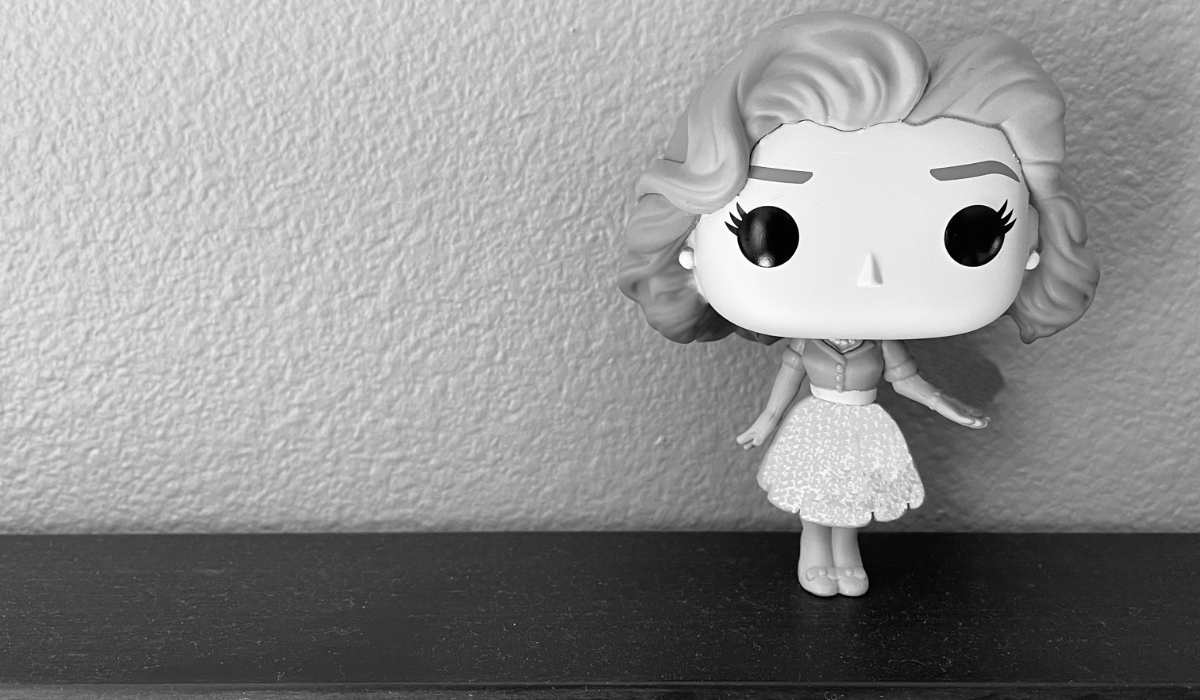
Stress Management
Managing employee stress has been, and will continue to be, top of mind for employers, says Johnston. Stress-related wellness programs generally teach employees tactics for reducing, or at the very least, managing, stress. They can look like informal weekly drop-in classes for activities dedicated to motivation and mindfulness, such as yoga or Tai-Chi, or formal training programs that target workplace stress.
“I think there's [also] an appetite for things that are fun and a little lighter,” says Johnston, who has helped her clients organize virtual cooking classes. “People are really enjoying those sessions.”
The Right to Disconnect
During the pandemic, many remote and hybrid employees working from home had trouble unplugging from their jobs at the end of the workday. New legislation, however, could encourage disconnecting.
This past June, Ontario introduced right-to-disconnect legislation, whereby employers with 25 or more employees must have and provide their workers with a written policy for disconnecting from work at the end of the day.[6] By Canada’s Employment Standards Act definition, disconnecting from work means freeing yourself from engaging with after-hours emails, messages, and video and phone calls.
“It’s one way that work-life balance is being legislated,” says Johnston.
Experts say that disconnecting from work can boost creativity.[7] Companies that encourage their staff to unplug after working hours experience greater employee retention, build better working communities, and prevent employee burnout.[8]
Gamifying Wellness
Gamified wellness programs are grounded in competition, incentives, and achievement awards. In short, they use games to promote wellness.
“If there's any way for people to get involved in competitions […] employees are loving that,” says Johnston.
Gamified wellness programs don’t have to be expensive, she adds. In fact, implementing one can be simple and cheap. A gamified wellness program can consist of daily mindfulness challenges, whereby employees complete an activity like meditating or attending an in-office yoga class to compete for points. Some apps, where employees complete tasks to win badges and leaderboard space, do some of the work for employers.
“People report appreciating the goals that are ahead of them in [these] programs,” says Johnston. “And they also appreciate the camaraderie that it creates with others.”
Expert Contribution:

Michelle Johnston, Workplace Wellness Specialist
Michelle Johnston is the founder of WorkingWell, a company dedicated to elevating and transforming the employee-employer relationship through the delivery of workplace wellness services. With over two decades of experience, Michelle works successfully with organizations across Canada helping them create a culture of trust, respect, and wellbeing.
Sources:
[1] https://www.newswire.ca/news-releases/majority-of-working-canadians-say-personalized-wellness-programs-would-improve-wellbeing-843928130.html
[2] https://lifeworks.com/en/resource/mental-health-index™-report-april-2022
[3] https://www.osfhealthcare.org/blog/employee-wellness-programs-create-healthy-happy-employees/
[4] https://www.entrepreneur.com/living/do-wellness-programs-make-employees-more-productive-the/309685
[5] https://kamalayaconnect.com/benefits-of-wellness-programs/
[6] https://www.ontario.ca/document/your-guide-employment-standards-act-0/written-policy-disconnecting-from-work
[7] https://www.sciencedaily.com/releases/2012/12/121212204826.htm
[8] https://www.forbes.com/sites/forbeshumanresourcescouncil/2020/03/16/eight-benefits-of-encouraging-employees-to-disconnect-on-time/?sh=3cd4d59248c6

- Details
- Written by: Henna Razvi
Access, Technology, & Cost
During the pandemic, many Canadians were accessing healthcare online. Whether it's to look up symptoms, call a government health line or do an online consultation, the Covid-19 pandemic changed how Canadians accessed healthcare and magnified the flaws in healthcare systems worldwide. The main issues surrounding telehealth are accessibility, underutilization of technology, and healthcare funding.
Rural Healthcare Access
Whether it is due to safety concerns, lack of access, ease of use, or personal preference, telehealth is gaining popularity with Canadians. According to Dr. William Cherniak, founder, and CEO of Rocket Doctor, "Pre-pandemic, telehealth was less than 1% of all doctor visits. By the summer of 2020, roughly 70% of all medical visits in some communities were being done virtually." 33% of patient-reported visits between January 2021 and March 2022 were virtual, and 21% of healthcare visits were videoconferences. Between June 2021 and March 2022, 47% of patients who were given the option chose to videoconference over an in-person consult. Other forms of telehealth options include phone consultations and secure email or messaging. According to one study conducted in Nunavut, 50% of patient care visits would not have been used by a patient or a professional, or both, if telehealth had not been an option.[1] The cost and labor of traveling great distances to access healthcare are too great for too many people, which means that specific populations will be at higher risk of health issues. Telehealth can significantly reduce the disparity created by the uneven distribution of the traditional healthcare system.

Technological Advancement
The need for a more accessible healthcare system has pushed technological advances in medicine that may not have come about without the stressors of the Covid-19 Pandemic. Dr. Cherniak commented, “Alongside this boom of access has been enormous advances in digital health, including smart patient intake forms, natural language processing, data science / predictive analytics…”. A pilot study in Saskatchewan showed that the presence of robotic technology significantly reduced the need for transporting respiratory patients out of their homes, directly resulting in lower overall transportation costs for the province.[2] A similar project showed that robotic technology reduced the need for medical transportation by 60% in Labrador.[3] Telehealth accessibility also forces governments to improve internet infrastructures to maintain secure data and consistent access at specific speeds. Tele-psychiatry is also on the rise as more and more people are being affected by mental health issues emerging in the wake of the pandemic.
Challenges
Health practitioners are in the later stage of their careers, so incorporating telehealth training into their current ecosystem is challenging. Not every facility is equipped for access to telehealth technologies or databases. Patients who do not speak English also struggle to use the technology. Language barrier is the biggest factor for telemedicine cancellations according one study in adult cardiology. In the future, telehealth training will be a part of practitioners' training. Telehealth equipment will likely be set up in the emergency rooms, easy to access, and logged on immediately for stat calls.[4] Telehealth also makes it easier for health professionals to share information about medical cases internationally. Family members who are scattered over great distances can now participate in a group telemedicine call to support.
Cost and Funding
Compared to the rest of Canada, healthcare costs are twice as much in northern Canada, with large indigenous populations.[5] An unsustainable 40% of Nunavut’s annual health budget is spent on health-related travel and accommodation.[6] Telehealth makes it possible for patients to receive care without traveling long distances. An in-person consultation can cost up to CAD 1048 in Nova Scotia, while telehealth ranges from $17 to $70.[7] Care Management Solutions is estimated at US$11.5 Billion in 2020 and projected to reach 25.5 Billion in 2027. Telehealth is emerging as one of the fastest-growing industries in the world.[8] "Today, the key question to the future of digital health/telehealth is ensuring that our governments continue to adequately fund doctors to provide this service through our public healthcare.”, concluded Dr. Cherniak.
Physician and patient interest in telehealth services will ensure that it remains a permanent part of the Canadian healthcare system.[9] Canada Health Infoway's 2021 Digital Health Survey found that 90% of respondents with at least one virtual healthcare interaction were satisfied with the care they received. 69% of Canadians are interested in healthcare by telephone, 56% prefer video, and 57% secure messaging.[10]Telehealth is pushing the boundaries to bring accessible, immediate, and effective healthcare to people worldwide. The goal is to reach and save millions of lives.
Expert Contribution:

Photo Courtesy/OMA
Dr. William Cherniak, MD MPH CCFP(EM) DABFM
Founder and CEO - Rocket Doctor Canada / Rocket Doctor USA
Founder and CEO - Bridge to Health Medical and Dental Canada / Bridge to Health Medical and Dental USA
Associate Faculty – Johns Hopkins Bloomberg School of Public Health, Dpt. International Health
Asst. Prof. – University of Toronto, Division of Emergency Medicine
Adj.Prof. – Northwestern University, School of Professional Studies, MSc in Global Health
Sources:
[1] Nunavut telehealth project impact evaluation report. Montreal (QC): Infotelmed Communications Inc; 2003September26
[2] https://www.ncbi.nlm.nih.gov/pmc/articles/PMC6508052/#CIT0006
[3] https://www.ncbi.nlm.nih.gov/pmc/articles/PMC6508052/#CIT0007
[4] https://www.ncbi.nlm.nih.gov/pmc/articles/PMC6508052/#CIT0006
[5] https://www.cihi.ca/sites/default/files/document/nhex-trends-narrative-report-2019-en-web.pdf
[6] http://www.nunatsiaqonline.ca/stories/article/98789_health_department_must
[7] https://pubmed.ncbi.nlm.nih.gov/15829051/
[8] https://finance.yahoo.com/news/care-management-solutions-global-market-132300618.html?guccounter=1&guce_referrer=aHR0cHM6Ly93d3cuZ29vZ2xlLmNvbS8&guce_referrer_sig=AQAAAI_CHPyqGw8SP_7CnQ9hvid6SH0zne6d9O2nNnGd1y80dz609r4ZzDGapK77kf61RXNMNF0KJ8ti2HpmzWjJQHAbbXS3yxuaKH924ZjvlTvpvGsB03vWBY0qzYN0kqBIqqb43Q9pMS0AnsGQfG9cGNeKrIDTYlBfZFcAdwnXm_Hd
[9] https://www.cihi.ca/sites/default/files/document/virtual-care-in-canada-strengthening-data-information-report-en.pdf
[10] https://www.cihi.ca/sites/default/files/document/virtual-care-in-canada-strengthening-data-information-report-en.pdf

- Details
- Written by: Reveal Magazines
Our bodies are amazing, complex, and beautiful pieces of “bio-machinery.” Inside our body is a chemical factory and a delicate network of systems that work together to keep us healthy and living the life we want to live. Achieving optimal physical health varies by individual and involves listening to what your body and mind is telling you. The state of your physical being, both inside and out, is a key driver behind your confidence and mental wellness.
Appearance
No matter your age, appearance plays an important role in how you feel about yourself. Both men and women often forget that taking care of their appearance has a huge impact on confidence levels and social well-being. If you're feeling unhappy with some aspect of your appearance, it may be worth it to invest in treatments designed to address your areas of concern.
Shannon Lapointe, Founder of Bare Aesthetics & Painless Laser Hair Removal and Revitalize Your Health, urges individuals to bring their concerns forward to a professional. “Facials, exfoliation, teeth whitening, laser hair removal and even botox and filler treatments can all help a person feel vibrant and renewed. By openly discussing what may be bothersome to you. A professional can recommend the right treatment that meets your comfort level,” says Shannon.
Sexual Wellness
Another critical component of physical wellness lies with your sexual health. Feeling sensual and engaging in intimate activity can be a powerful tool for relieving stress. This promotes the release of hormones that can have beneficial effects on mood and general well-being.
Whether you’re looking for deeper or more frequent connections or improving performance, there are some simple ways you can take better care of your body.
Nutrition is essential in maintaining physical strength, but even small changes such as avoiding foods that cause heartburn or food allergies can make a difference when it comes to experiencing heightened arousal during intimate moments. Likewise, reducing caffeine intake and having adequate water intake will help promote excellent circulation while reducing blood pressure and keeping blood vessels dilated.
“From natural performance changes to more serious issues caused by disease or injury, there are a series of treatments available that do not require surgery or pharmaceutical remedies. Specialized, pain-free treatment plans can be applied that include pelvic muscle strengthening and improved blood flow.” Says Shannon.
Medical Health
It's important to be aware of your risk factors for certain diseases so you can take preventative measures, but also to acknowledge changes in your body that have created discomfort in your day to day living. Do not allow these ailments to go unaddressed and untreated. Common medical issues such as diabetes, high blood pressure, high cholesterol, depression, or anxiety should all be monitored by a medical provider. There are also less commonly discussed medical issues that should be address, as Shannon states “Believe it or not, incontinence is also a highly common issue among both men and women. It can often go untreated, limiting the quality of day-to-day life and the resolution is likely within reach.”
Sometimes it feels easier to shy away from discussing or researching symptoms out of embarrassment or discomfort but seeking treatment to correct the burdens of your body almost immediately improves your quality of life.
Overall, we must acknowledge our bodies as the sacred vessel that they are, providing it the nurturing attention it requires. It can be difficult to identify what is plaguing your physical health. But, if you listen and then address the problem, you will feel better and be able to maintain a level of optimal health. If you have any questions about your health or how to improve it, please speak with your doctor or healthcare professional.
Expert Contributor:

Shannon Lapointe
Founder, Revitalize Your Health and Bare Aesthetics
Working in healthcare for over 20 years, Shannon is a Certified Continence Advisor (training), Registered Respiratory Therapist (RRT), and Anesthesia Assistant (CCAA).

- Details
- Written by: Reveal Magazines
The holiday season is approaching, which means one thing for many: stress. Even people who love the holidays can get overwhelmed during this busy time of year, and if you’re not careful, it can lead to health problems like insomnia, stomach ulcers and even heart attacks. The key to avoiding these seasonal stresses? Preparation, of course. Make sure that you have a plan in place so that you can enjoy your holiday season without having to worry about everything that comes with it. Here are some of the key areas that most people find stressful surrounding the holidays and tips to consider that will help you break down those feelings of anxiousness.
Gift Giving
The most common stressors leading up to the holidays are related to gift giving. The number of gifts you feel you need to buy, the cost, and making sure everyone's gift is unique can be overwhelming. While giving gifts often brings us as much joy as receiving them, the expectation that a physical purchase is the only way to show our expression of love and appreciation for another is a false one. Not to mention, giving out of obligation or expectation can lead to negative outcomes like financial and relational burdens and stress.
The season of gift giving, however, should be a mentally healthy experience for everyone when executed in a meaningful way. If done thoughtfully, it can even add to the quality of your holiday season instead of making it more draining.
Tip: Begin by making a list of everyone you would like to get a gift for. Set aside some time to evaluate a variety of gift giving options and add some creative research to the process. Think of each person individually and consider more unique offerings, such as hand-written letters, personalized tokens, or experiential outings that you can do together. By exploring a variety of new options for gifting without overextending your budget, you can focus on sharing what truly matters most.
Social Gatherings
Whether hosting or attending, seasonal gatherings with friends or family can be quite intimidating. During this time of year, it can be difficult to feel like yourself. Expectations from friends and family can lead to social anxieties and pressures, which in turn can trigger a whole host of mental health issues such as anxiety, depression, mood instability or hopelessness. It is important that you take care of yourself during this time of year and give yourself permission to experience your own emotions.
Tip: The best way to manage these stresses is to plan ahead and avoid overcommitting. Although it may seem like preparation does not always go according to plan, it will reduce anxiousness and give you clarity to set healthy boundaries. For example, before heading into a party, consider what would make the evening enjoyable for you and set boundaries on how long you'll stay or topics that may be discussed at length with certain individuals. Knowing what is most important to you will allow you to limit any potential negative effects before they happen.
Weight Gain
The holidays are a time of year where many people overeat in a hectic atmosphere, indulging in festive, rich foods and cocktails at every turn. The ongoing social gatherings that take place between Thanksgiving and New Year’s combined with the pressures related to festive eating and drinking almost always lead to weight gain and holiday blues. As a result, feelings of shame or inadequacy can often surface, and we all deserve better than that. For those who have made conscious decisions to be healthier throughout the year, whether it be with diet and exercise or consuming less or no alcohol, this time of year can be exceptionally difficult.
Tip: Embrace the mindful eating and drinking practices you have set for yourself, whether its listening to your body's hunger signals or following an intuitive eating plan. When hosting parties at home, try to offer healthy alternatives such as fruit kebabs or appetizer platters with veggies instead of chips and dip. When it comes to alcohol, save those calories for festivities with friends or family on the weekend and focus on a more structured approach to nutritious meals and portion sizes throughout the usual work week.

- Details
- Written by: Jade Prévost-Manuel
Exploring the wellness traditions that, across cultures, have stood the test of time.
In the heart of Dish With One Spoon Treaty Territory, commonly known as Niagara, Kinnikinnick Trading Company owner Edd Scorpio sells a customer a small jar of Minigan salve, an ointment made from bear fat and pine resins that he calls “a bandaid in a bottle.”
Since time immemorial, Indigenous people have concocted and used Minigan salve to treat scrapes, burns, aches, and pains, says Scorpio, who is Lakota, Mi’kmaq, Anishinaabe, and Meskwaki. It is a long-standing healing tradition that, like others across various cultures and communities, has stood the test of time.
Traditional medicine, despite having often been portrayed as the antagonist of modern medicine, is an important and often underestimated part of health care around the world. Recent history has witnessed an increased demand for integrated systems of healthcare that draw on the wisdom passed down from ancestral generations.
Expert Contributors:

Edd Scorpio, Owner, Kinnikinnick Trading Company
Scorpio descends from Indigenous people on two continents and some of the first French settlers on Turtle Island.
“I had a woman once come in with what was basically full body psoriasis,” recalls Scorpio. “She used the Minigan on it, and obviously this was not something that her doctors were familiar with, but it worked, and they told her to keep using it. So, you know, some doctors are amenable to things that are alternative to what their knowledge is or what they've heard of.”
The demand for provincial care services that focus on healing the mind, body, and spirit is prevalent here in Ontario. This past spring, a new Indigenous-focused primary care clinic opened in Cambridge, Ont., offering both modern medical care and traditional care to its patients. Earlier this year, the Ford government reversed a move to dissolve Ontario’s regulatory body for traditional Chinese medicine.
At Kinnikinnick, Scorpio carries on the cultural torch of his ancestors by creating products that draw on the power of the four sacred medicines in Indigenous culture: tobacco, sage, cedar, and sweetgrass. One of his most popular health and wellness products is his smokeless smudge spray, which combines the four sacred medicines into a liquid that provides his customers with all the benefits of a smudging ceremony without the smoke.
“A lot of times, [our customers] use it as a general purpose medicinal,” says Scorpio. “It keeps the air clean in their home or place of work and it gives them a lightness of spirit.”
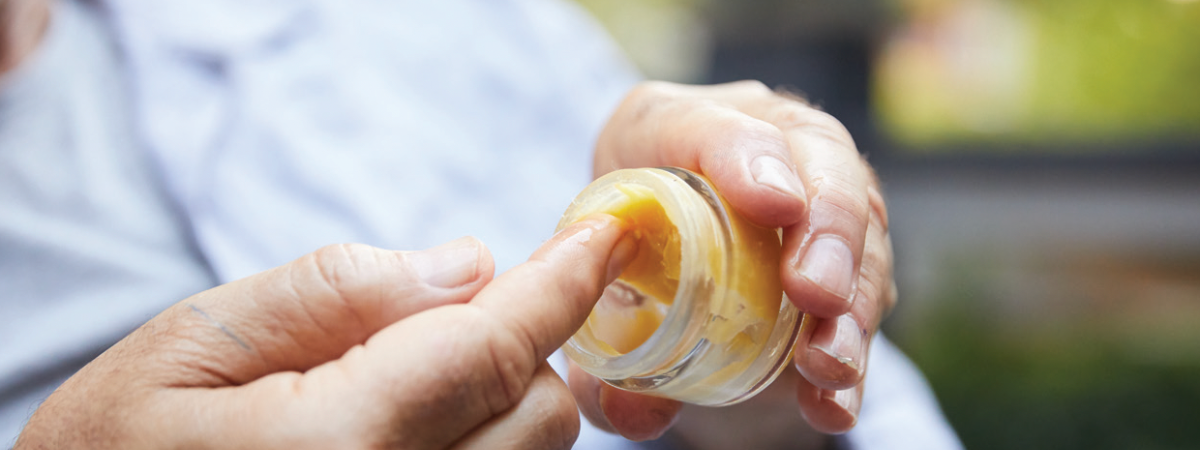
Smudging is a practice whereby one or more of the four sacred medicines are burned to cleanse the mind, spirit, and environment of the burner. For customers who want a more traditional smudging experience, Scorpio sells loose leaf White Buffalo Sage. The leaves of this perennial are not only useful for clearing the air, he says, but can be consumed as a tea to promote circulation and general health and even used as a calming agent in baths.
Scorpio’s line of medicinal products derived from the traditions of Indigenous cultures across Turtle Island—the continent we know as North America—creates opportunities for his customers to heal more than just their bodies.
“I think it's all part and parcel,” says Scorpio. “When you're healing your body, a lot of that has to do with your mindset. In the healing process, you have to have a good mind as we say to help your body heal.”
At Circle of Health, a wellness centre in Niagara Falls, natural health practitioner Joanne Garrison also offers her customers opportunities for achieving holistic wellness. Since 2001, Garrison has provided residents of and visitors to the Niagara region with a range of wellness solutions that help heal the mind, body, and soul. These include reflexology, Indian head massage—or champissage—and meridian stress testing, the latter of which is one of Circle of Health’s most sought-after services, says Garrison.
Expert Contributors:

Joanne Garrison, Owner, Circle of Health
Garrison of Niagara Falls provides quality, alternative health service for area residents.
“Stress is the number one reason why people come,” she says. “Some people’s stress goes to their gut, for some people it goes to migraines. Stress affects every system of the body, and sometimes it’s not a disease or pathology that can be fixed by prescription medication.”
Meridian stress testing is a modern technology that is grounded in the centuries-old wisdom of Chinese medicine. It uses a device similar to an electrocardiogram to measure the body’s meridians, or pathways through which practitioners of Chinese medicine say a person’s life energy flows. Garrison says that by determining where stress blockages occur throughout the body, she can help the patient restore their energy flow through homeopathy and nutrition.
“Wellness, it encompasses not only the physical, but the mental and emotional as well,” says Garrison. “It's looking at the person as a whole, as opposed to individual parts of them.”
Sources:
i: https://apps.who.int/iris/bitstream/handle/10665/92455/9789241506090_eng.pdf
ii: https://www.cbc.ca/news/canada/kitchener-waterloo/indigenous-primary-care-clinic-is-open-in-cambridge-and-accepting-patients-1.6452553
iii: https://www.cbc.ca/news/canada/toronto/ford-government-deregulates-traditional-chinese-medicine-1.6375505

- Details
- Written by: Hailey Coltson
As another Niagara summer season ramps up and the weather gets warmer, it is so important to continue to take great care of your skin – even when there aren’t any dry spots to worry about anymore. There are some important skincare products to keep up with during the summer so that you can protect your skin, and keep it looking and feeling its best!
What skincare products should you prioritize in the summer?
Sunscreen
Experts have known for years that wearing sunscreen daily, year-round is the best way to ensure slower visible aging of the skin. Despite the presence of sunlight throughout the entire year, our Canadian Summer seasons bring in more light than ever, making sunscreen most essential in this time of year. Ultra-violet (UV) Rays are the largest concern in sun exposure, as they have been proven to cause an overproduction of melanin, a natural skin pigment, in cells that receive more sun exposure1. This results in dark spots, sometimes called age spots, as well as early appearance of fine lines and wrinkles. In more frequent, prolonged exposure to UV rays over many years, it is also common to become more susceptible to skin cancer2.
It’s important to remember though, that not all sunscreens are exactly alike. Local skincare specialist, owner of Aegis MD in St. Catharine’s and Canada’s only Integrative Aesthetic Medical Practitioner, Dr. Christina Plaskos recommends different types of sunscreens according to skin type.
Mineral sunscreens employ ingredients like Zinc Oxide that work to physically block UV rays from penetrating the skin, deflecting them entirely, while physical sunscreens absorb the UV rays3. She believes that “…for reactive skin that’s sensitive, mineral sunscreens are better.” Whereas “someone with a darker skin type can actually do better with a chemical sunscreen because they often help prevent the pigmentation better.”
However, there is no reason to complicate your choice of sunscreen, as it is most important to wear it properly. Dr. Plaskos says that “The best sunscreen is the one you’ll wear.” As long as the SPF (Sun- Protection Factor) is above 30 in the winter and 50 in the summer and reapplied every two hours, she recommends simply wearing whichever sunscreen works for you!
Vitamin C
On the opposite end of the summer-skin-protection spectrum, Vitamin C is believed to be a very beneficial ingredient to incorporate into a summer skin routine. While sunscreen creates protection from UV rays, Dr. Plasko says that Vitamin C “…provides an antioxidant, so when you do have some UV damage penetrate through, you can fend off resulting damage.” These antioxidant properties of Vitamin C allow it to topically reduce harmful effects from free radicals in UV rays, which are unstable molecules that commonly reduce collagen production and cause damage to the skin’s cells4.
The combination of sunscreen and Vitamin C create what Dr. Plaskos calls “the perfect pair.” When properly used together throughout the summer, you prevent damage from UV rays throughout the day while fending off any leftover damage through the night! Most importantly, Dr. Plaskos encourages people to see a specialist to see what can work best for them and any potential skin conditions.
Expert Contribution:

Dr. Christina Plaskos, Founder, AEGIS MD
Dr. Plaskos is an experienced and trusted practitioner determined to ignite change within her community and the wellness industry.
Sources:
Mayo Foundation for Medical Education and Research. (2022, February 11). Age spots (liver spots). Mayo Clinic. Retrieved June 16, 2022, from https://www.mayoclinic.org/diseases-conditions/age-spots/symptoms-causes/syc-20355859
S. National Library of Medicine. (n.d.). Sun's effect on skin - health video: Medlineplus medical encyclopedia. MedlinePlus. Retrieved June 16, 2022, from https://medlineplus.gov/ency/anatomyvideos/000125.htm
Franciscan Health. (2019, June 24). Is mineral sunblock better than chemical sunblock? Franciscan Health. Retrieved June 16, 2022, from https://www.franciscanhealth.org/community/blog/is-mineral-sunblock-better-than-chemical-sunblock
Vitamin C and skin health. Linus Pauling Institute. (2022, January 3). Retrieved June 16, 2022, from https://lpi.oregonstate.edu/mic/health-disease/skin-health/vitamin-C

- Details
- Written by: Jade Prévost-Manuel
Our brains do a lot for us. They help us focus, solve problems, remember important information and make tough choices. Yet when mental fog rolls in, being productive can feel like an impossible task.
Canadians know they can train their bodies through healthy eating and regular exercise. But can we train our pandemic-affected brains, too?
Naturopathic doctor Marc Conteduca, who runs a brain training program at Niagara Health and Rehab Centre (NHRC), says that with hard work, it’s possible.[i]
“For many years, we didn't think that it was possible to improve brain function or regrow nerve cells or have this thing called neuroplasticity,” he says. “But now, we’re seeing that we can do those things.”
It’s welcome news for those dealing with what researchers are calling pandemic brain — brain inflammation caused by the chronic stress of living through a pandemic. Pandemic brain manifests as fatigue, brain fog and even mood changes in non-COVID-infected people.[ii]
Last year, more than 50 per cent of Canadians reported that COVID-19 had increased their stress or anxiety levels.[iii]Chronic stress can affect the parts of the brain that manage concentration, decision-making and even memory. It can make learning more difficult, and the people who experience it more anxious.[iv]
Want to get your pre-pandemic brain back? Here are three things you can do to boost brain function.
Get Some Sleep (Without Your Phone)
Sleep helps keep your brain sharp — but most of us don’t get enough of it. According to the Public Health Agency of Canada, 1 in 2 adults have trouble going to sleep or staying asleep.[v]
“You need to prioritize sleep in the same way that you prioritize your exercise and nutrition plan,” says Conteduca.
Not getting enough sleep can affect your ability to learn, create new memories and concentrate. A lack of sleep doesn’t just affect your brain — poor sleep, or no sleep, can also increase your risk of cardiovascular disease, obesity and depression. [vi]
While every person has different requirements when it comes to sleep, experts suggest aiming for seven to nine hours per night. If you have trouble sleeping, try exercising regularly, quitting caffeine in the afternoon, and sticking to a routine bedtime.
Keeping your cell phone out of the bedroom can also improve sleep. In a 2020 study, researchers found that keeping cell phones near the pillow and scrolling for at least 30 minutes before bed with the lights off was associated with poor sleep quality.[vii] Other studies have shown phone use could affect working memory.[viii] Consider banning blue-light emitting screens an hour before bed and charging your phone outside the bedroom.
Get Outside and Exercise
Exercising and spending time outside doesn’t just feel good — it can also help your brain function better. Research suggests that even short trips outside can change brain structure to improve concentration, mood and working memory.[ix]
While mindless exercise — day-to-day physical activity like walking up stairs — can build better health in the long run, nothing beats mindful physical exercise when it comes to boosting cognition.
“That neuromuscular, or brain to muscle connection, is very important,” says Conteduca. “What we’re finding is that intentional and purposeful exercise matters.”
Try setting aside a time to walk or run outdoors, join a yoga class, or engage in exercise you truly enjoy. Make outdoor morning or lunchtime walks a part of your daily routine. Cognitive learning also depends on repetition, so commit to lifestyle changes for at least one month if you want to see improvement.
Eat Healthy Fats
Food is fuel for the brain, which is why scientists say failing to fuel up can negatively affect brain function.
Understanding how food affects the brain is a different beast because it’s a relationship that scientists didn’t begin exploring until recently, says nutritional scientist and University of Toronto Associate Professor Richard Bazinet, who researches the link between the two.[x]
“Your brain only makes up about two per cent of your body weight, depending on how much you weigh, but it's using 10 to 20 per cent of your brain energy,” says Bazinet. “So, you’ve got to feed that thing.”
Bazinet says the brain is about 50 per cent fat, and that two fats — docosahexaenoic acid (DHA) and arachidonic acid (ARA) — are especially important for cognition. The brain can’t make these fats on its own, so eating foods high in DHA and ARA can provide it with these essential fatty acids. Sources of these fats include seafood, fish oil, dairy and eggs.
As for the rest of your diet, Bazinet says that “largely, the foods that people think are good for their heart seem to be good for their brain.”
Incorporate whole, or non-processed, foods into your diet and give plant-based foods a try. Research also suggests that adding berries, such as blueberries and raspberries, to your diet can improve memory and boost brain function.[xi]
[i] https://nhrcentre.com/team/marc-conteduca/
[ii] https://www.news-medical.net/news/20210929/Research-finds-increases-in-pandemic-brain-after-COVID-19-lockdowns.aspx#:~:text=According%20to%20new%20research%20from,known%20as%20%22pandemic%20brain.%22
[iii] https://www.ipsos.com/en-ca/covid-continues-take-heavy-toll-canadians-mental-health
[iv] https://www.uottawa.ca/gazette/en/news/understanding-and-countering-effects-stress-your-brain-and-your-mental-health#:~:text=Under%20prolonged%20stress%2C%20this%20region,problem%20solving%2C%20concentration%20and%20planning.
[v] https://www.canada.ca/en/public-health/services/publications/healthy-living/canadian-adults-getting-enough-sleep-infographic.html
[vi] https://www.ninds.nih.gov/Disorders/Patient-Caregiver-Education/Understanding-Sleep#:~:text=Sleep%20is%20important%20to%20a,up%20while%20you%20are%20awake.
[vii] https://www.ncbi.nlm.nih.gov/pmc/articles/PMC7320888/
[viii] https://www.ncbi.nlm.nih.gov/pmc/articles/PMC7425970/
[ix] https://www.sciencedaily.com/releases/2021/07/210715103025.htm
[x] https://nutrisci.med.utoronto.ca/faculty/richard-bazinet
[xi] https://njaes.rutgers.edu/sshw/message/message.php?p=Health&m=350

- Details
- Written by: Jade Prévost-Manuel
Health may be wealth — but a Canadian health system that many consider underfunded and underperforming can make it hard to feel rich.
Staffing shortages and long wait times were problems long before the COVID-19 pandemic made system shortfalls more visible, experts say.
According to the Ontario Medical Association (OMA), nearly 20 million health care services were postponed or cancelled during the pandemic. That backlog includes surgeries and treatments as well as testing and doctors’ visits.[i]
“It will take months, if not years, to get through all of the backlog,” says OMA President Dr. Adam Kassam.
Canadians are optimistically beginning to consider life after the pandemic, and the future of the health system is top of mind. Here are five ways Canadian health care could be revitalized.
Boost Telehealth
Telehealth is a method of remotely delivering health care — one that Health Economist Erin Strumpf says saves physician resources while getting people the care they need.
Using technology in the form of online doctor visits and apps that monitor patient health, for example, can make care more accessible for remote communities and people with limited mobility while easing strain on the system.
“[Telehealth] requires less time, no travel, and no waiting in a room,” says Strumpf. “No, it can’t be used for everything, but why not use it for what it’s good for?”
Increase the Number of Acute Care Beds
According to data from the Organisation for Economic Co-operation and Development (OECD), Canada ranks among the lowest of OECD countries for acute care beds per capita.[ii]
Kassam says that number is far too low, adding that increasing the number of these beds in Canadian hospitals is just one piece of the puzzle. Hospitals also need to staff them.[iii]
“It's not just about beds, it’s also about having the human resources to provide the services to those individuals,” says Kassam.
Expand Mental Health Services
Pre-pandemic, one in five people in Canada were experiencing a mental health problem or illness in any given year, according to the Mental Health Commission of Canada.[iv] That number is expected to increase post-pandemic.[v]
Making mental health care more financially and physically accessible for Canadians of all ages and professions, including health care professionals, could ease strain on the system by reducing hospitalizations and increasing quality of care.
Strengthen Pandemic Preparedness
“We had a situation during the pandemic where we put lots of social restrictions in place [to] protect a health care system that is more fragile than other […] countries,” says Strumpf.
In response to the pandemic, the federal government established the Centre for Research on Pandemic Preparedness to help Canada prepare for, prevent, respond to and recover from health emergencies.[vi] Canada can better prepare for pandemics by addressing staffing shortages in public health, hospitals, and long-term care and funding domestic production of drugs and medical equipment.
Reduce Wait Times and Backlog
Ontario is Canada’s most populous province but the second-lowest spender on health care per capita, according to the Canadian Institute for Health Information.[vii] But simply throwing more money at the problem isn’t enough, say Strumpf and Kassam.
By investing to leverage telemedicine, revamp referral systems to cut down on wait times, and offload hospitals by allowing certain procedures and surgeries to be performed outside of hospitals, governments could make a huge difference in reducing wait times and addressing backlog.
“It's simply not good enough anymore to say doctors should work longer hours after 20 months of having been worked to the bone to get through the pandemic,” says Kassam.
Contributors:

Dr. Adam Kassam, Physician and President, OMA
Dr. Adam Kassam is a board-certified physician in physical medicine and rehabilitation. He’s also a clinical associate at Sinai Health and Runnymede Healthcare Centre in Toronto.

Erin Strumpf, Associate Professor at McGill University
Erin Strumpf teaches in the Department of Economics and the Department of Epidemiology, Biostatistics and Occupational Health at McGill University. Her research looks at outcomes of health care spending.
Sources
[i] https://www.oma.org/uploadedfiles/oma/media/public/prescription-for-ontario-doctors-5-point-plan-for-better-health-care.pdf
[ii] https://www.oecd.org/coronavirus/en/data-insights/hospital-beds-acute-care
[iii] https://www.cbc.ca/news/canada/toronto/ontario-icus-adding-beds-but-will-it-help-1.5985771
[iv] https://www.mentalhealthcommission.ca/wp-content/uploads/drupal/2016-06/Investing_in_Mental_Health_FINAL_Version_ENG.pdf
[v] https://www2.deloitte.com/content/dam/Deloitte/ca/Documents/about-deloitte/ca-covid19-human-impact-pov-en-aoda.pdf
[vi] https://www.canada.ca/en/institutes-health-research/news/2022/01/centre-for-research-on-pandemic-preparedness-and-health-emergencies.html
[vii] https://rnao.ca/news/media-releases/cihi-report-indicates-ontario-spends-less-than-necessary-to-benefit-its-people

- Details
- Written by: Pulse Point Unit
May signals the start of lighter, breezier wardrobes—and this year, linen is taking centre stage across runways and retail racks alike. Known for its breathable texture and natural elegance, linen is the must-have fabric of the season, offering both comfort and style as temperatures rise.
From wide-leg trousers to oversized button-downs and minimalist midi dresses, linen pieces are making a strong comeback in neutral and pastel palettes. Brands like Kotn and Frank and Oak, both Canadian fashion leaders, are championing ethically-sourced linen collections that align with a growing demand for sustainable fashion. Kotn, for example, uses traceable natural fibres in its linen styles, marrying minimalism with social responsibility.
What makes linen so appealing isn’t just its aesthetic. It’s also hypoallergenic, highly absorbent, and one of the most eco-friendly fabrics available. It uses far less water to produce compared to cotton and is fully biodegradable. Fashion stylists recommend pairing linen with similar breathable fabrics like organic cotton or bamboo for a refined yet effortless look.
To extend the life of your linen garments, be mindful of how you wash and store them. Use a gentle detergent, cold water, and air dry when possible to reduce wear. The fabric’s signature wrinkled charm adds to its relaxed appeal—no need to iron unless you’re dressing it up for a more structured occasion.
Whether you’re heading to the office, enjoying weekend brunch on the patio, or packing for a spring getaway, linen is this month’s hero fabric. It offers a timeless, natural aesthetic that fits beautifully with the rejuvenating spirit of May.
Sources: Elle Canada (https://www.ellecanada.com); Kotn (https://kotn.com); Frank and Oak (https://www.frankandoak.com)

- Details
- Written by: Key Trends Staff
Lolita fashion, originating in Japan during the late 20th century, is a subculture known for its elaborate and Victorian-inspired aesthetics. It combines modest, doll-like clothing with a focus on femininity, featuring voluminous skirts, lace, and intricate details. The style has several subcategories, including Gothic Lolita, Sweet Lolita, and Classic Lolita, each with its own distinct characteristics.
Gothic Lolita incorporates darker colors like black and deep red, often with motifs such as crosses and roses. Sweet Lolita embraces pastel colors, with motifs of candy, animals, and other cute themes. Classic Lolita, on the other hand, leans towards a more mature, historical look with neutral tones and elegant patterns.
The global appeal of Lolita fashion has grown significantly over the years, particularly in countries like the United States, China, and Germany. Geographically, the Lolita Clothing market is divided into South America (Brazil, Argentina, and the Rest of South America), Asia Pacific (China, Japan, India, South Korea, Taiwan, Australia, and the Rest of Asia-Pacific), Europe (Germany, France, Italy, the United Kingdom, Netherlands, and the Rest of Europe), the Middle East and Africa (MEA), and North America (United States, Canada, Mexico).

Photo credit: https://www.instagram.com/p/C-xjBmJg60j/?img_index=3
In 2023, it was estimated that the global market for Lolita fashion was worth around $250 million, with a projected annual growth rate of 7.5% through 2028. This growth is driven by the increasing popularity of Japanese culture worldwide and the rise of online communities where enthusiasts share their passion for the fashion.
Who are the major manufacturers of Lolita Fashion worldwide?
- Baby, The Stars Shine Bright
- Alice And The Pirates
- Angelic Pretty
- Jane Marple
- Metamorphose Temps De Fille
- Mary Magdalene
- Victorian Maiden
- Atelier-Pierrot
- Atelier Boz
Overall, Lolita fashion remains a unique and evolving subculture that continues to captivate individuals globally with its charm and intricacy.
Source:
https://en.wikipedia.org/wiki/Lolita_fashion
https://www.advancemarketanalytics.com/reports/184495-global-lolita-clothing-market

- Details
- Written by: Reveal Magazines
In recent years, the fashion landscape has witnessed a significant shift, with streetwear emerging as a powerful force that transcends traditional boundaries and defines modern style. What was once considered a subculture has now evolved into a mainstream trend, influencing not only the way we dress but also reshaping the entire fashion industry. This article delves into the growing influence of streetwear, exploring its roots, popular brands, collaborations, and its undeniable impact on high fashion.
The Origins of Streetwear:
Streetwear finds its roots in the urban neighbourhoods of major cities, where diverse cultures, music, and art converge. Emerging in the 1980s and 1990s, streetwear was initially associated with skateboarding, hip-hop, and graffiti subcultures. Brands like Stussy, Supreme, and A Bathing Ape (BAPE) played pivotal roles in shaping the early streetwear aesthetic, characterized by bold graphics, casual silhouettes, and an anti-establishment attitude.
Evolution into Mainstream Culture:
What began as a niche subculture has rapidly evolved into a mainstream phenomenon. Streetwear's appeal lies in its ability to capture the essence of youth culture and rebellion, resonating with a broad audience. The rise of social media platforms has further accelerated its popularity, enabling streetwear enthusiasts to showcase their style, and fostering a global community.
Popular Streetwear Brands:
Several iconic brands have contributed to the rise of streetwear, each with its unique aesthetic and cultural significance. Supreme, known for its limited-edition drops and collaborations, has achieved cult status. Off-White, founded by Virgil Abloh, seamlessly blends high fashion with streetwear elements, influencing a new generation of designers. Other notable brands like Nike, Adidas, and Yeezy have successfully merged sports, street, and luxury fashion.
Collaborations as Catalysts:
Collaborations between streetwear brands and high-end fashion houses have become a driving force behind the genre's rise to prominence. The merging of streetwear aesthetics with luxury craftsmanship has blurred the lines between high and low fashion. Collaborations like Louis Vuitton x Supreme and Nike x Off-White have not only created buzz but also solidified streetwear's place in the upper echelons of the fashion industry.
Street Style's Impact on High Fashion:
Street style, characterized by its individualistic and eclectic nature, has infiltrated high fashion runways, challenging traditional norms. The influence of streetwear is evident in the use of casual silhouettes, sportswear-inspired designs, and the incorporation of street art into high-end collections. Fashion houses now recognize the power of street culture in shaping consumer preferences and are increasingly embracing its elements.
The influence of streetwear on modern style is undeniable, transcending its subcultural origins to become a driving force in the mainstream fashion industry. From the streets to the runways, the aesthetic and ethos of streetwear continue to redefine the way we perceive and engage with fashion. As collaborations between streetwear and high fashion persist, it is clear that this dynamic and ever-evolving genre will continue to shape the future of style, bridging the gap between individual expression and the broader fashion narrative.

- Details
- Written by: Reveal Magazines
In recent years, the fashion industry has witnessed a remarkable shift towards sustainability. With growing awareness about environmental and social issues, consumers are now demanding eco-friendly and ethical practices from the brands they support. This surge in interest has given rise to a plethora of innovative and exciting trends in sustainable fashion. Let's delve into some of the latest developments that are revolutionizing the way we approach style while caring for the planet and its people.
1. Circular Fashion and Clothing Rental
Circular fashion is a concept that prioritizes recycling and reusing materials, emphasizing the lifecycle of clothing beyond its initial use. Brands are increasingly adopting a "circular economy" approach, designing products with durability and recyclability in mind. Additionally, clothing rental services have gained popularity, allowing people to rent high-quality garments for special occasions instead of buying them outright. This movement aims to reduce waste, lower carbon footprints, and make fashion more accessible and affordable.
2. Eco-friendly Fabrics and Materials
The search for sustainable alternatives to conventional fabrics has led to the emergence of innovative eco-friendly materials. From organic cotton, hemp, and bamboo to recycled polyester and Tencel, designers are exploring a wide array of environmentally conscious options. These fabrics often require fewer resources to produce and biodegrade more rapidly than their conventional counterparts, minimizing the industry's impact on the planet.
3. Slow Fashion and Timeless Designs
Slow fashion encourages mindful consumption by emphasizing quality, durability, and timeless designs. The focus shifts from fast-paced trends that lead to excessive buying and discarding to investing in well-crafted, versatile pieces meant to stand the test of time. This trend promotes a more conscious and sustainable approach to fashion, encouraging consumers to cherish their garments for years rather than seasons.
4. Local and Ethical Production
The sustainable fashion movement is also shedding light on ethical production practices. Brands are increasingly transparent about their supply chains, ensuring fair wages, safe working conditions, and respect for artisans and workers' rights. By supporting local production and sourcing, brands can reduce their carbon footprint and foster a stronger connection between consumers and the people behind their clothing.
5. Upcycling and Creative Reuse
Upcycling is breathing new life into old and discarded garments and materials. Designers and artisans are showcasing their creativity by transforming pre-loved pieces into unique and stylish items. Upcycled fashion not only diverts textiles from landfills but also creates limited-edition pieces that cater to the growing demand for individuality and sustainability.
6. Vegan and Cruelty-Free Fashion
The popularity of veganism and the ethical treatment of animals have significantly influenced the fashion industry. Vegan fashion uses no animal-derived materials such as leather, fur, or silk, and cruelty-free alternatives are becoming more prevalent. This trend caters to those who wish to express their style without compromising their values and contributes to reducing the impact of animal agriculture on the environment.
7. Transparency and Consumer Education
Consumers are increasingly concerned about the origin of their garments and the practices employed by the brands they choose. To address this, transparency has become a critical aspect of sustainable fashion. Brands are providing detailed information about their materials, manufacturing processes, and sustainability efforts, empowering consumers to make informed choices that align with their values.
8. Tech Innovations in Sustainable Fashion
Advancements in technology have also played a significant role in shaping sustainable fashion trends. From 3D printing of garments, which reduces waste and speeds up the design process, to the use of blockchain technology to track supply chains and ensure transparency, tech innovations are revolutionizing the industry and propelling it towards a greener future.
In conclusion, the latest trends in sustainable fashion are proof that the industry is moving towards a more environmentally friendly and socially responsible direction. As consumers become increasingly conscious of their choices, brands are compelled to adapt and adopt sustainable practices to remain relevant and competitive. By embracing circular fashion, eco-friendly materials, slow fashion, ethical production, upcycling, vegan alternatives, transparency, and tech innovations, the fashion world is setting a positive example for other industries to follow. As consumers, we have the power to drive this transformation further by making thoughtful choices and supporting brands that prioritize sustainability and responsibility. Together, we can build a more sustainable and stylish future for the fashion industry and the planet.

- Details
- Written by: Reveal Magazines
There’s something to be said for a more personal and exclusive shopping experience. Local boutiques often take the time to source items that are more unique and cannot be easily found somewhere else. Shopping at a locally owned boutique gives you more diversity and individuality in your own wardrobe and offers a very satisfactory experience worthy of repeating (regularly)! Next time you need some retail therapy, check out one of our favourite picks.
CITRUS BTQ, ST. CATHARINES
A very fashionable family-operated business, the store is a delight to visit, filled with both local brands and international treasures. Something new arrives everyday so visit often.
PLANKS CANADA, CRYSTAL BEACH
An inhouse fashion designer, locally sourced and locally made products, and the perfect combination of clothing, home décor, and accessories. This beautiful store has become a fast favourite.
GLAM GIRL, PORT COLBORNE
A trendy boutique with a beautiful view of the canal, this boutique is always changing its rotation of brands to stay current and offers a variety for all ages.
THE POST OFFICE, BY SHANNON PASSERO, THOROLD
Located in a fabulously renovated heritage building, this store offers women a large assortment of high- quality clothing & accessories, and the constantly refreshed sale rack always has the greatest finds.
TINTERN ROAD, JORDAN VILLAGE
In its 20th year, this designer boutique caters to women and men and features a large selection of casual wear to event & holiday outfits, jewellery, shoes, ties, belts, and bags.



























